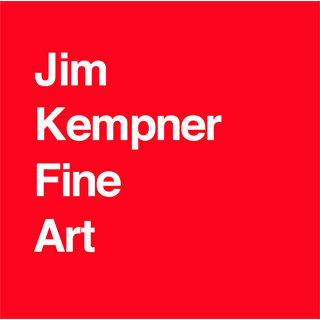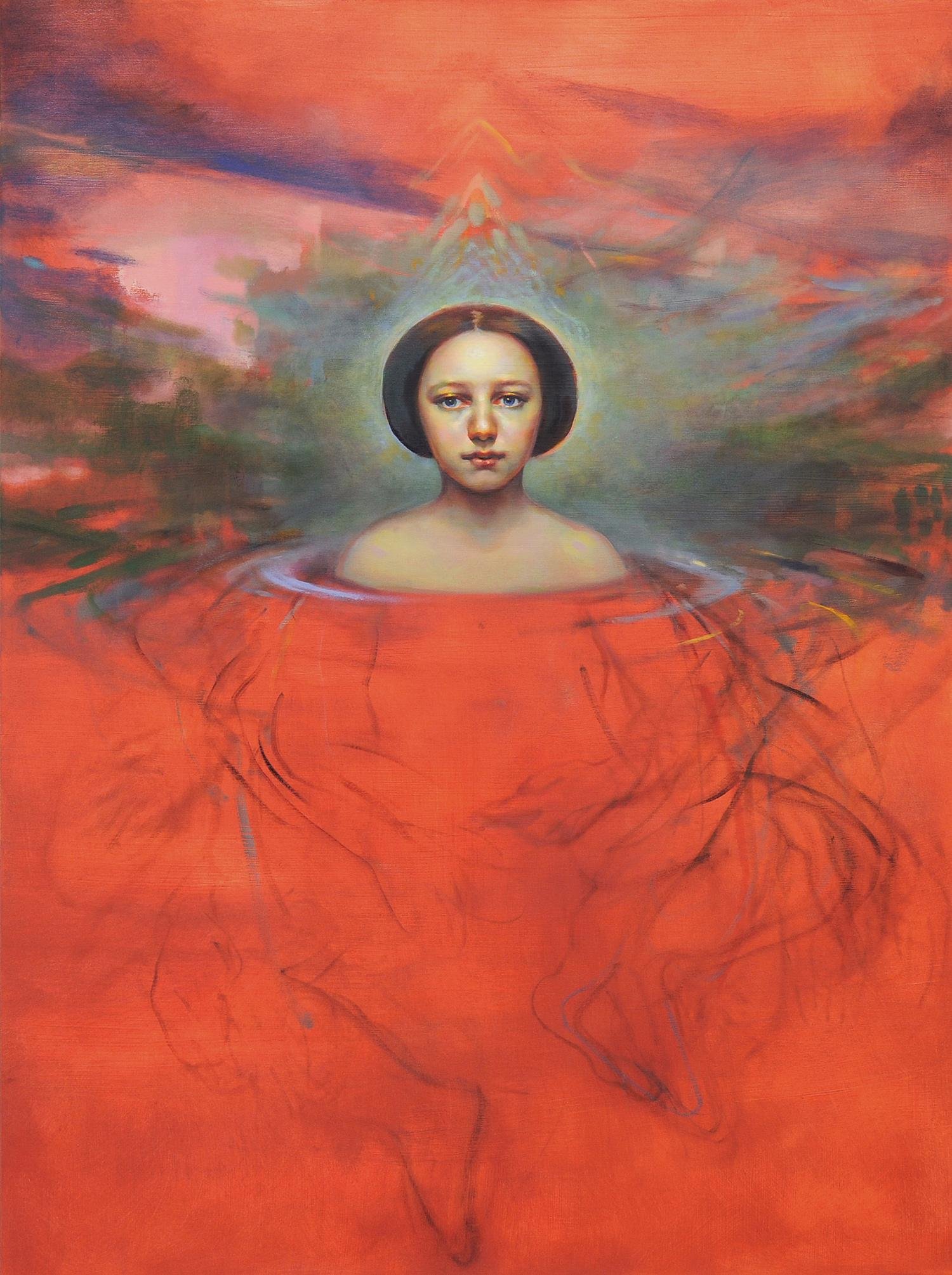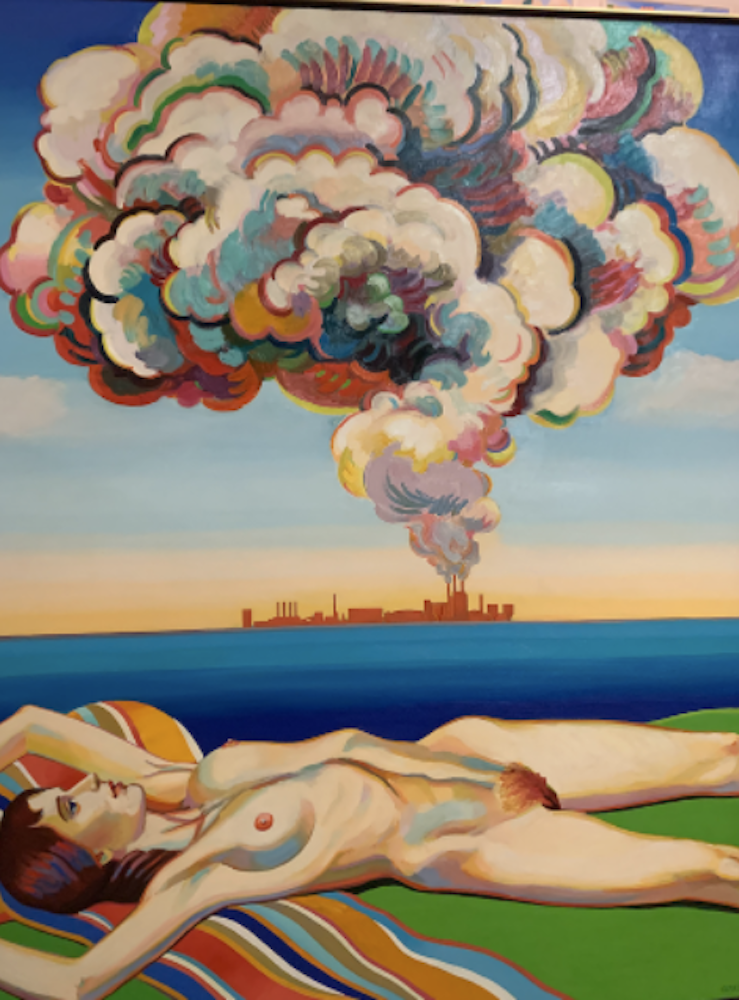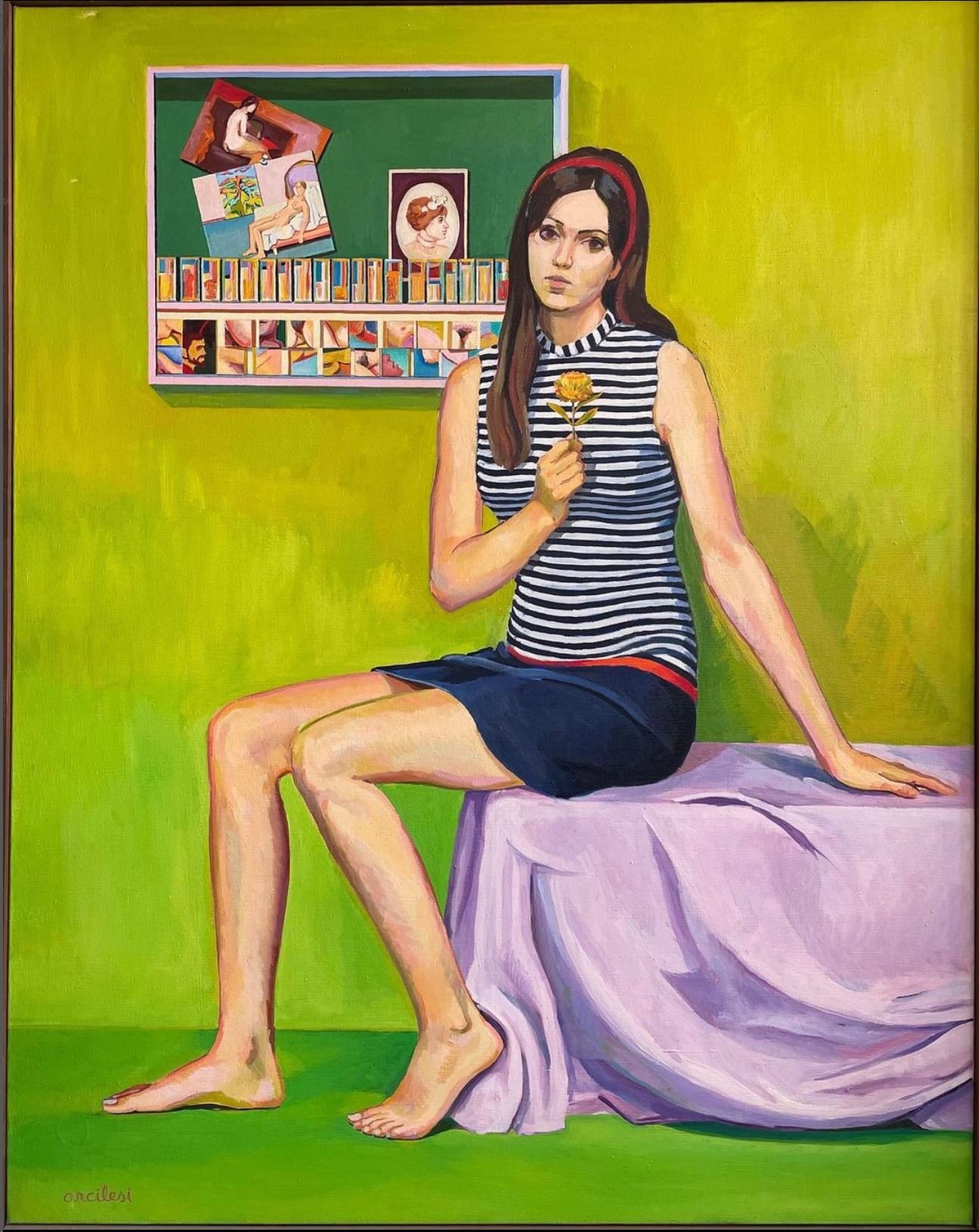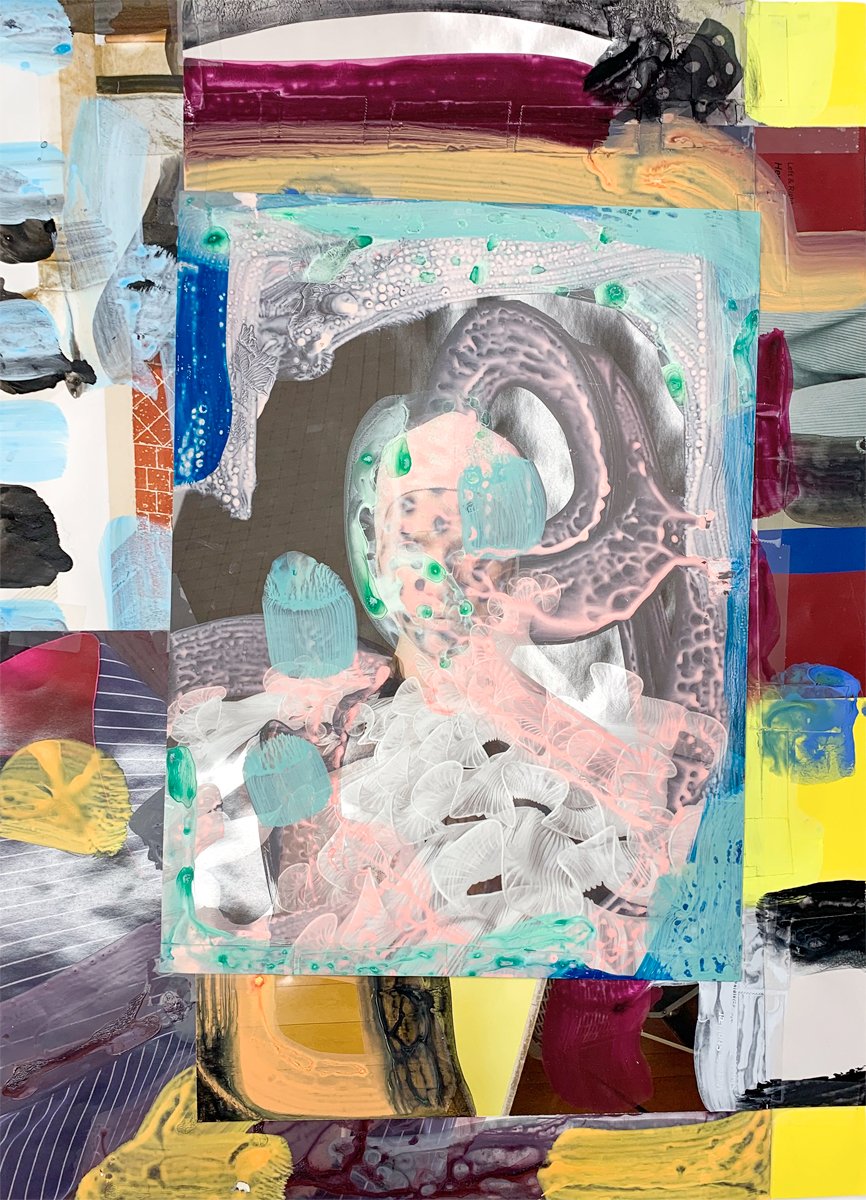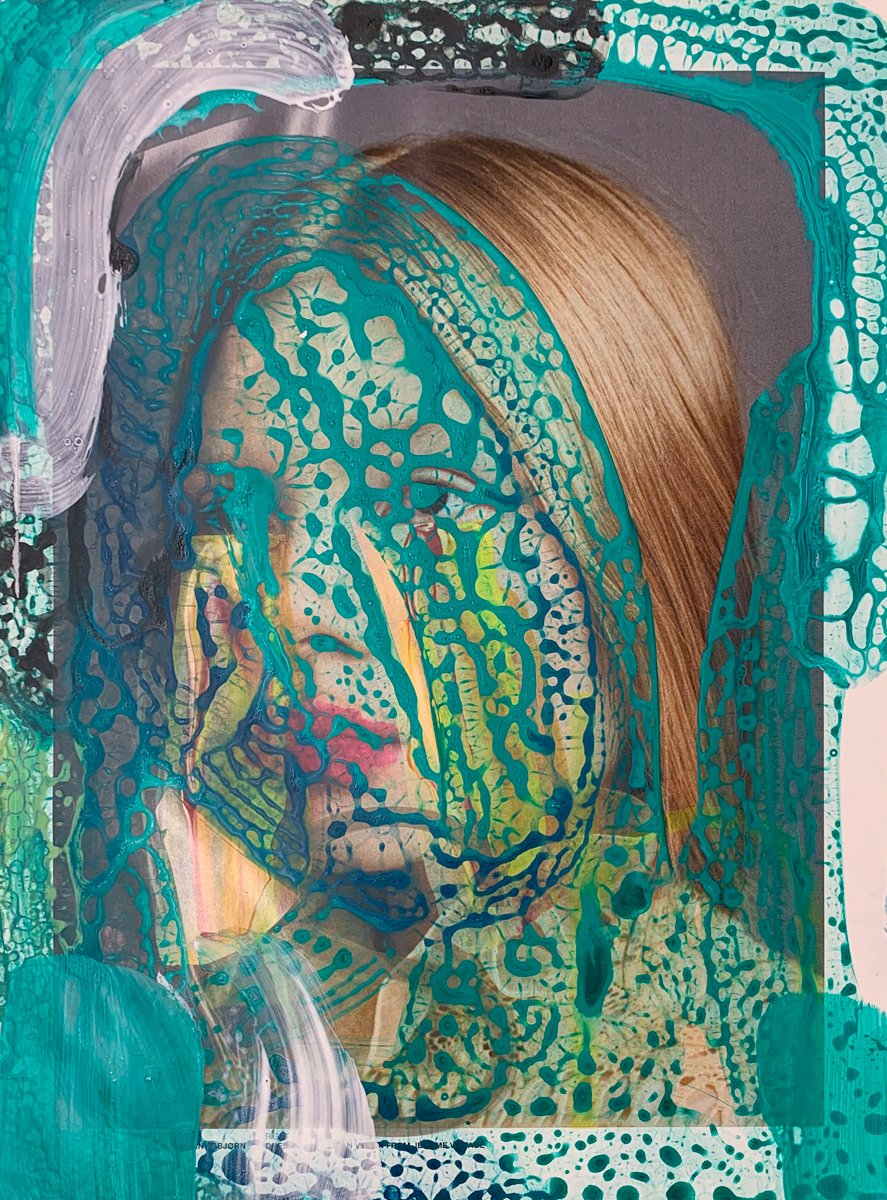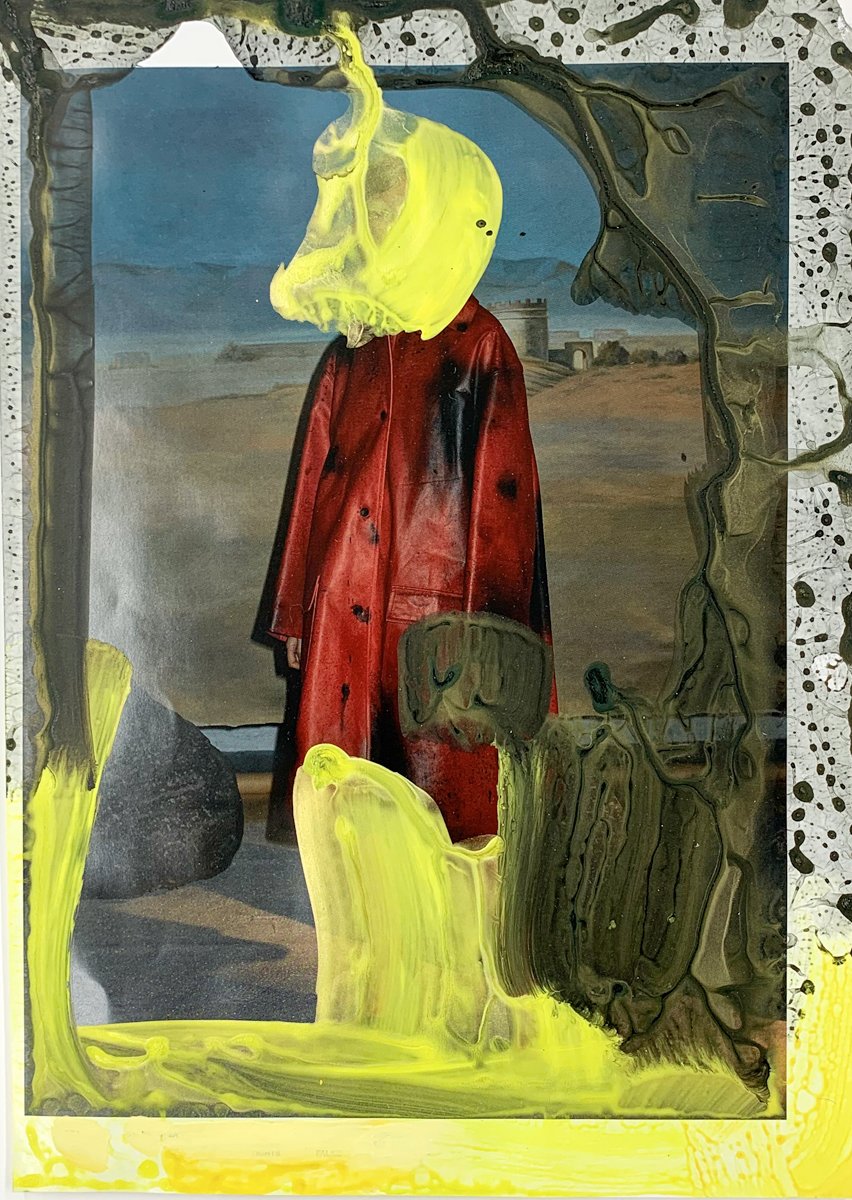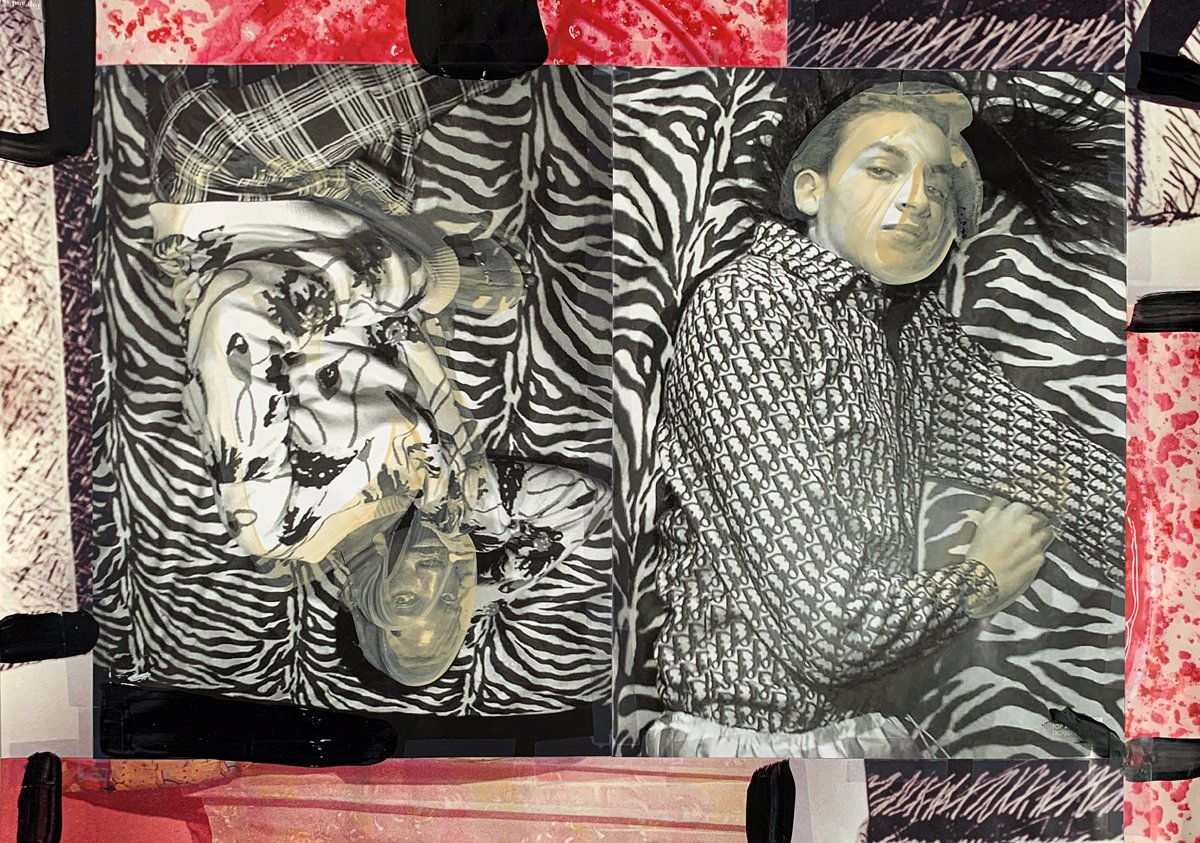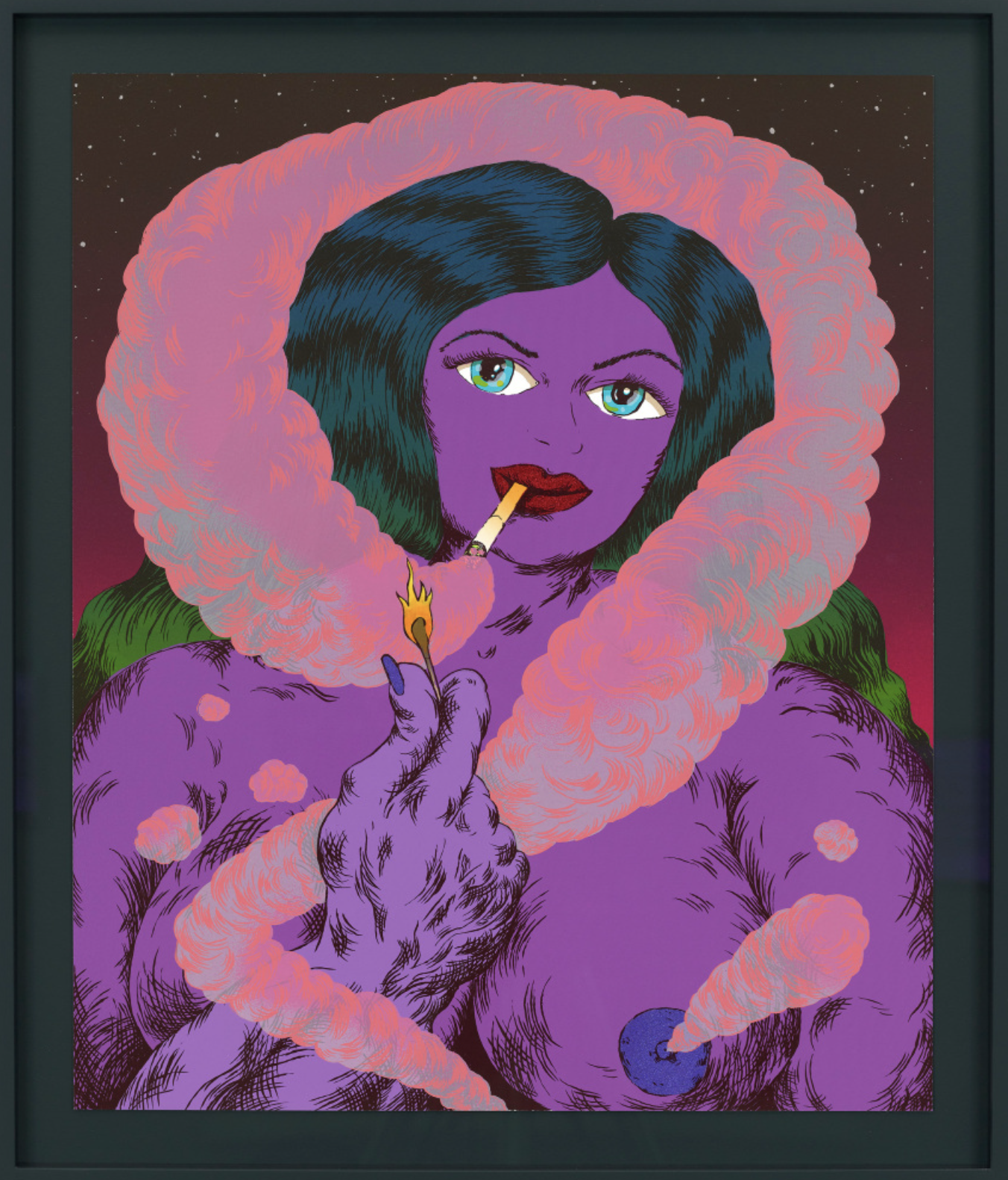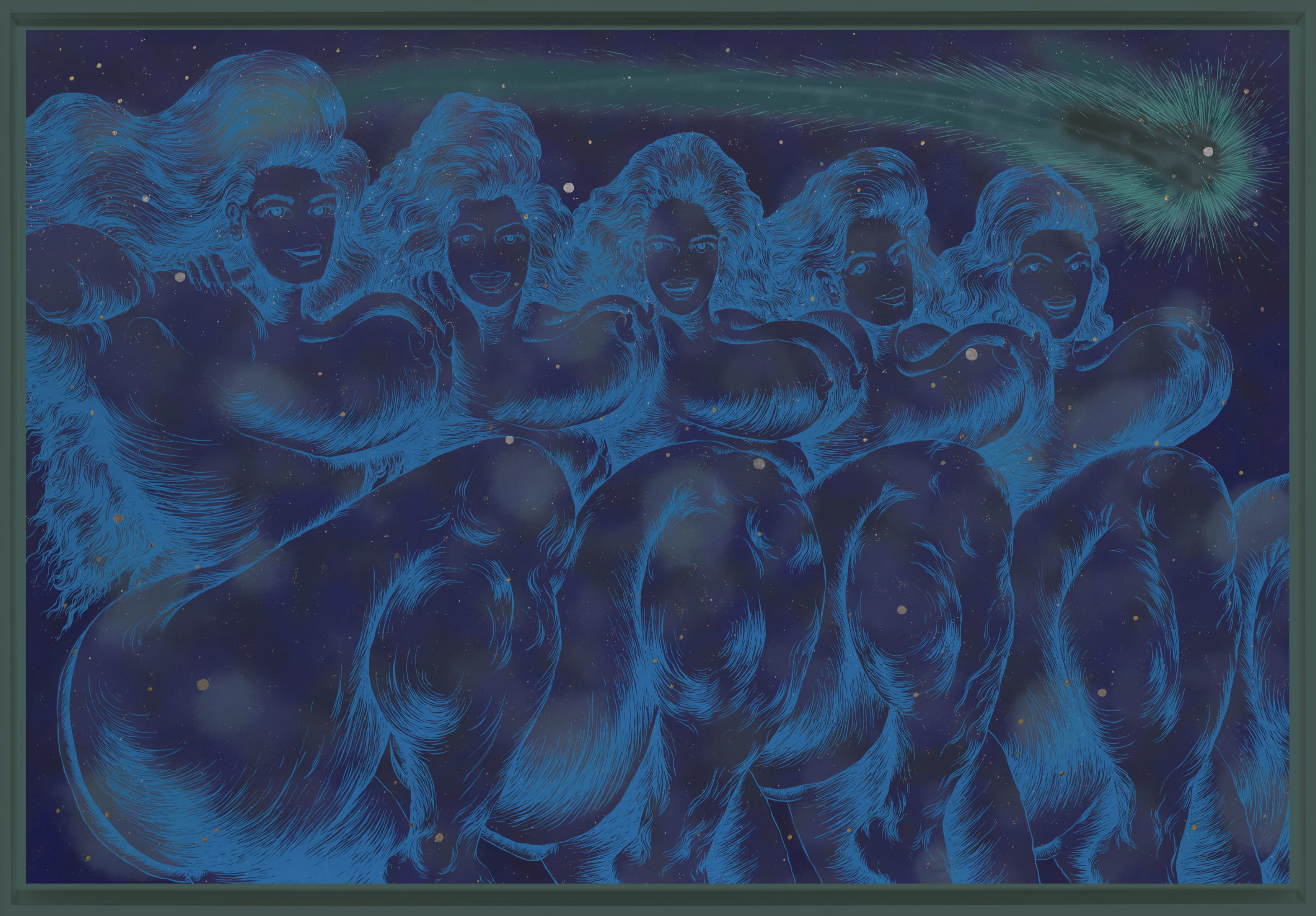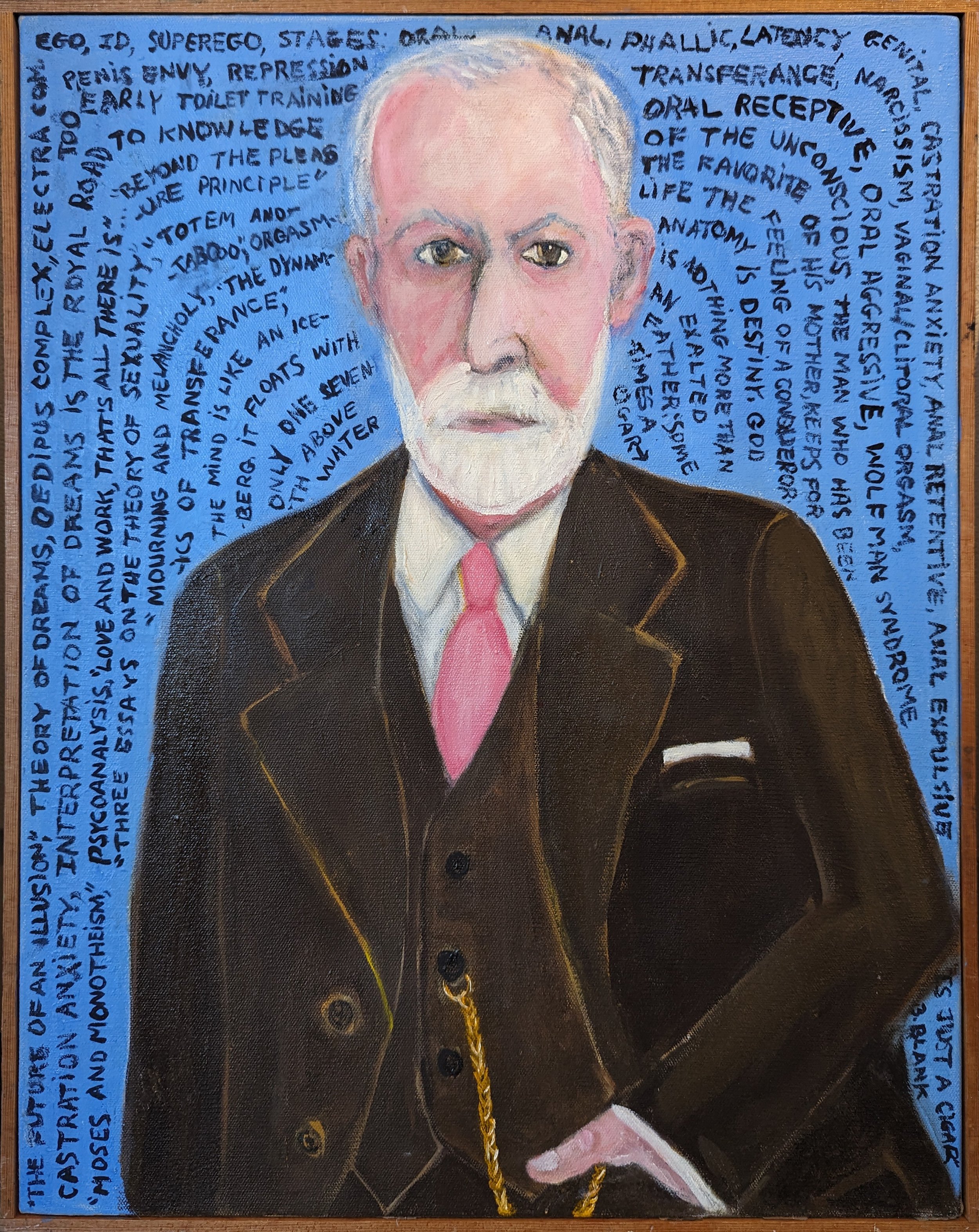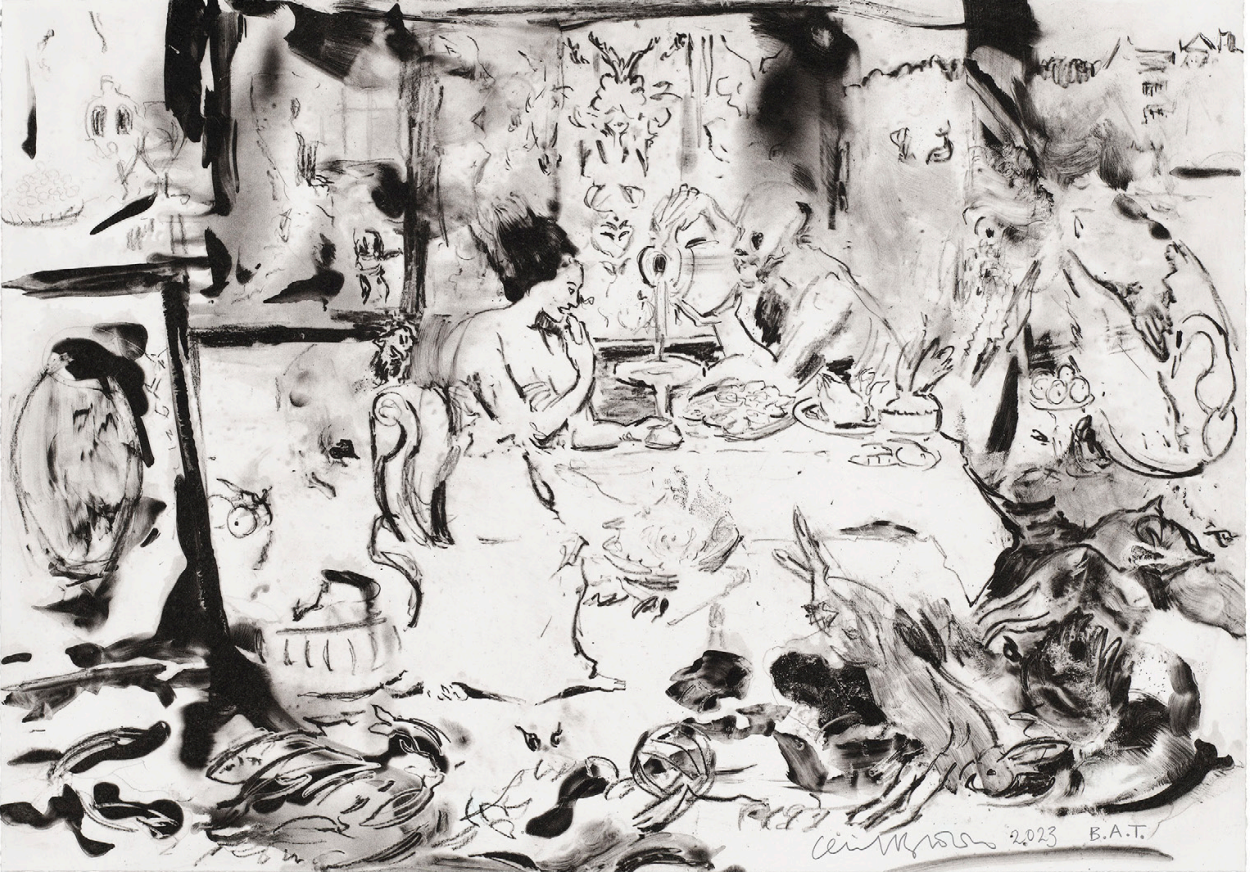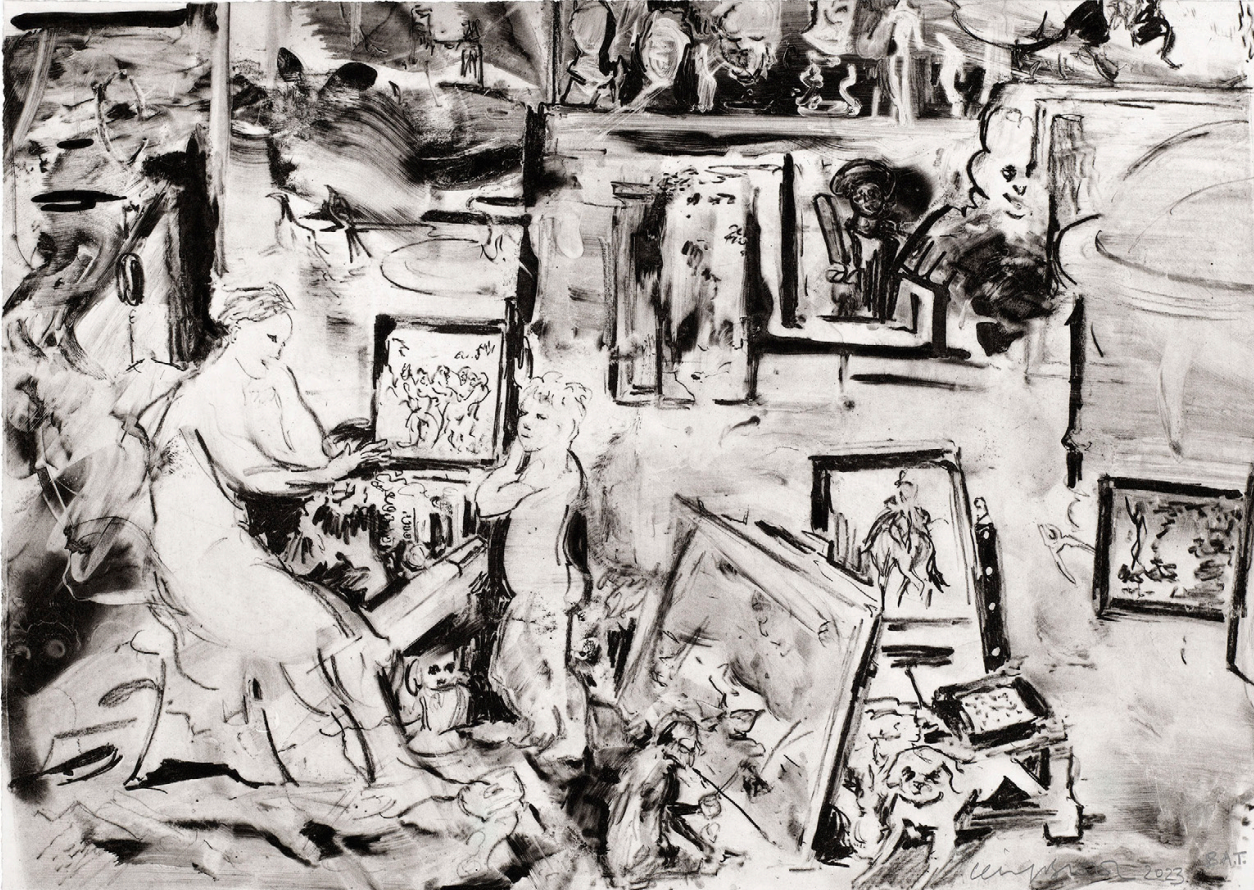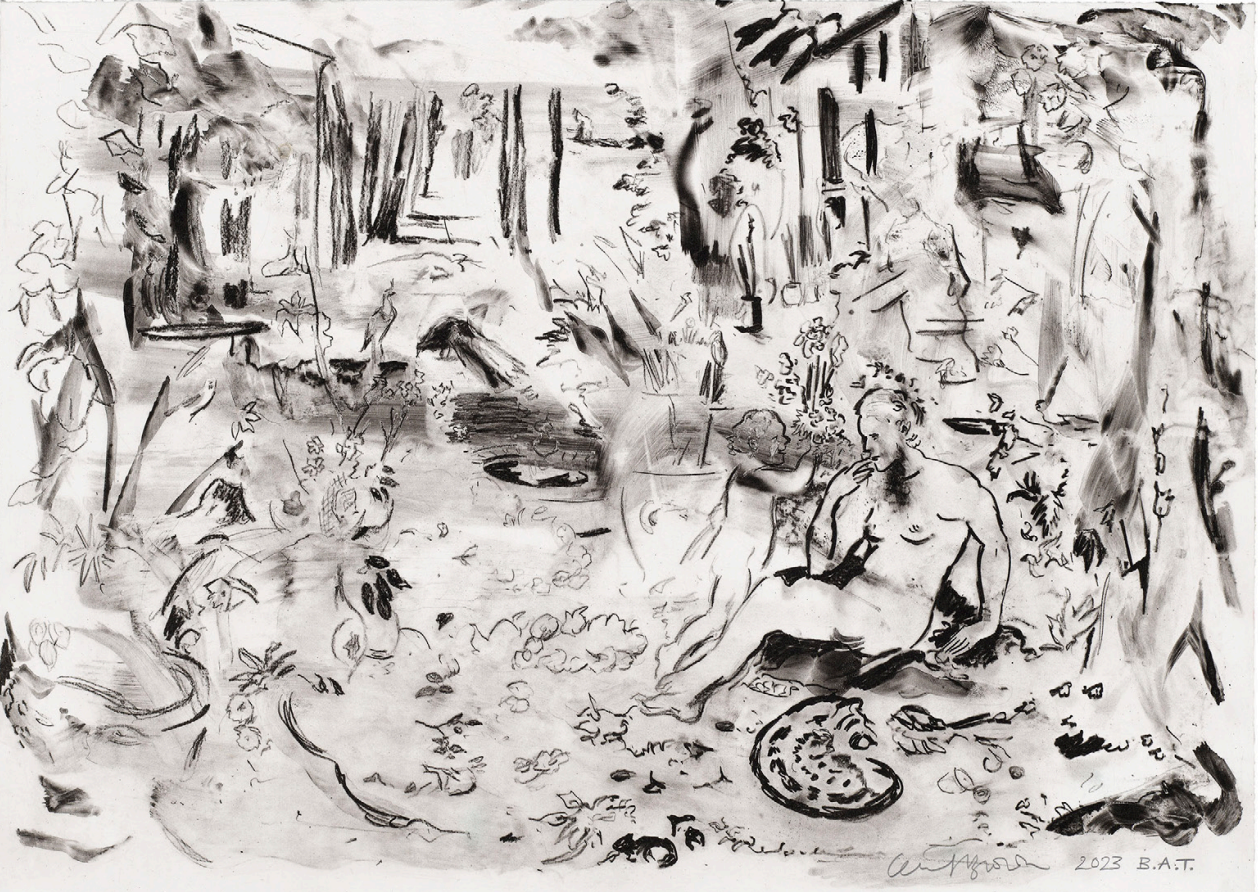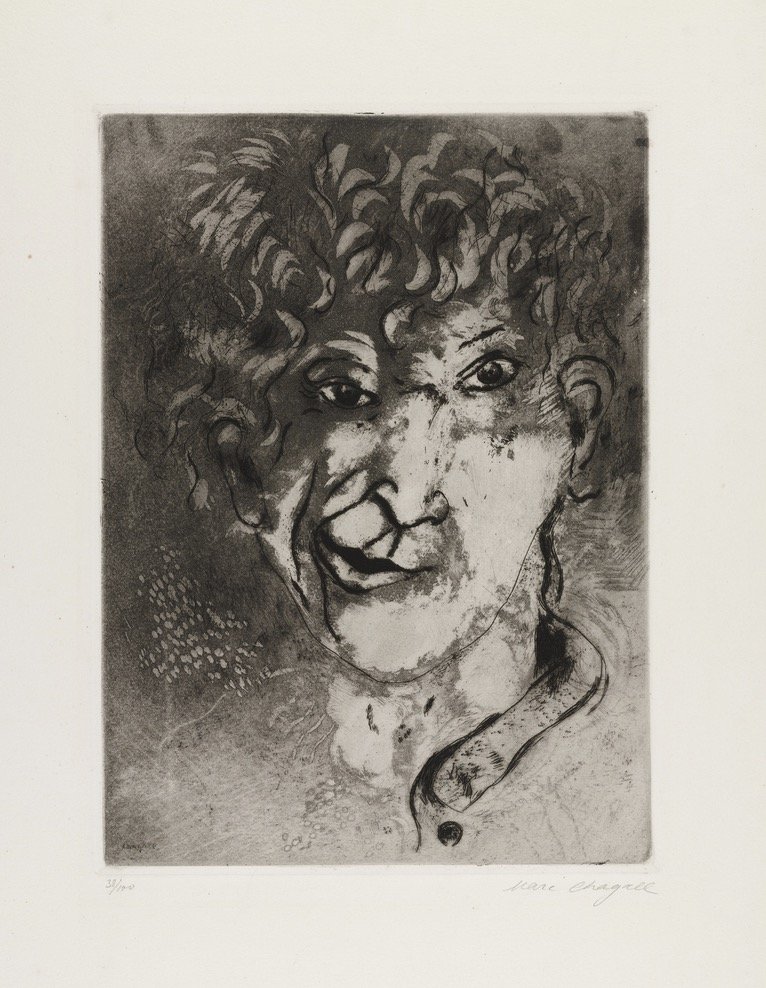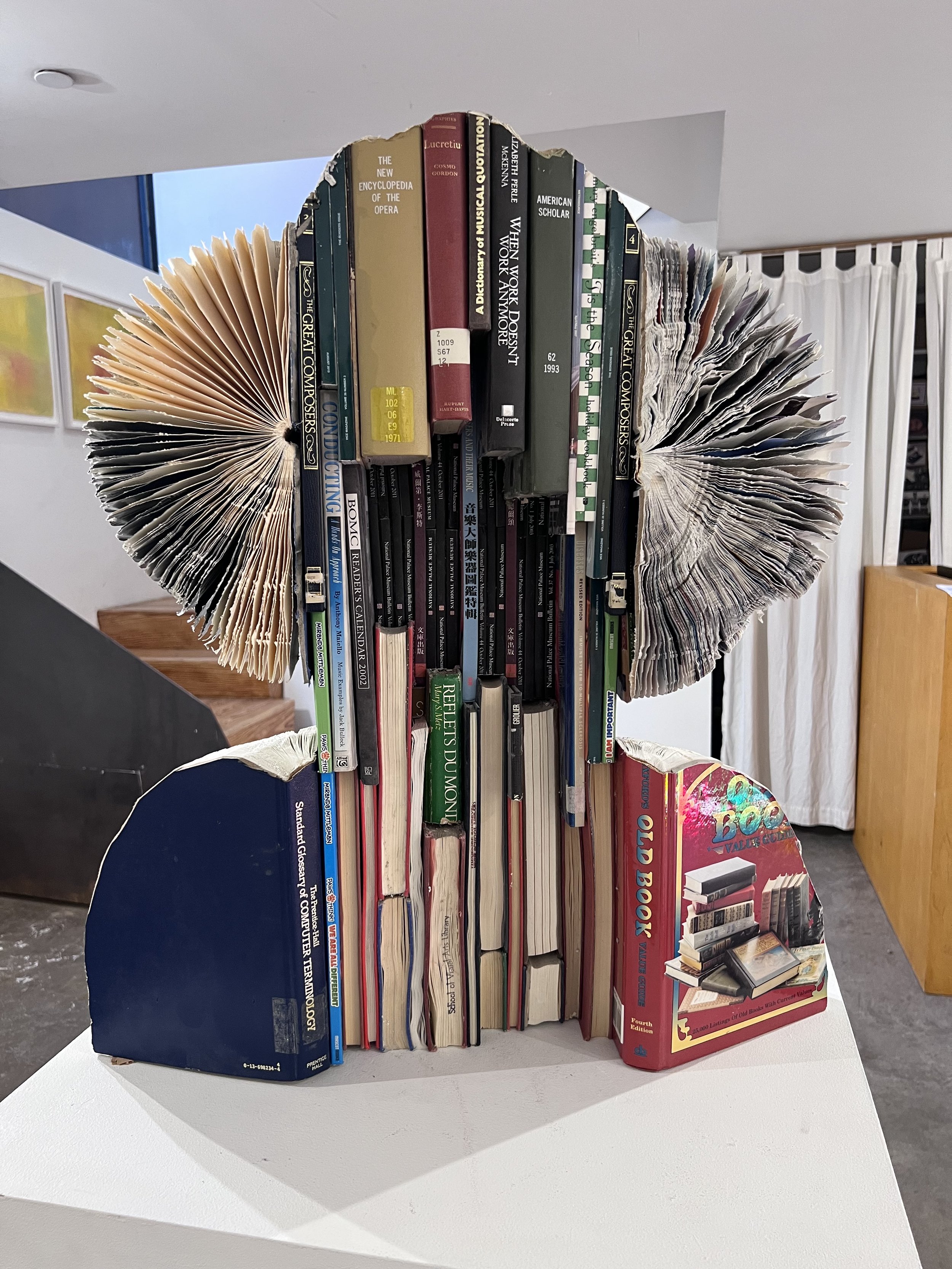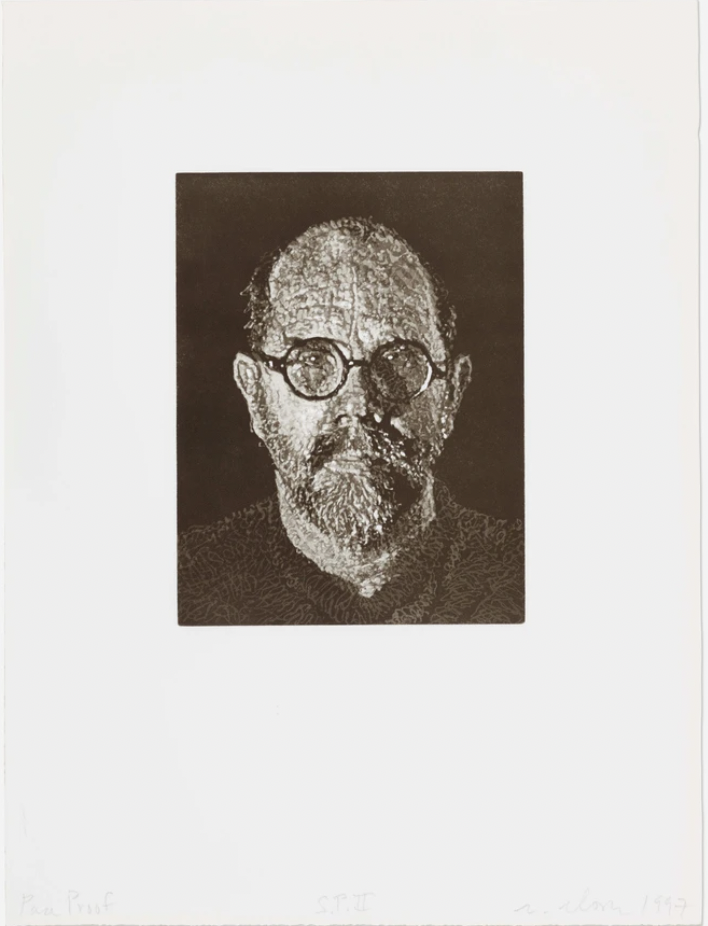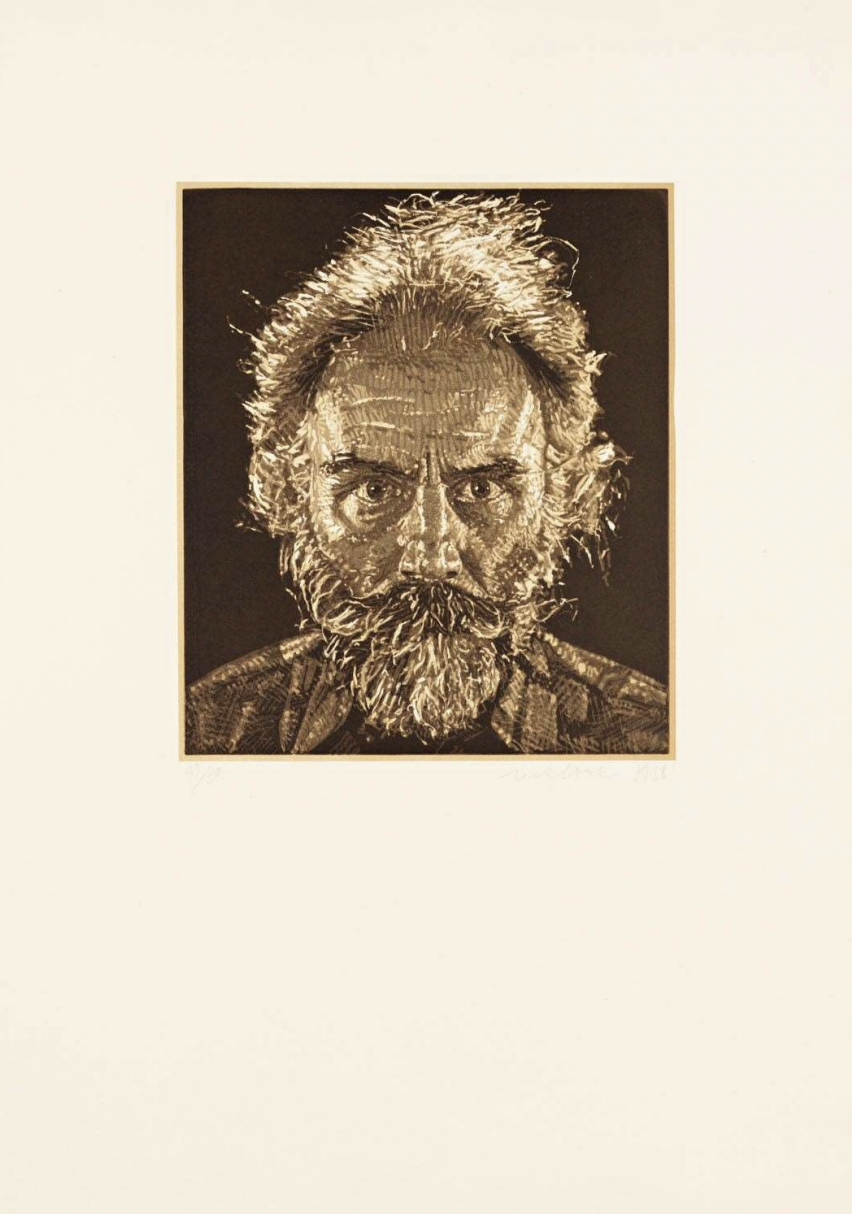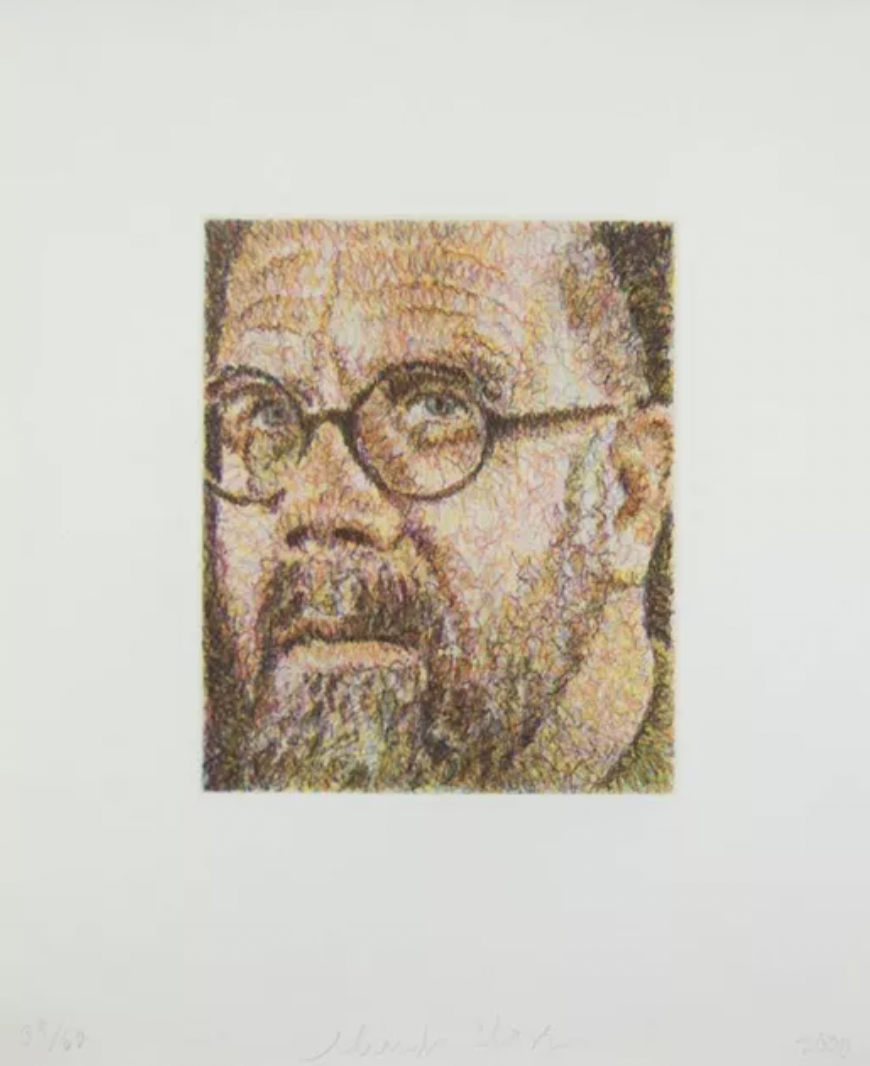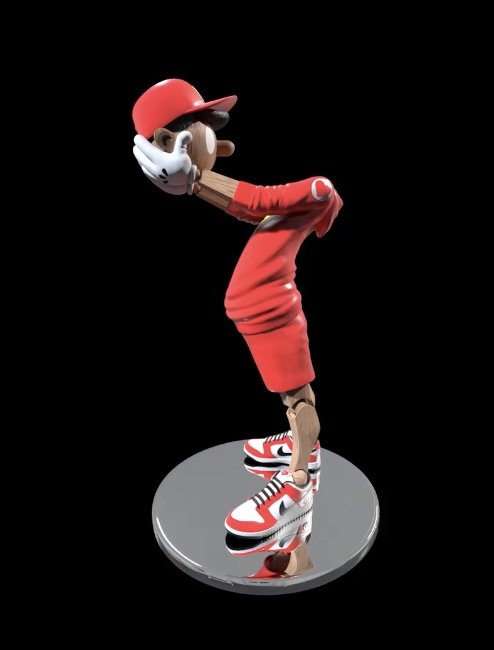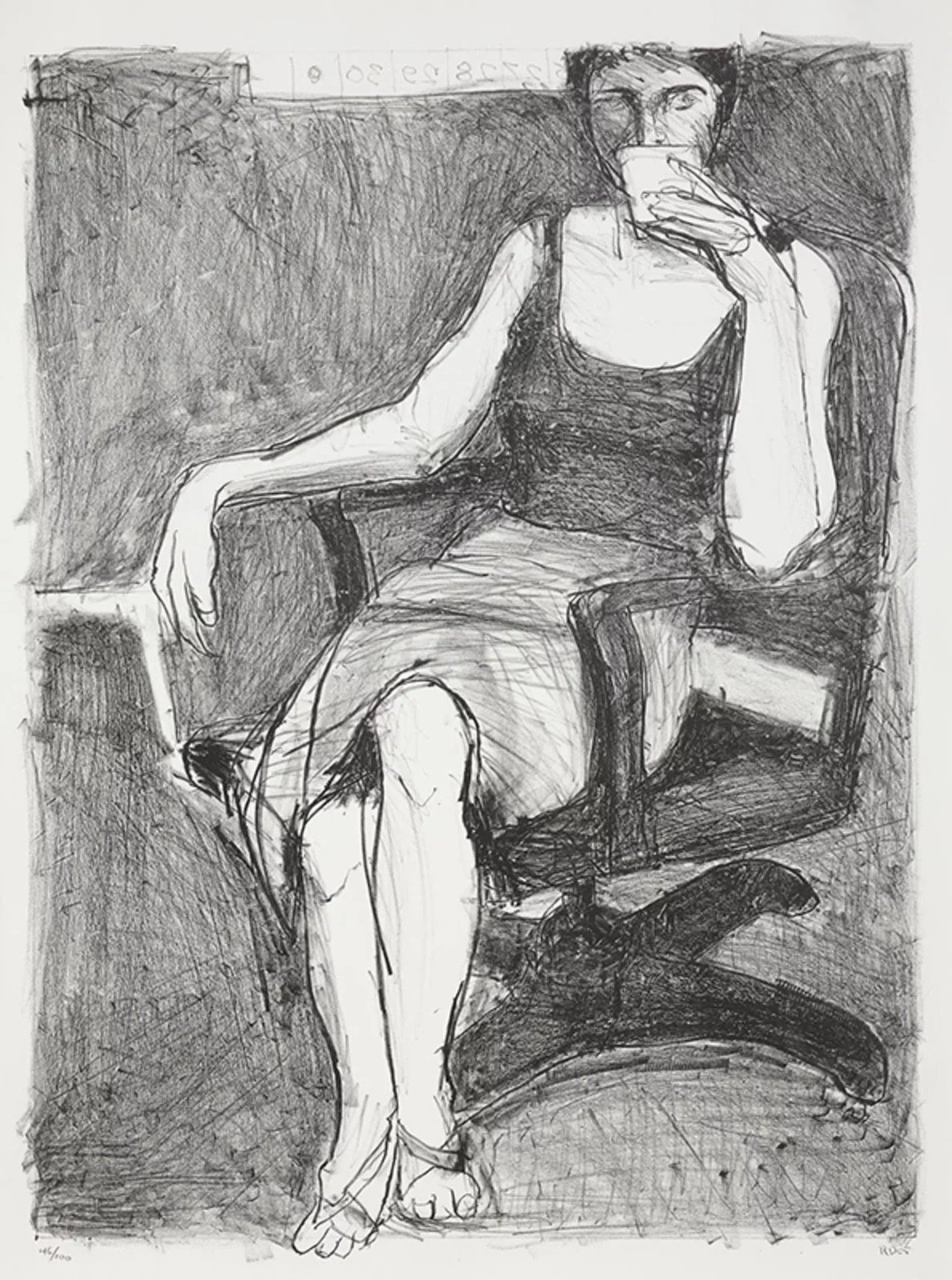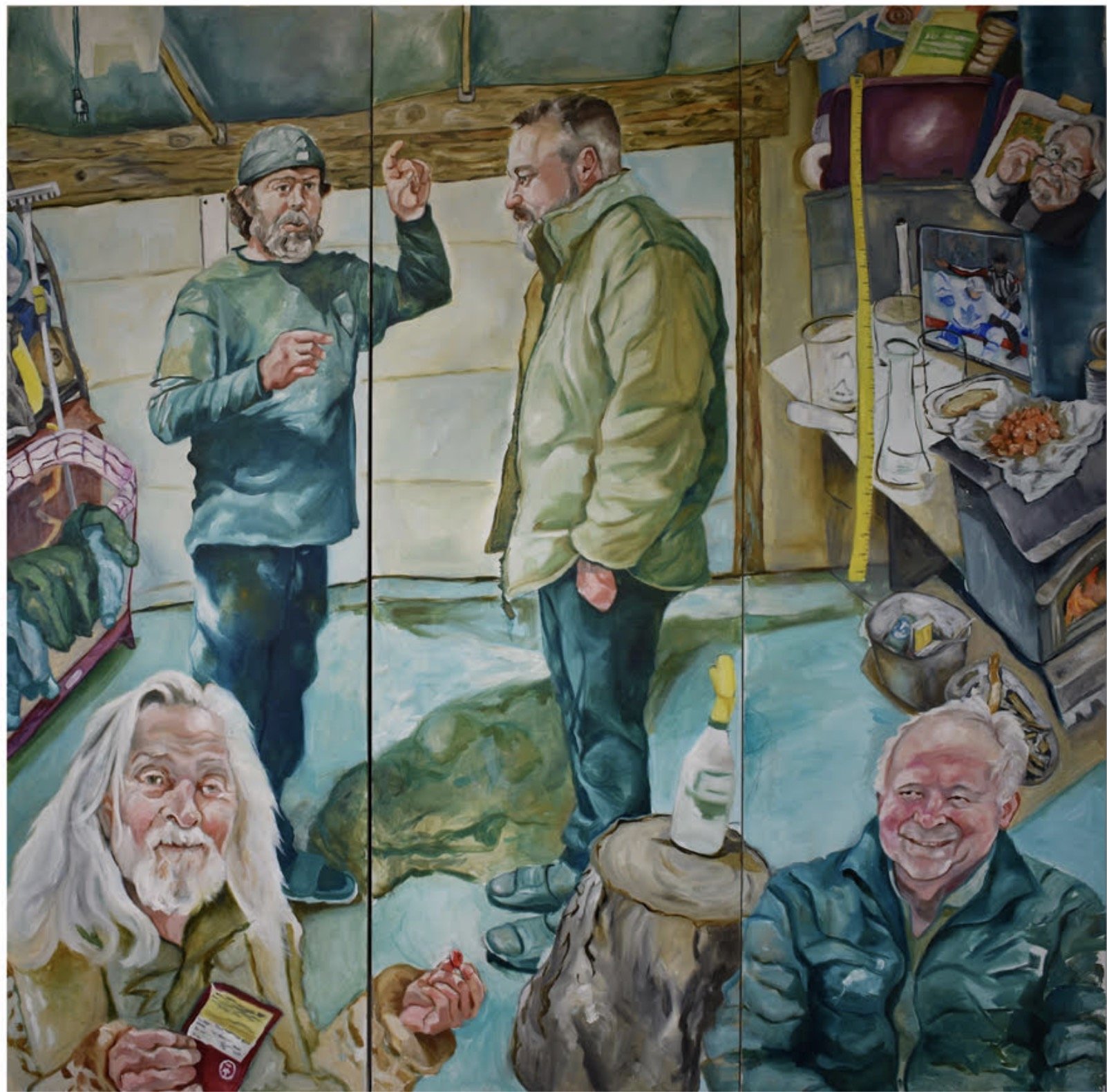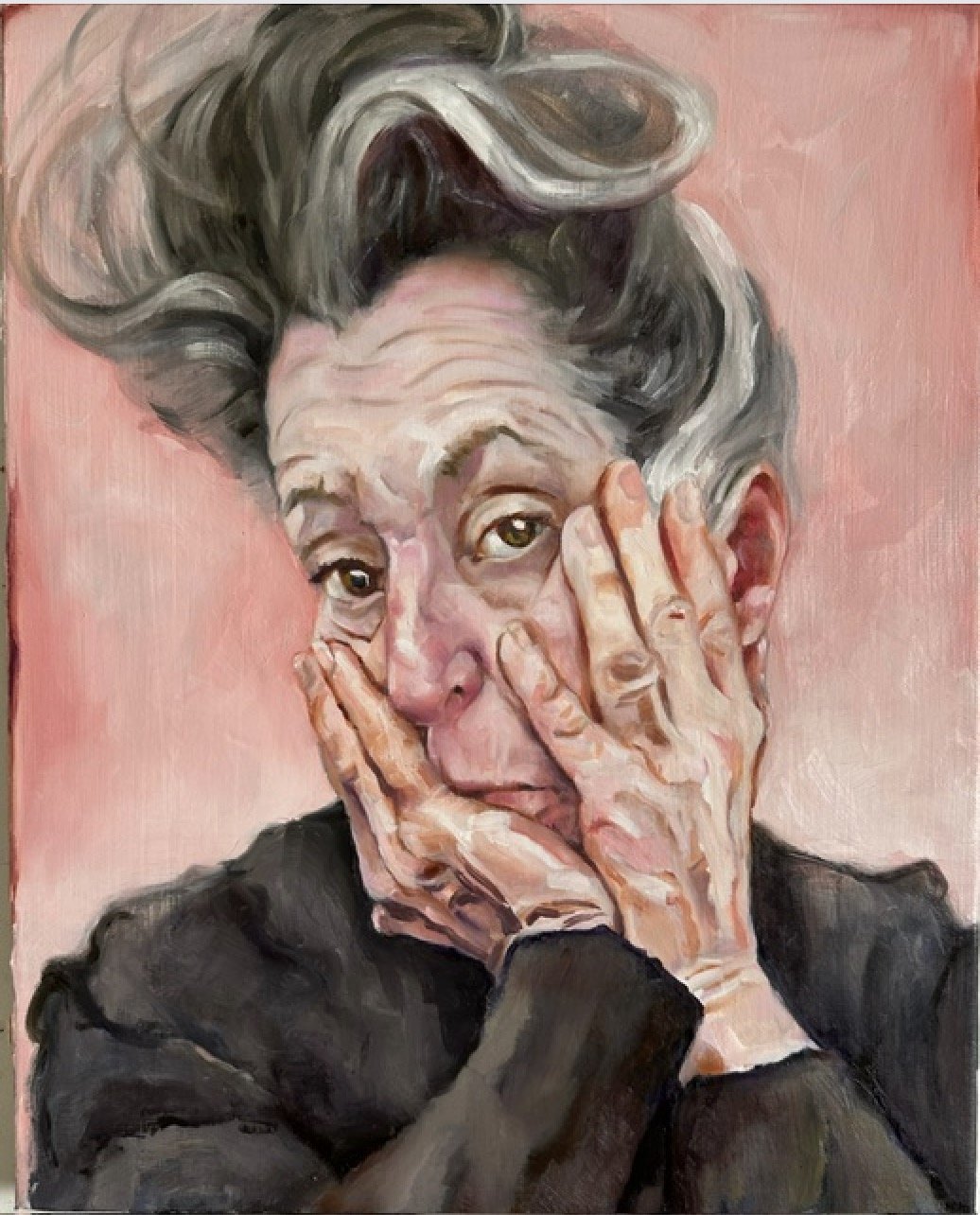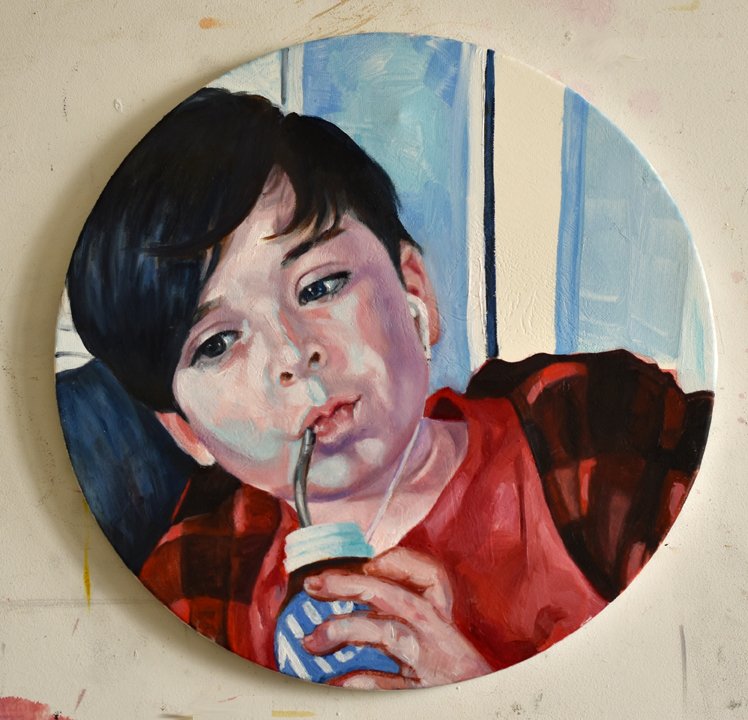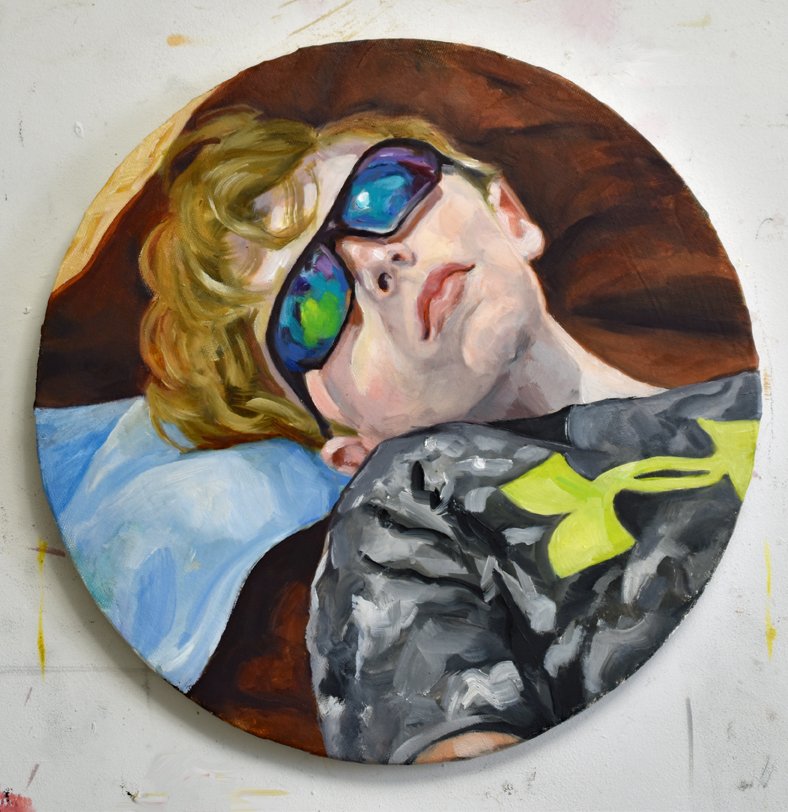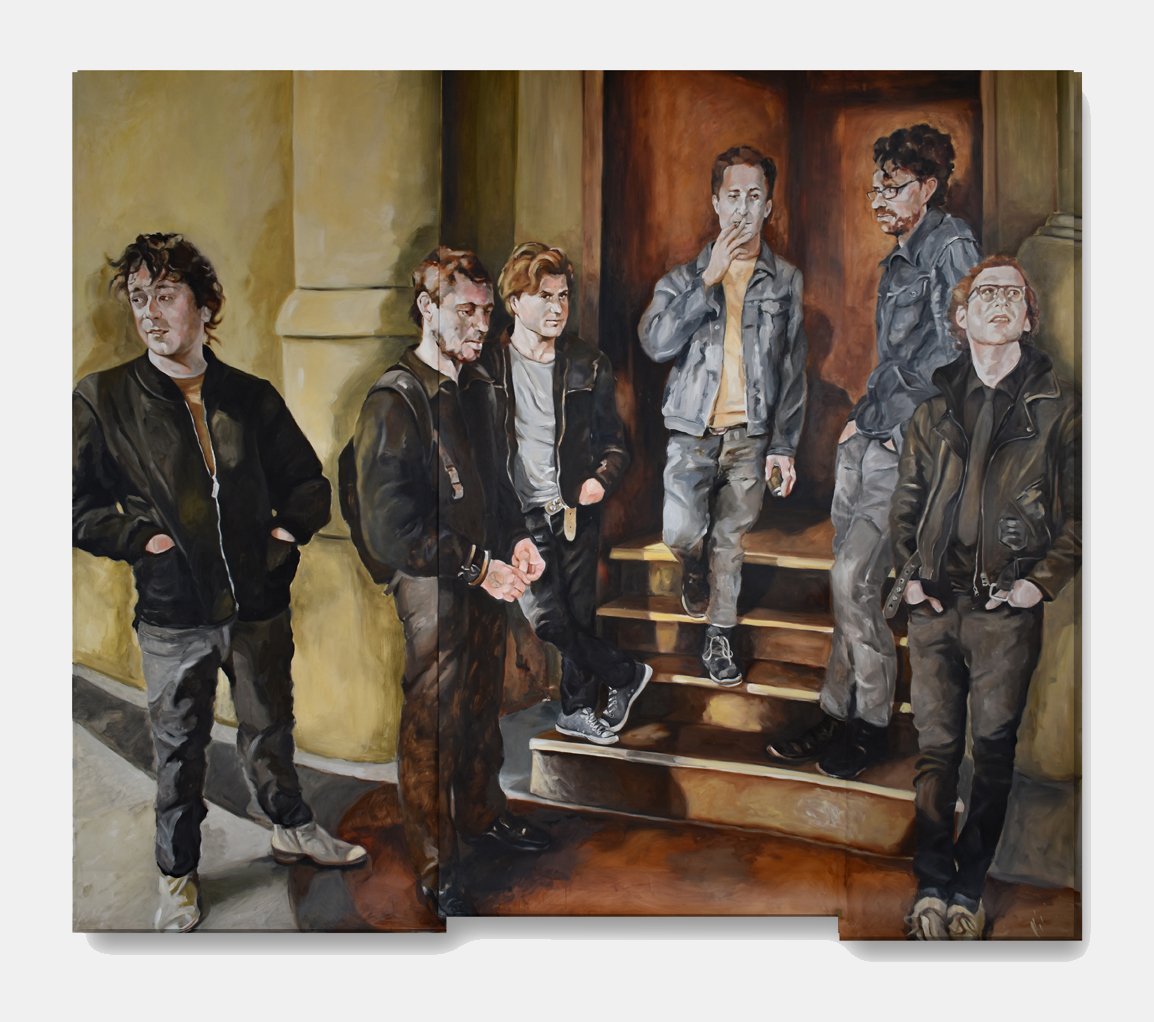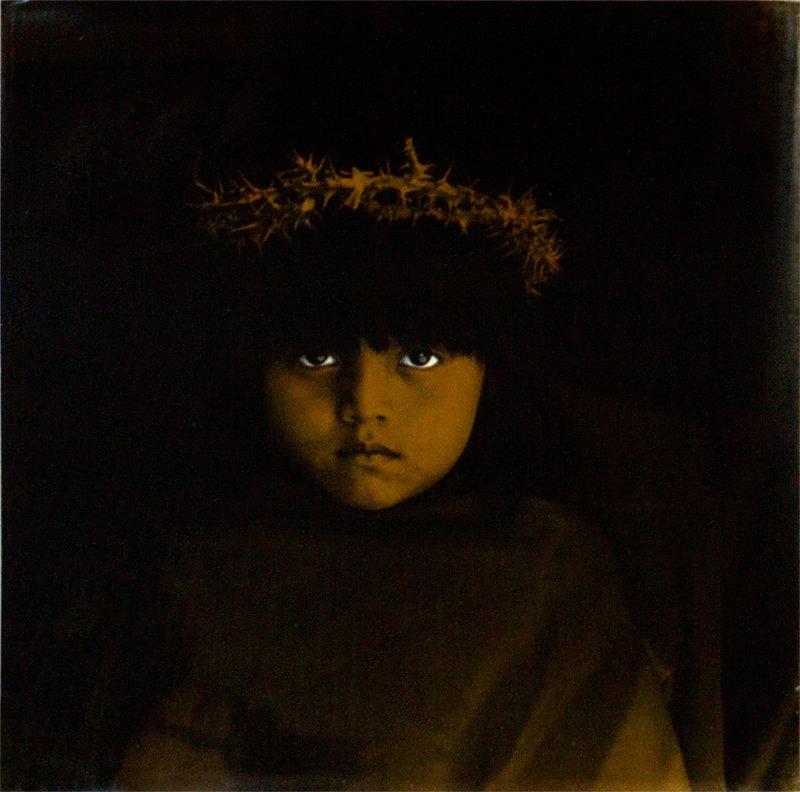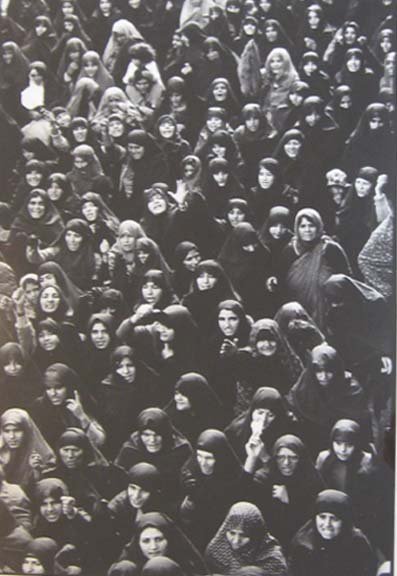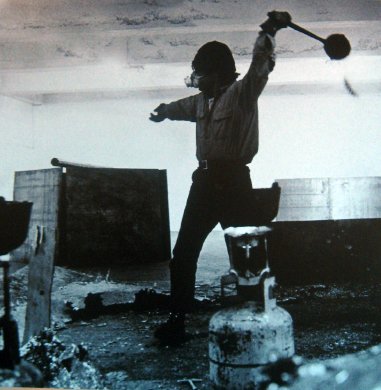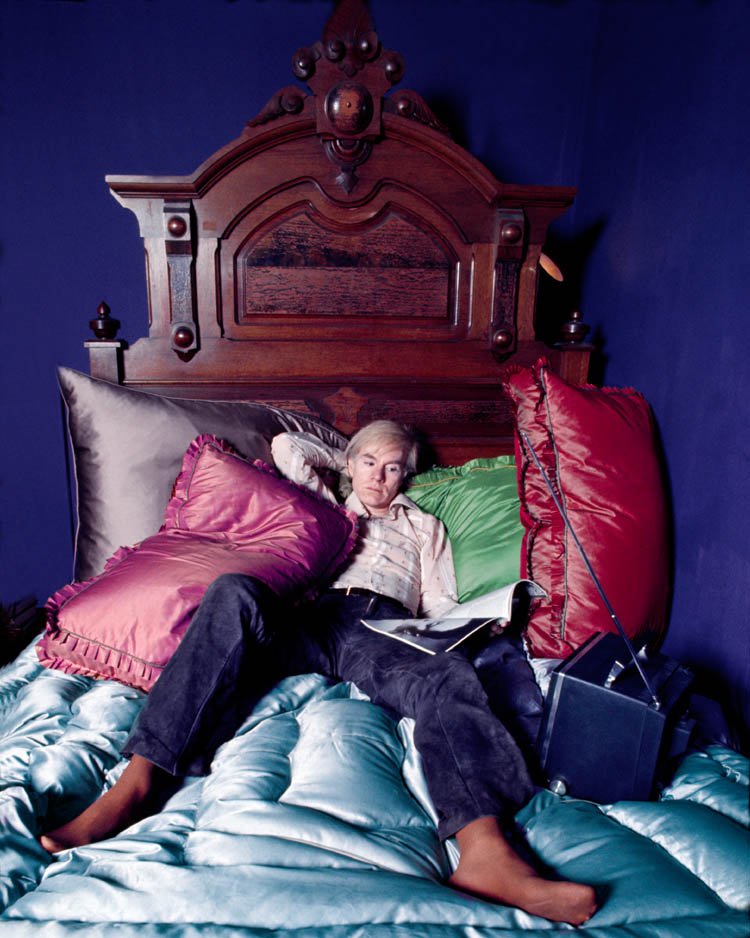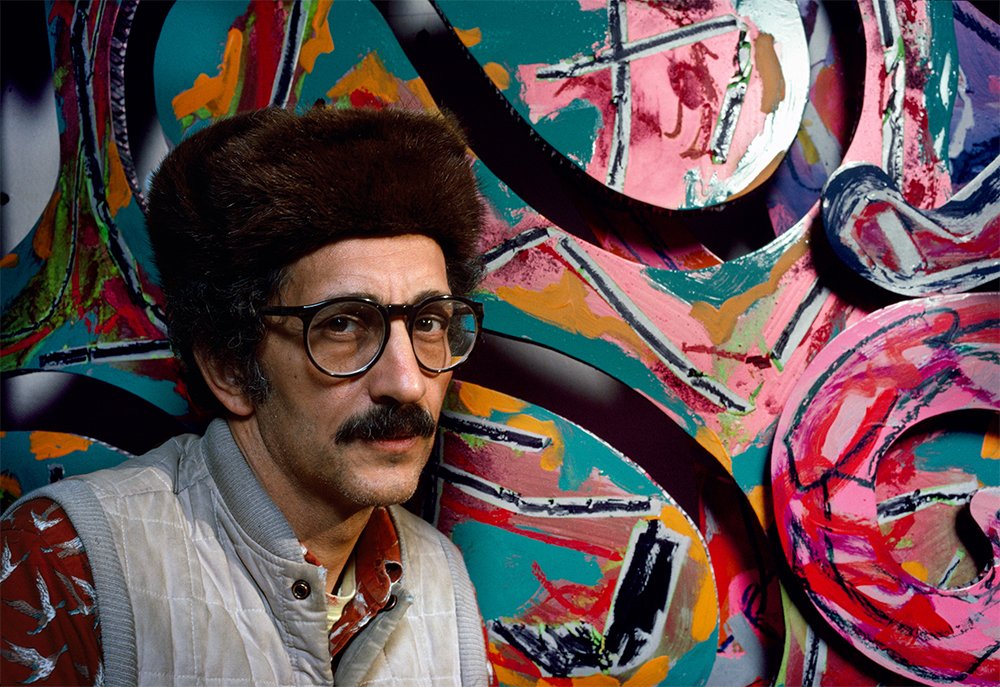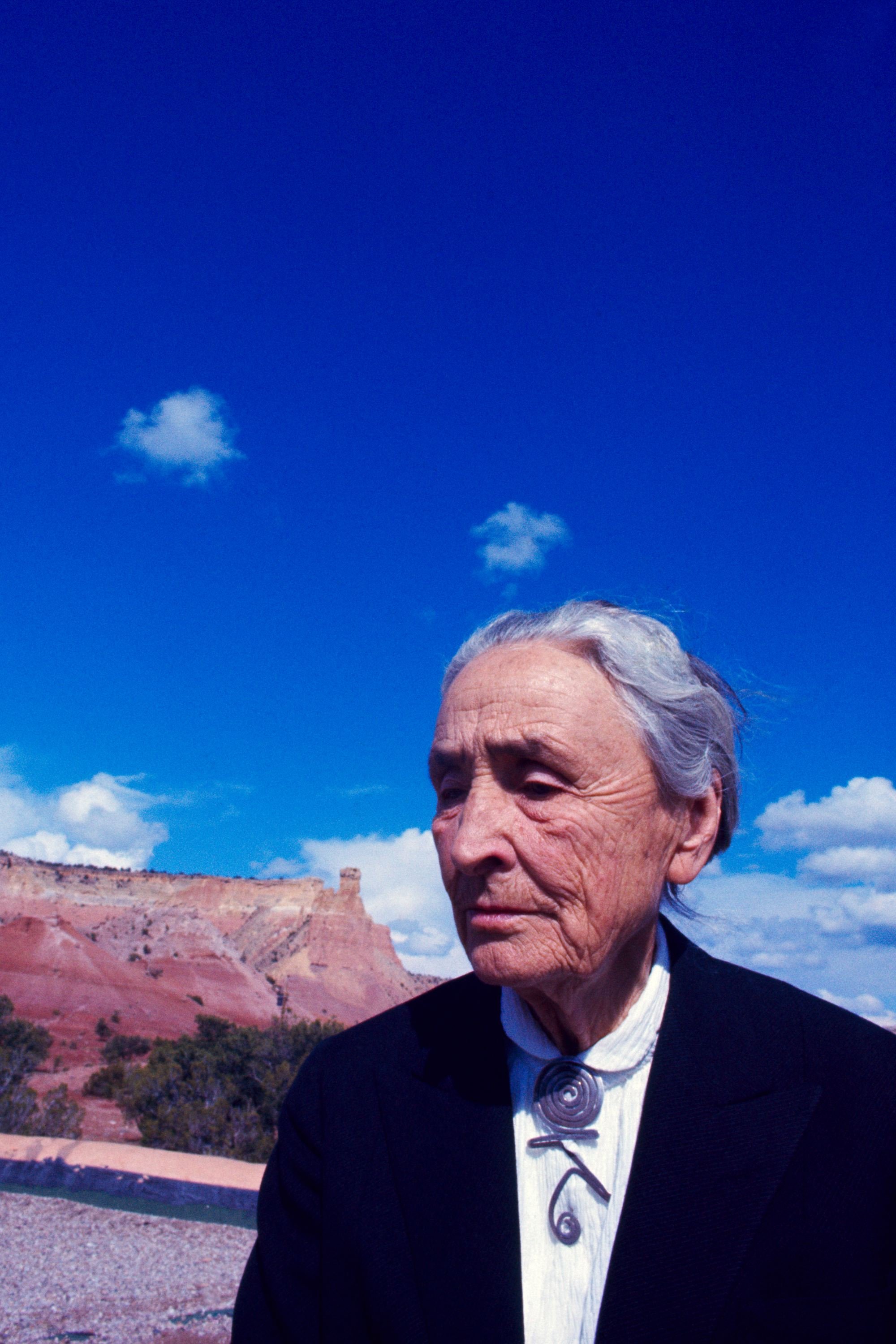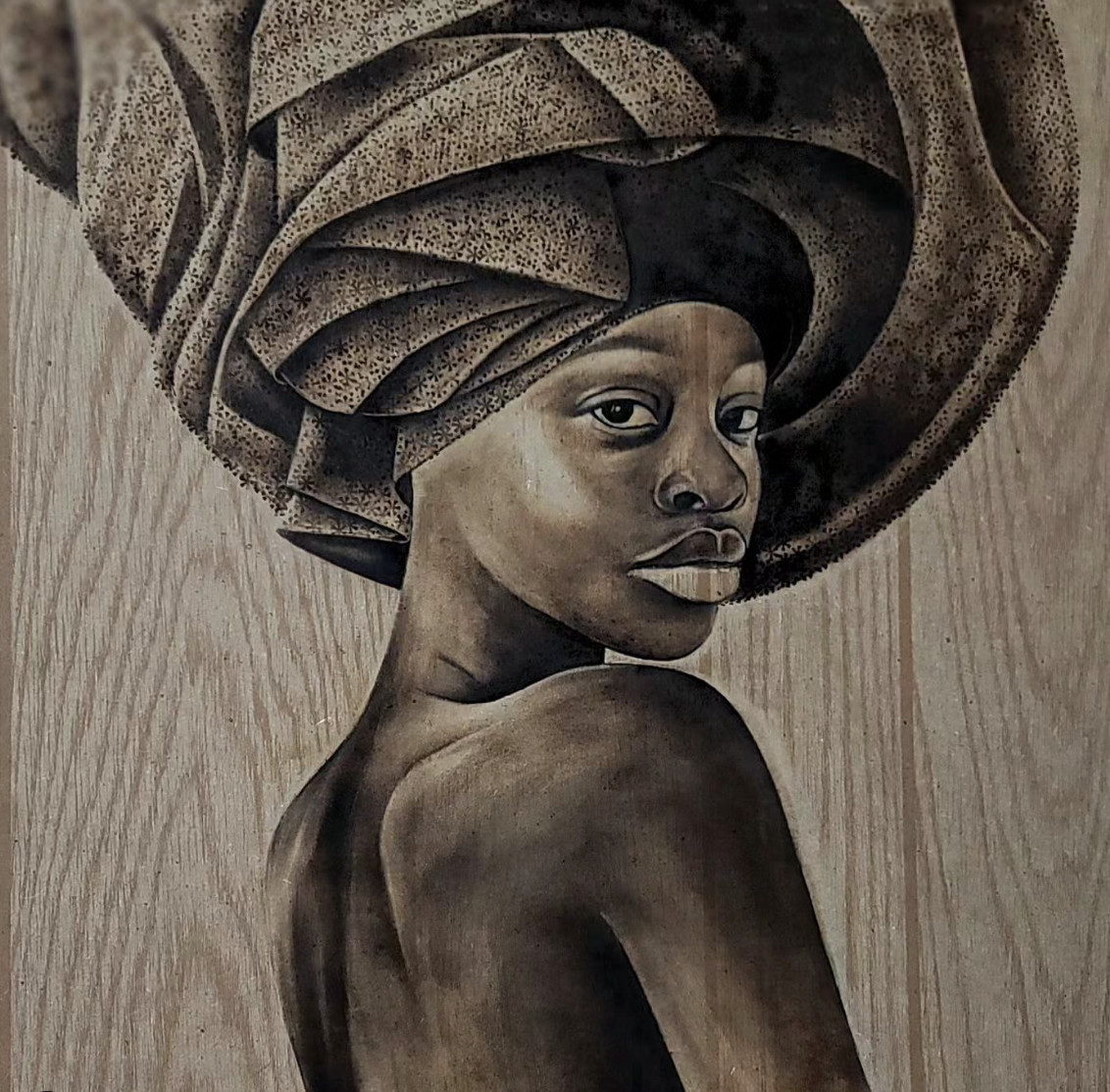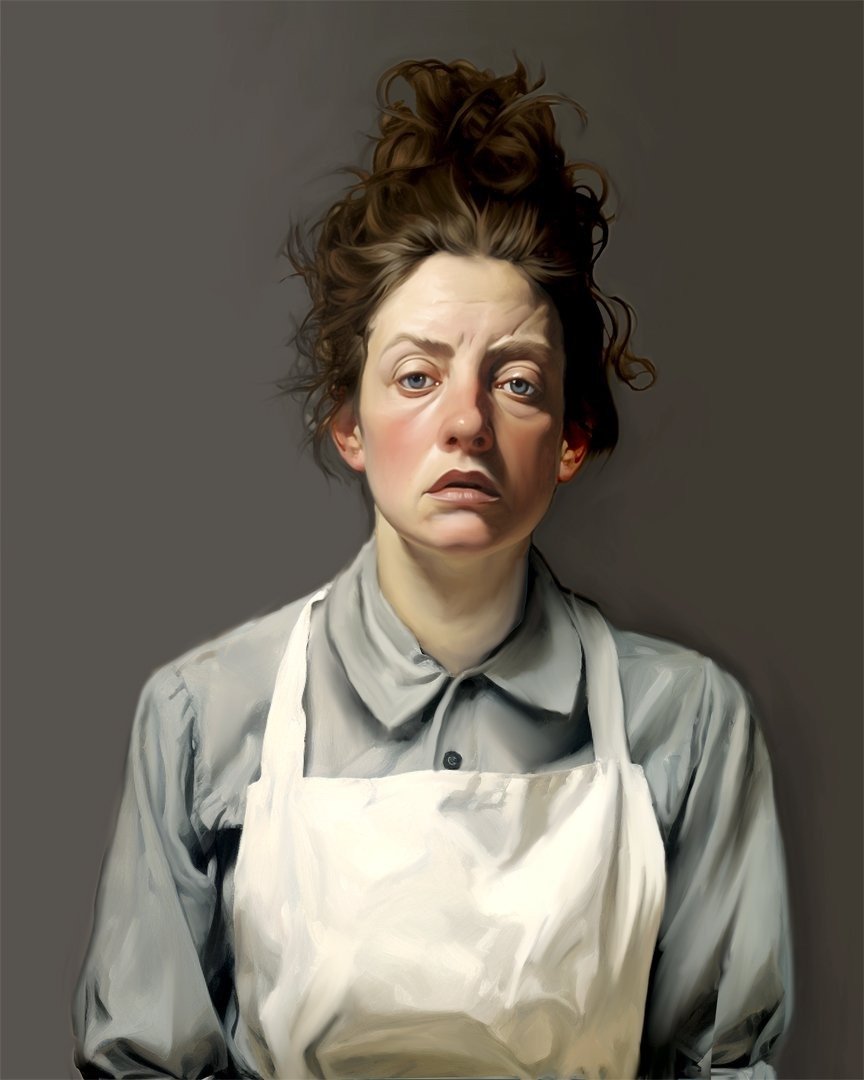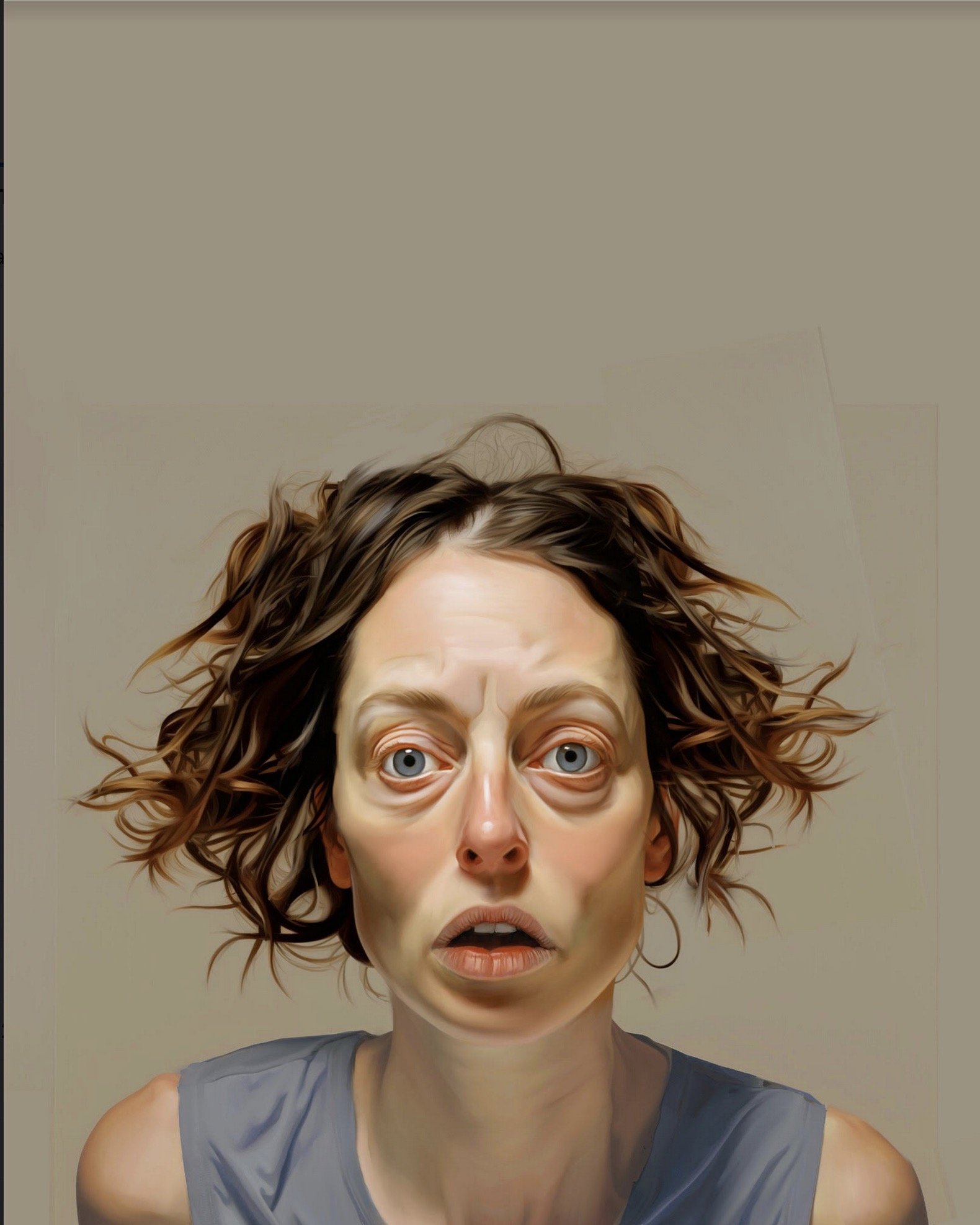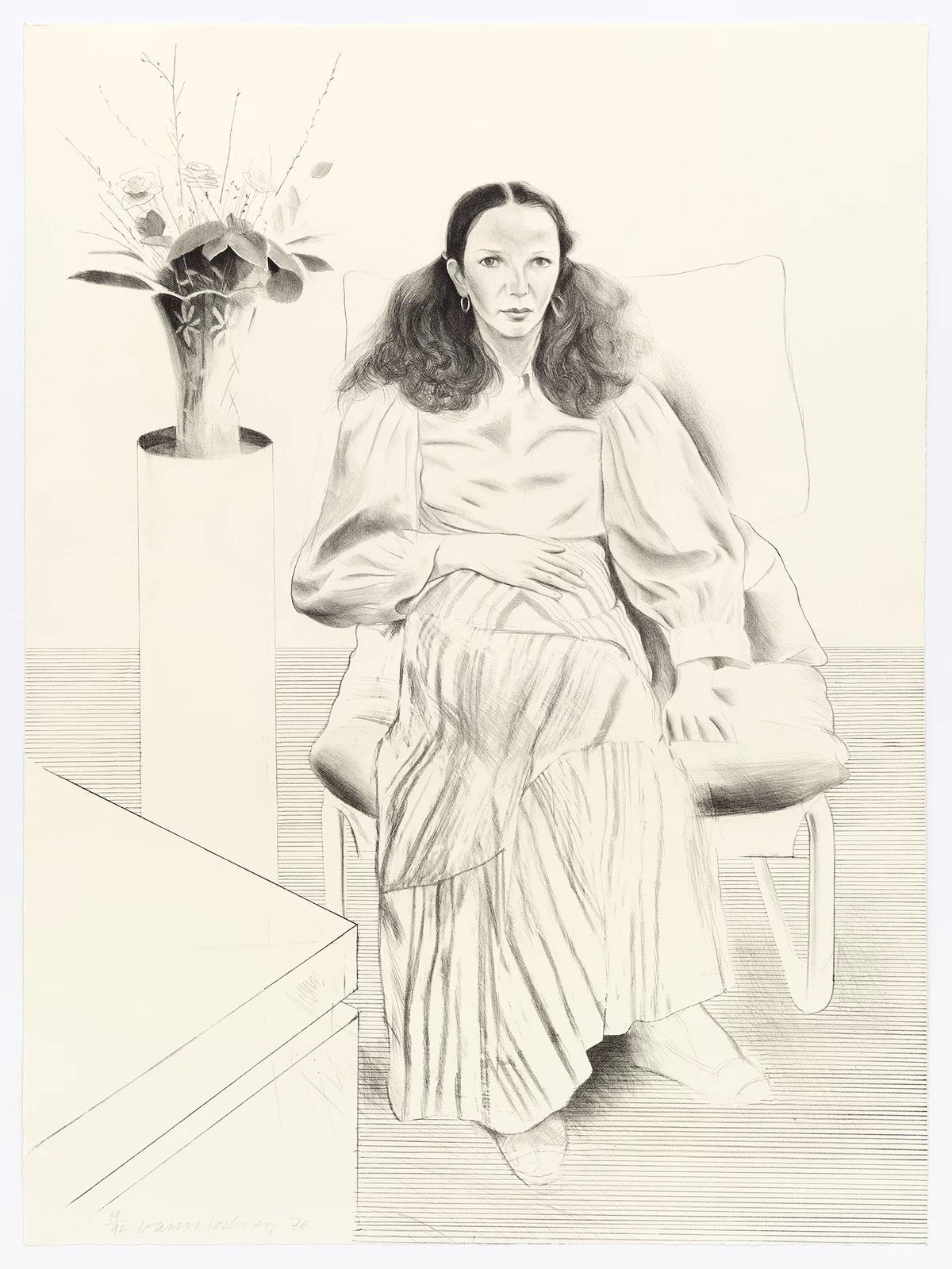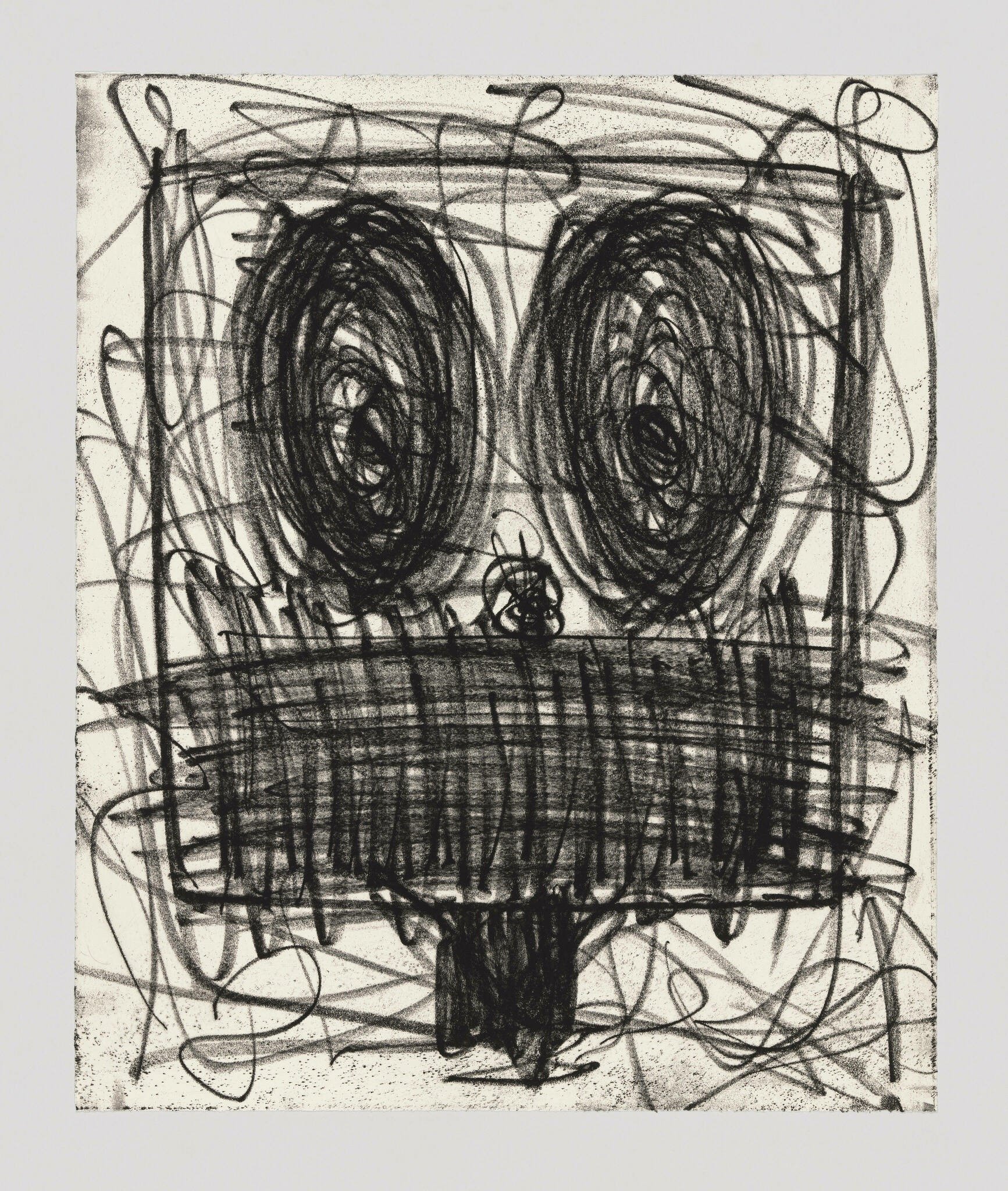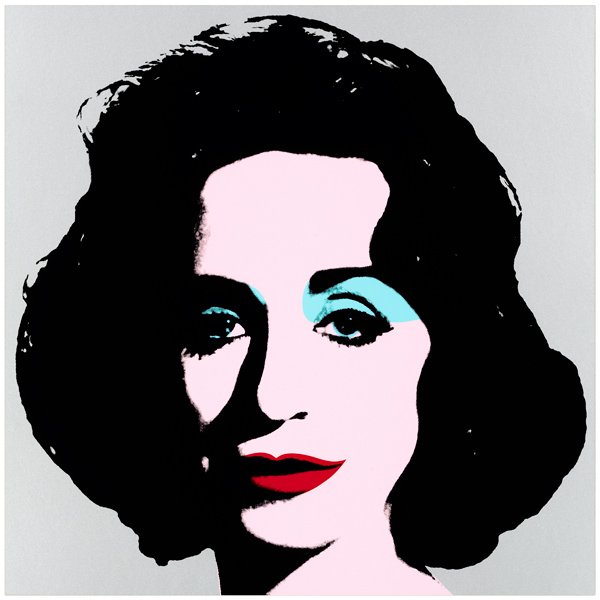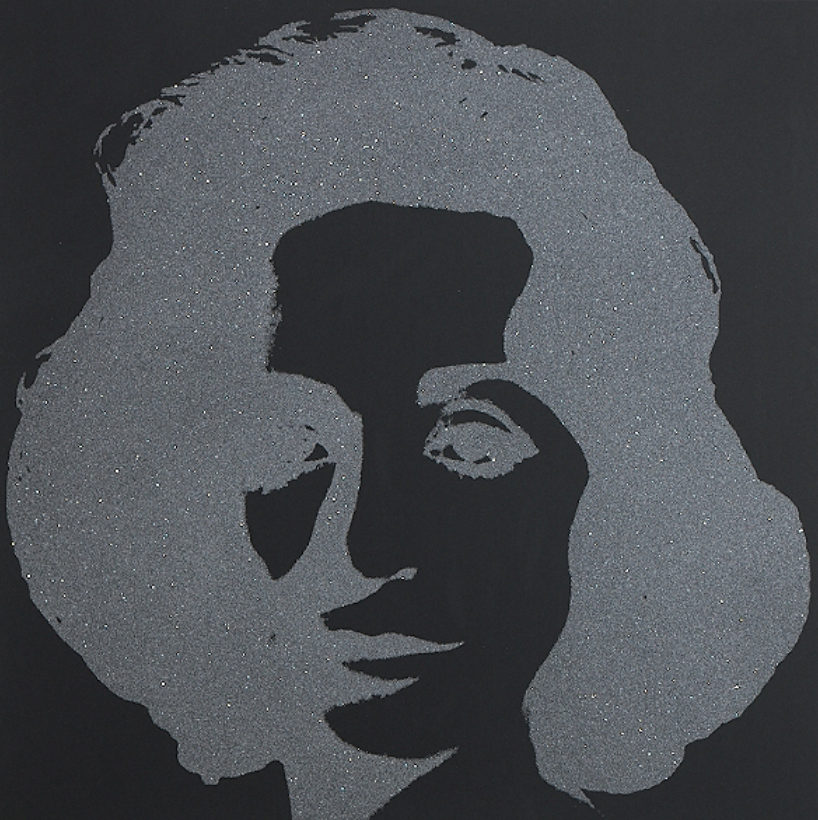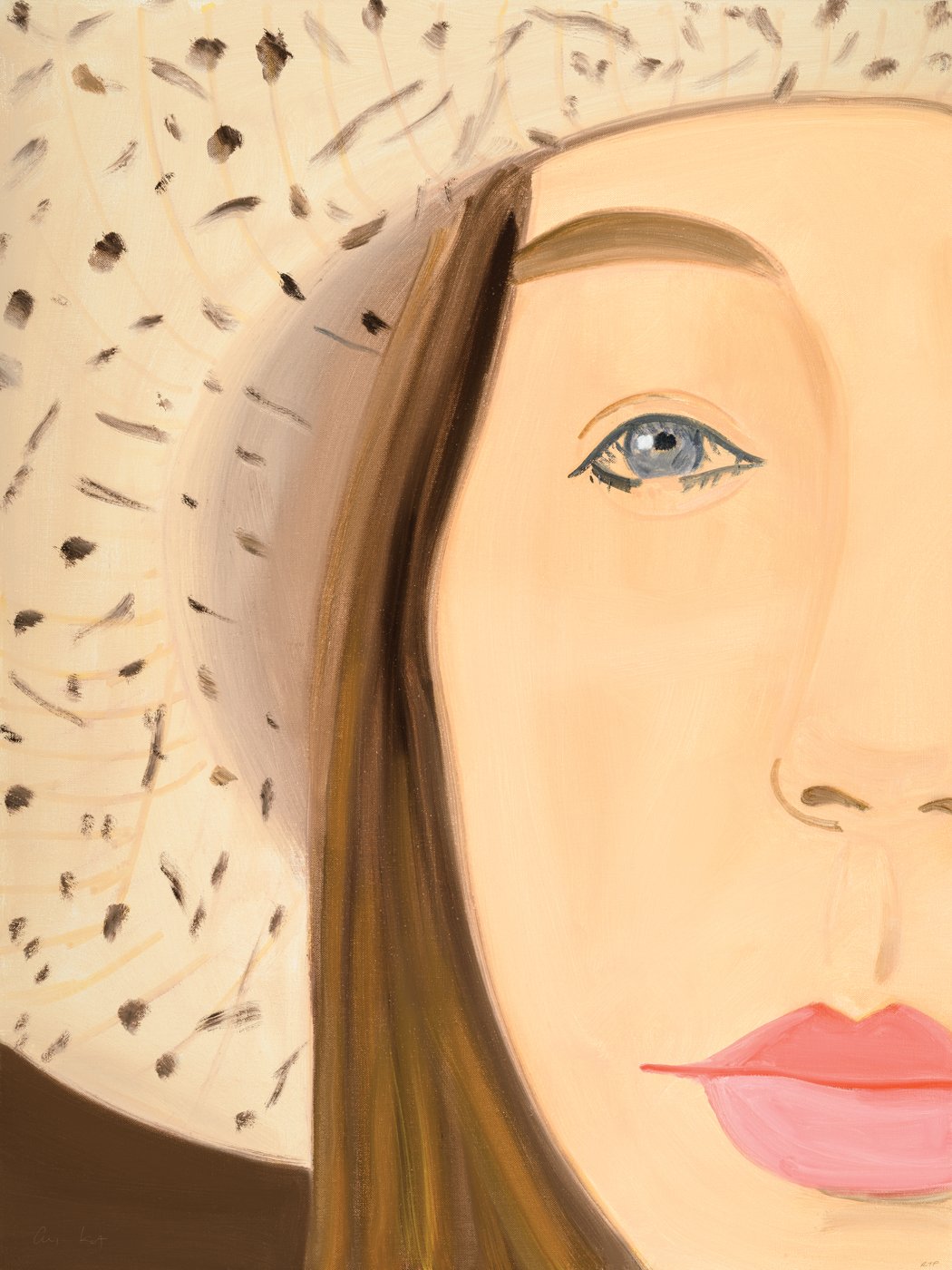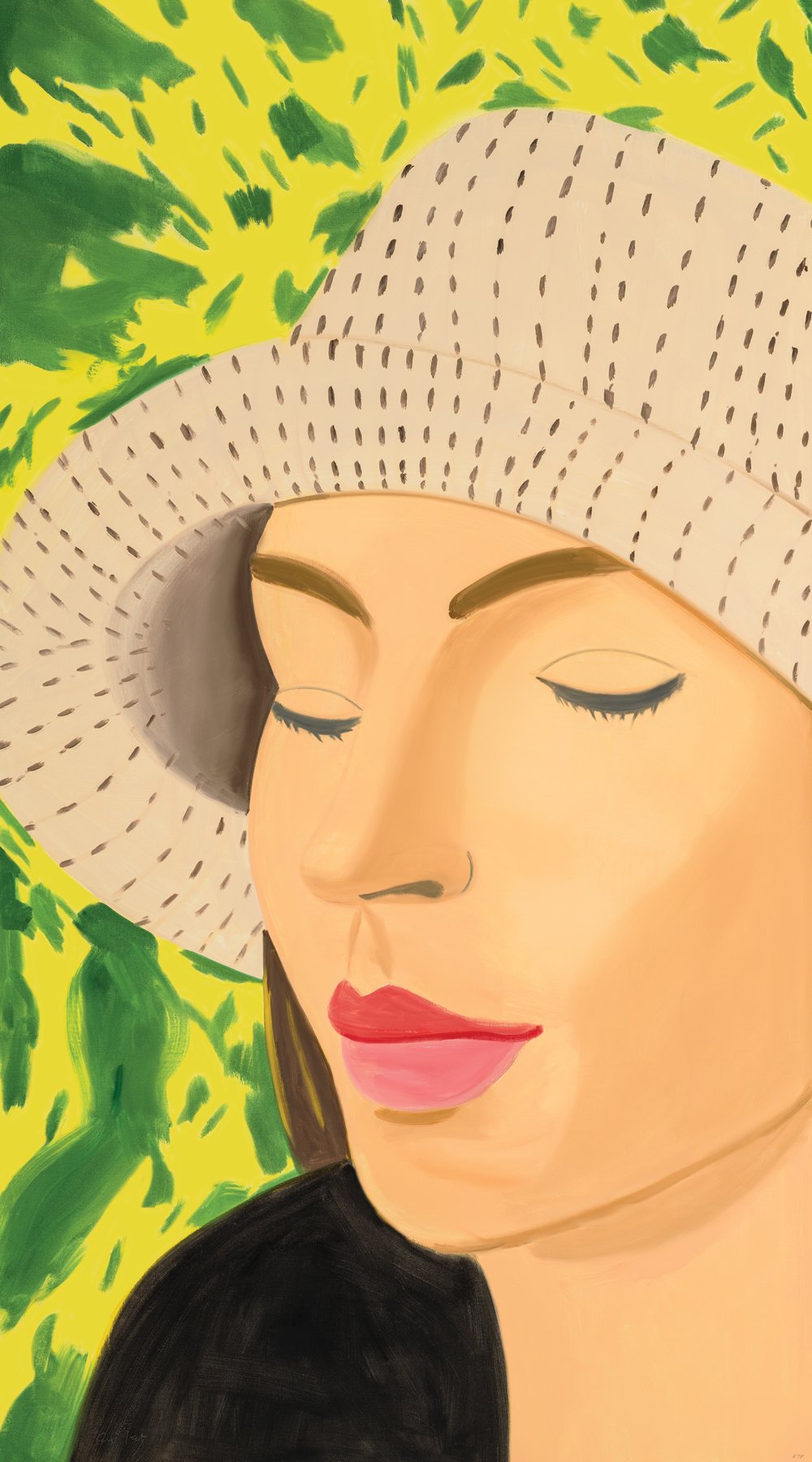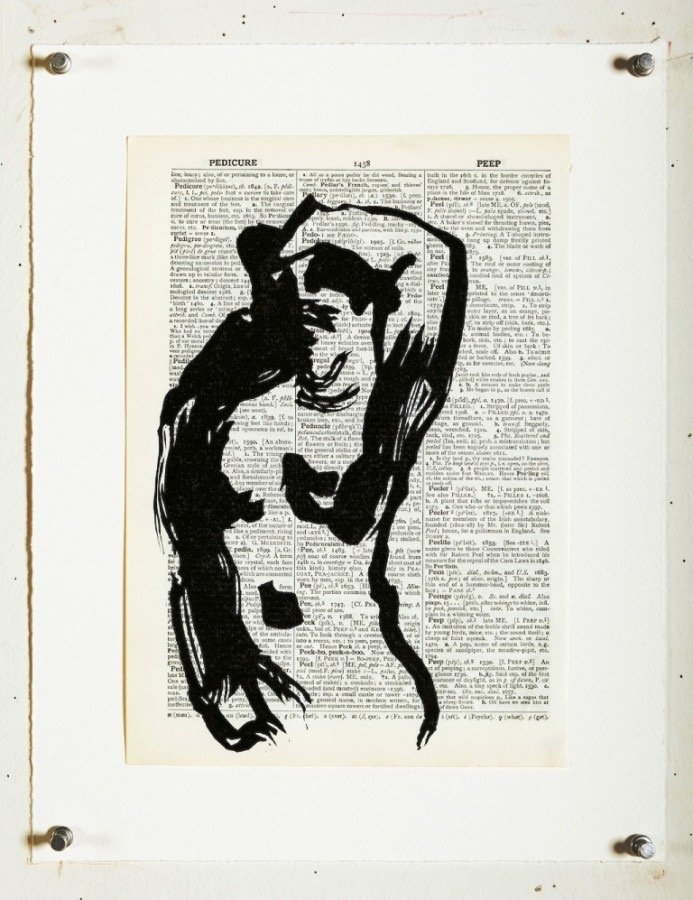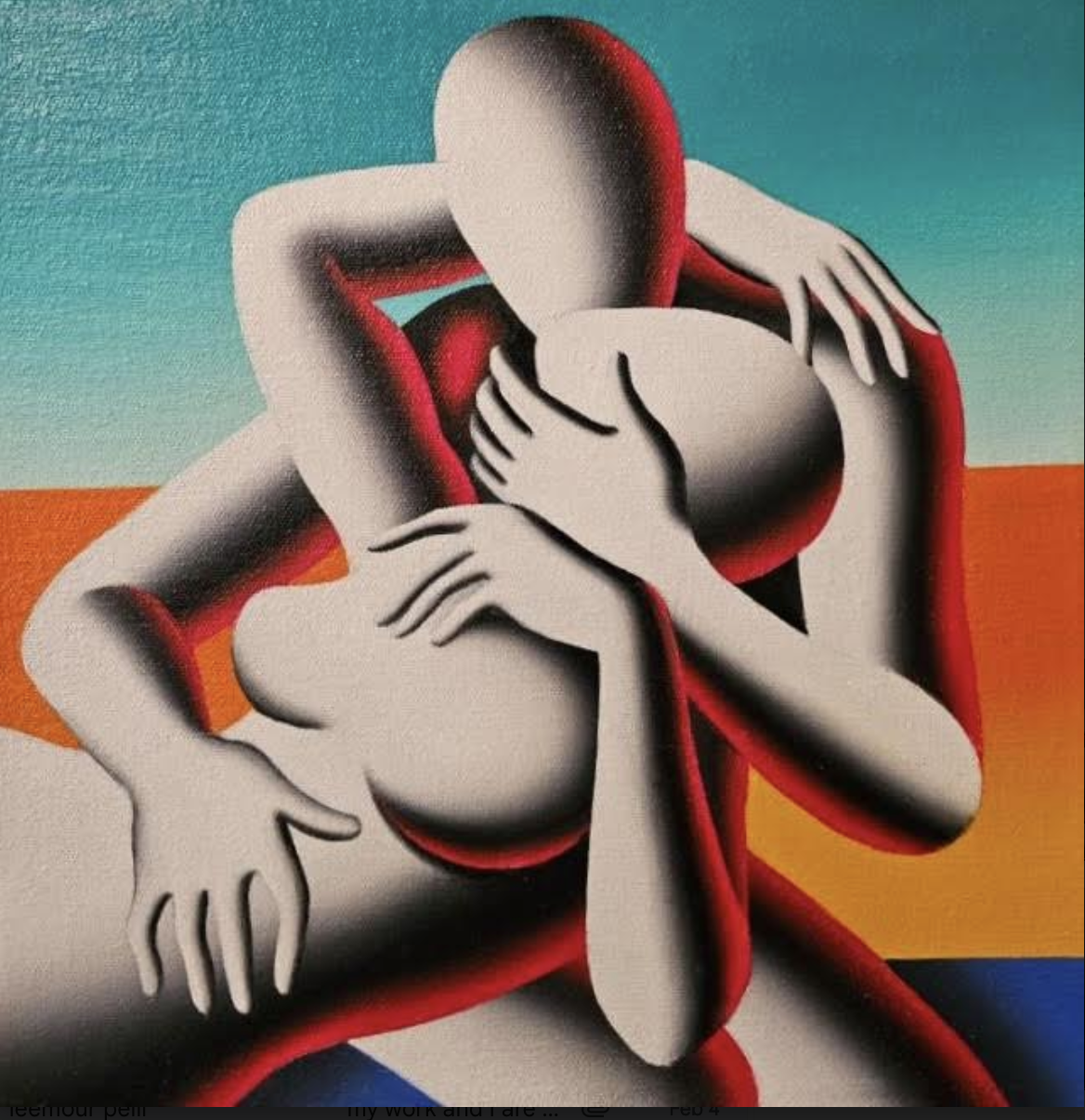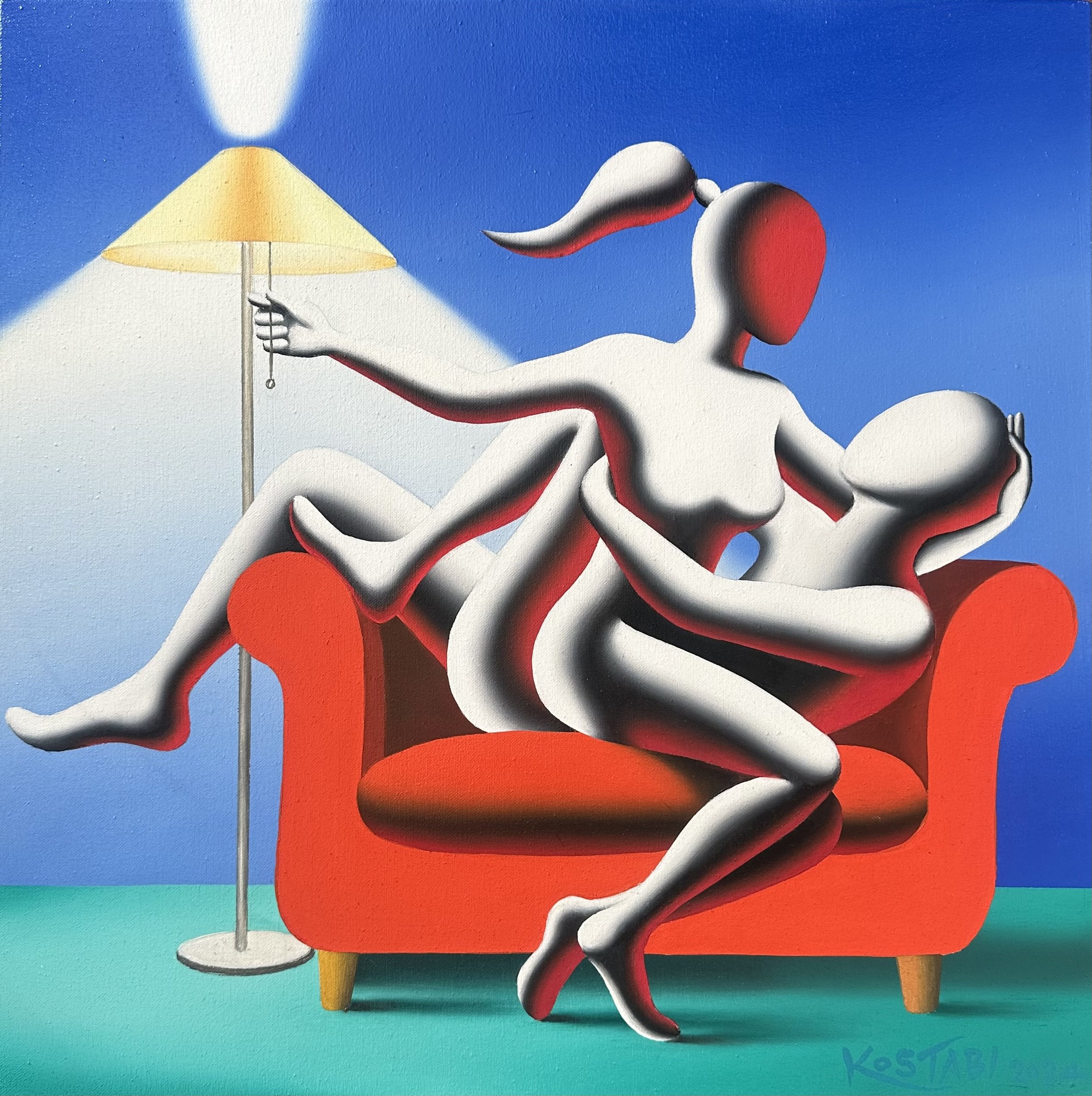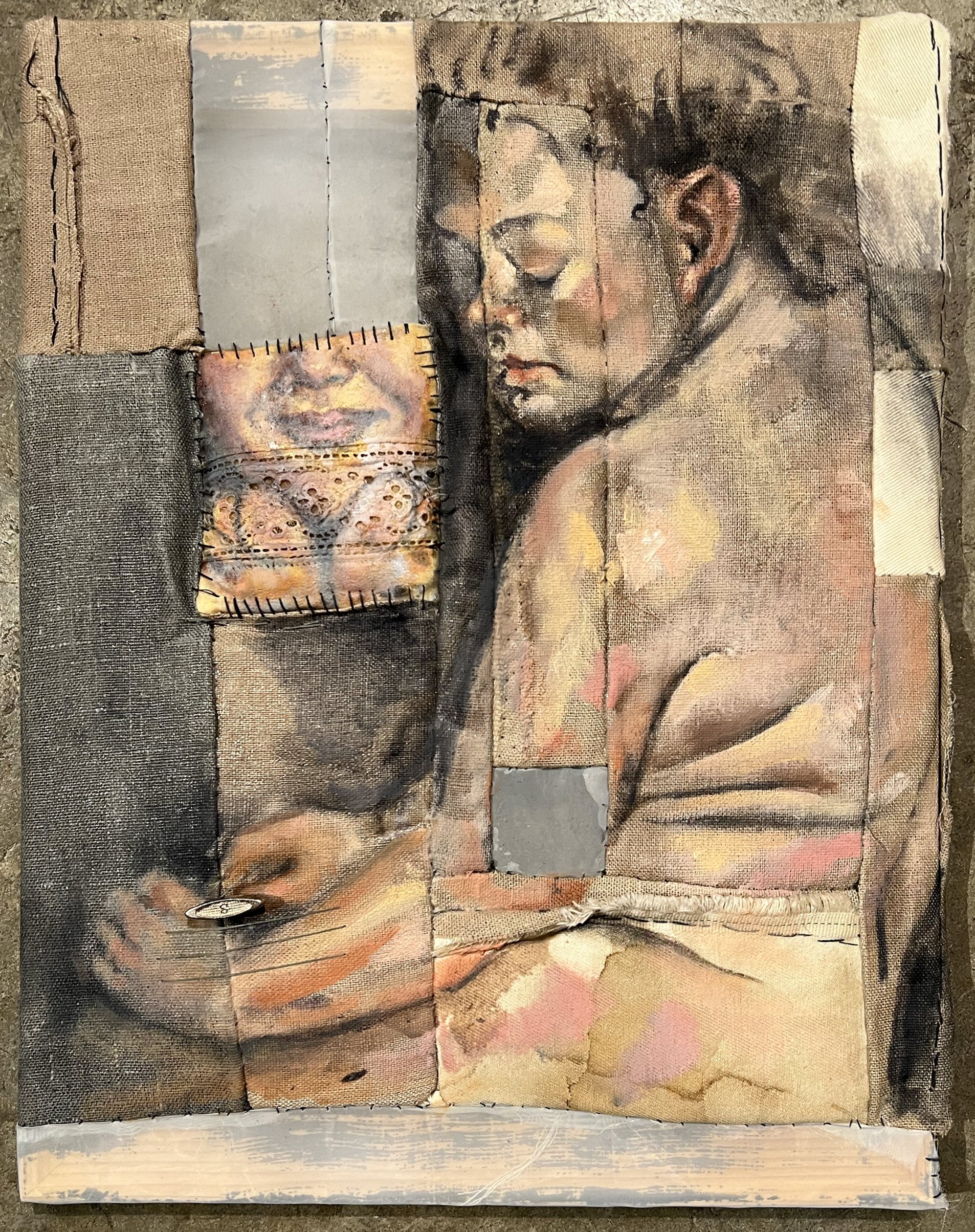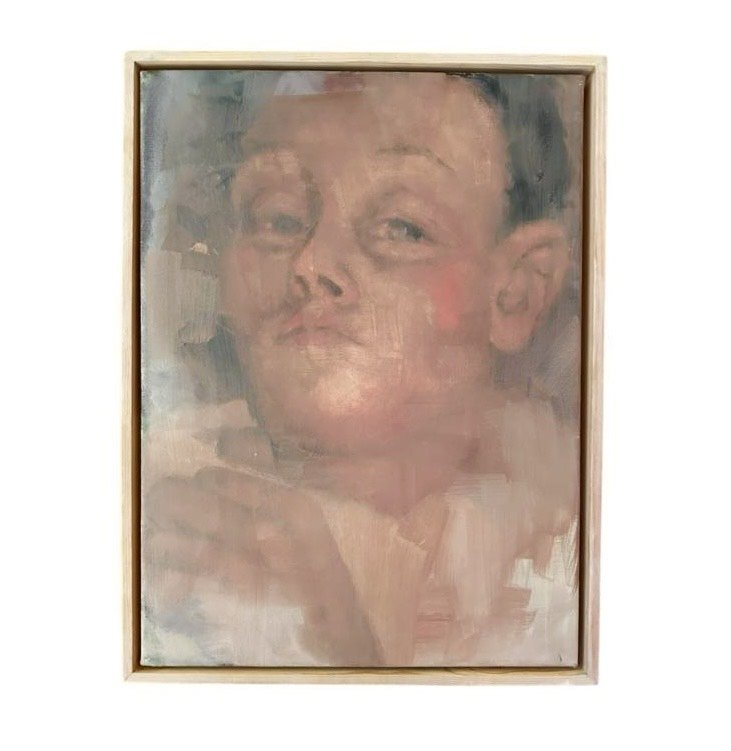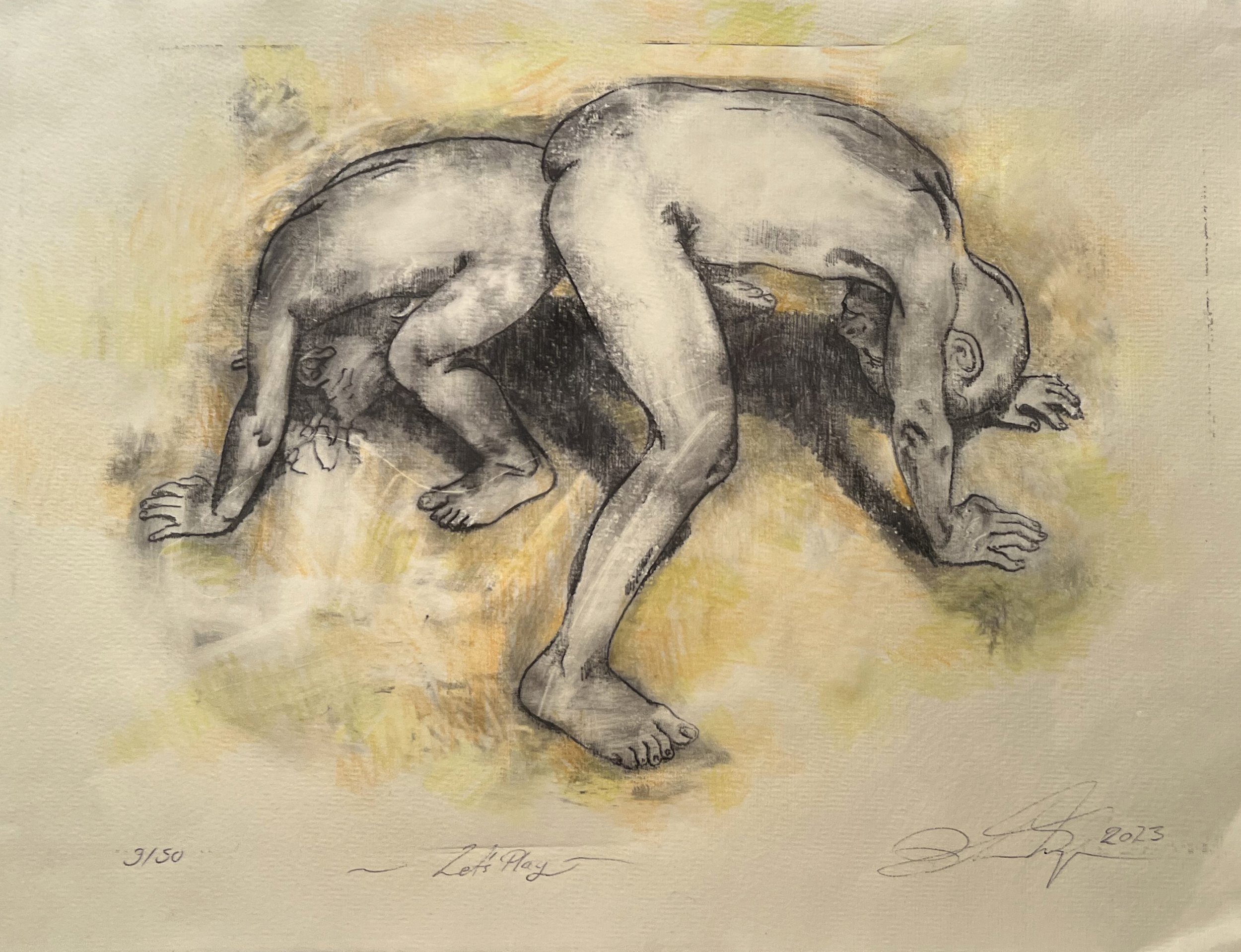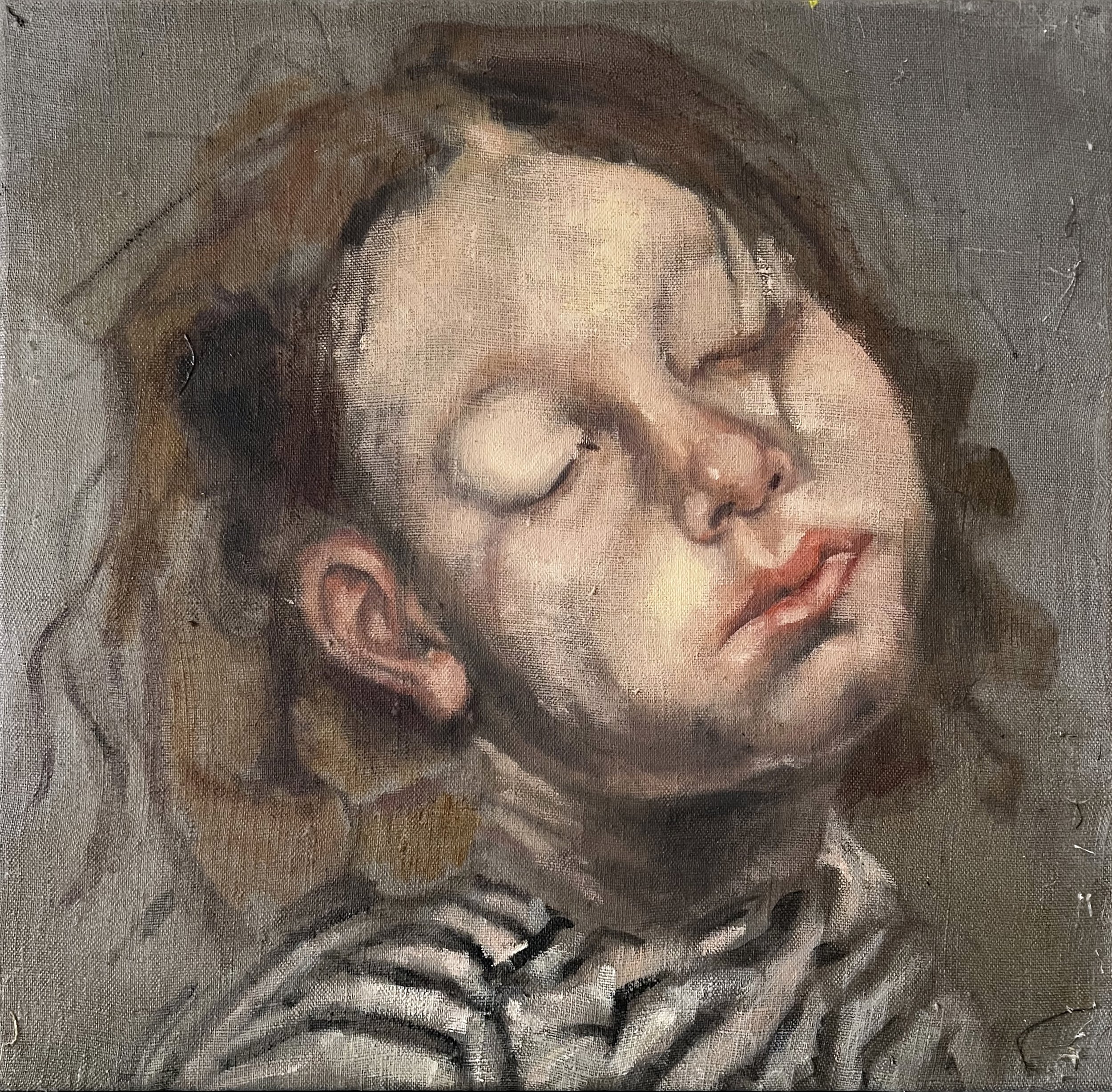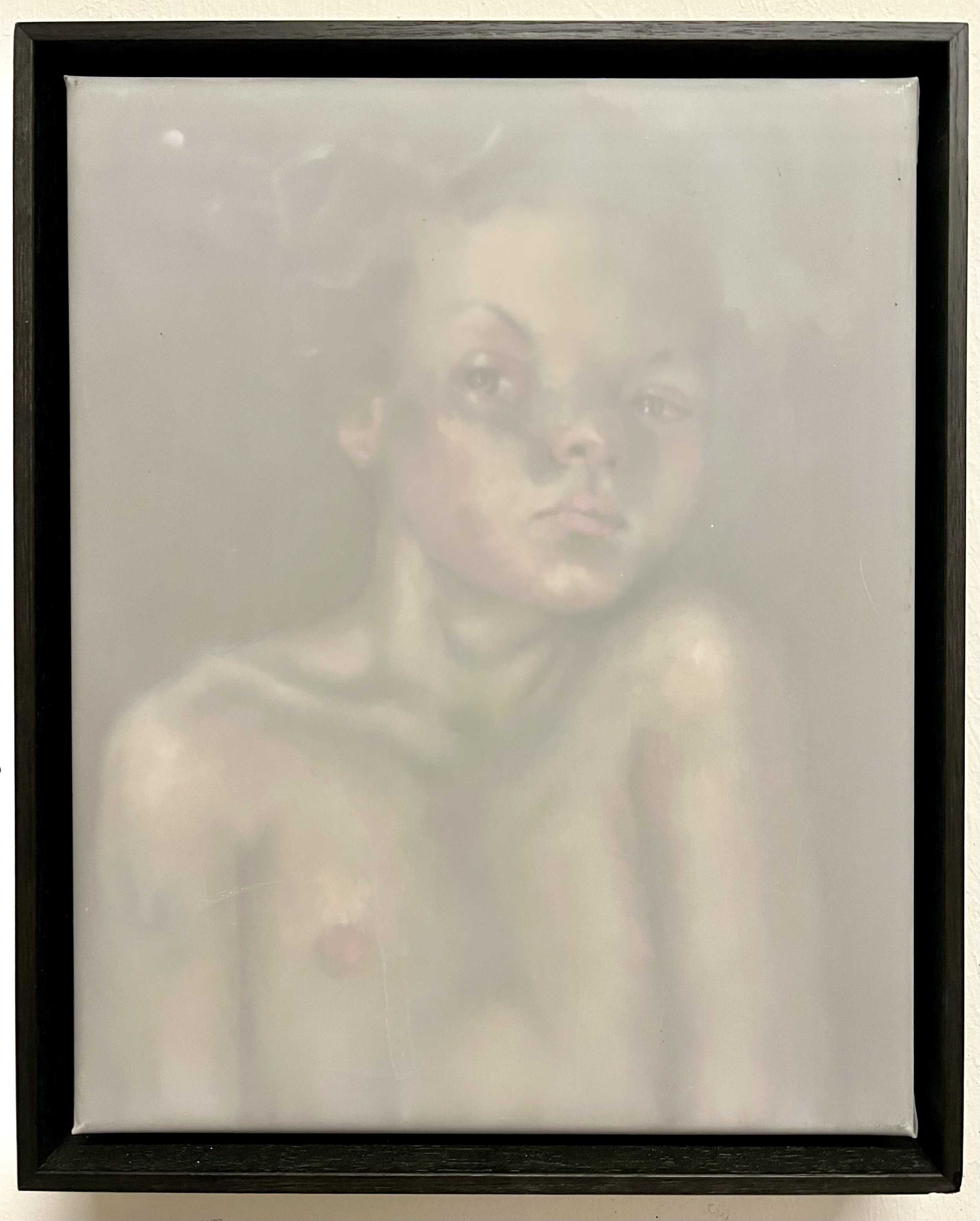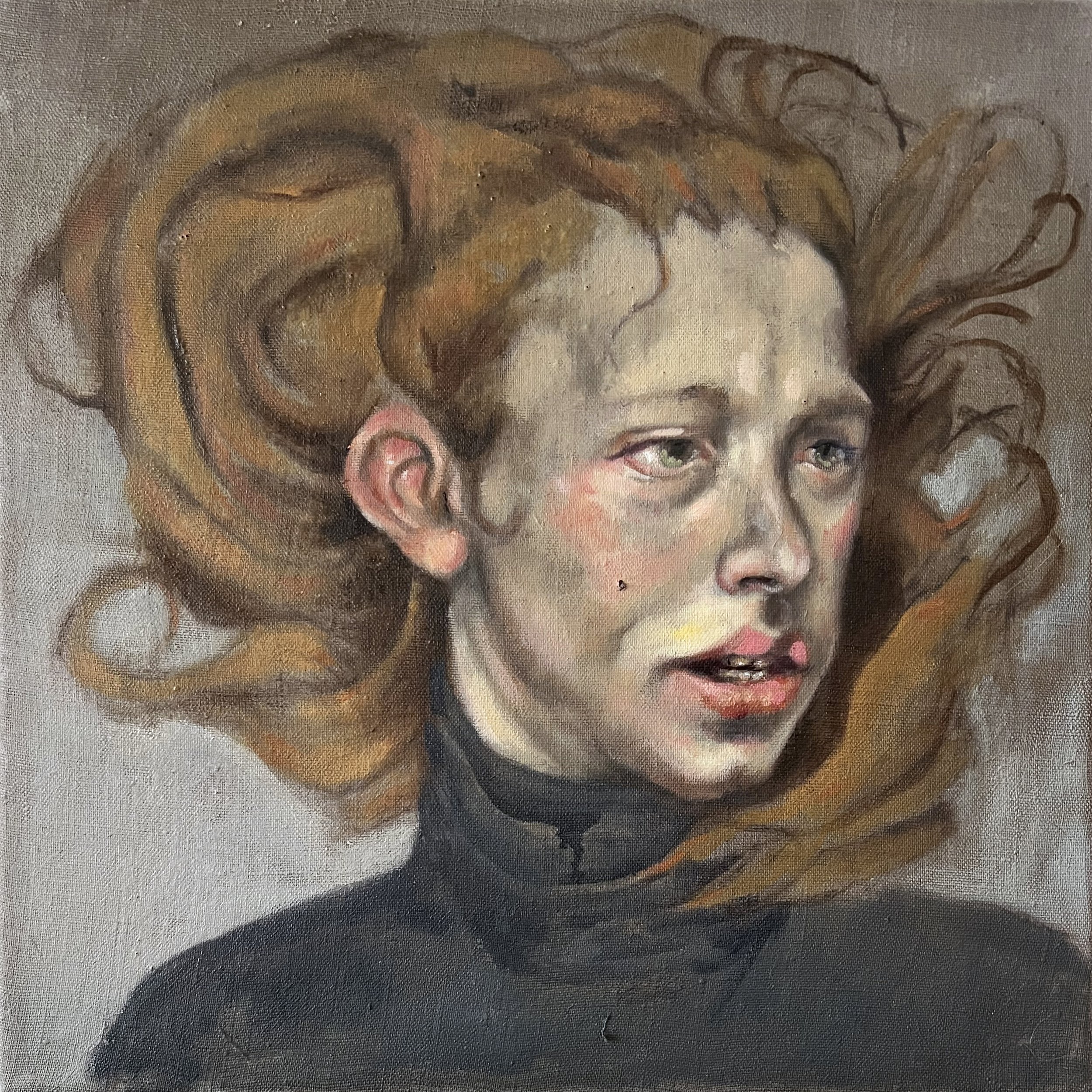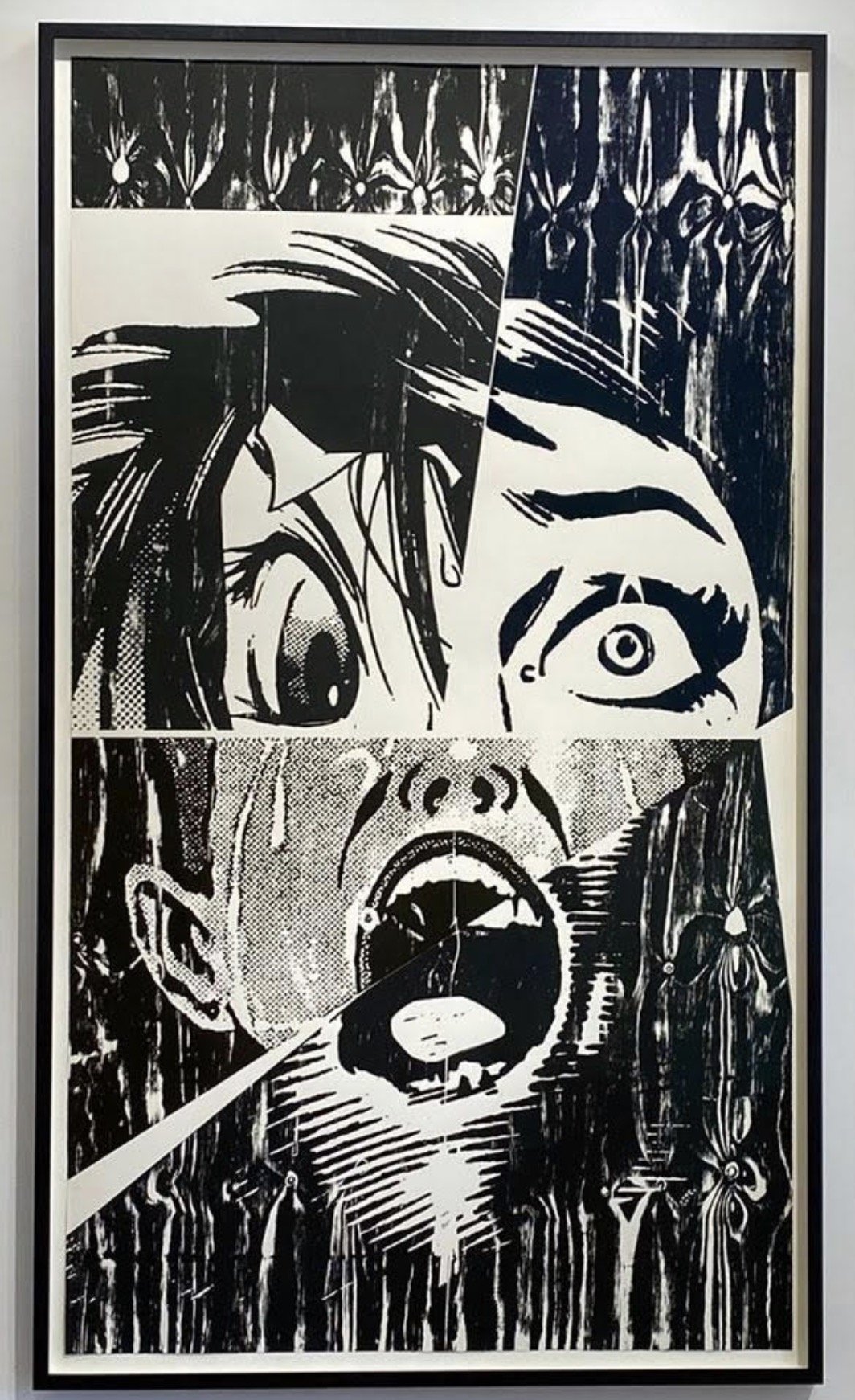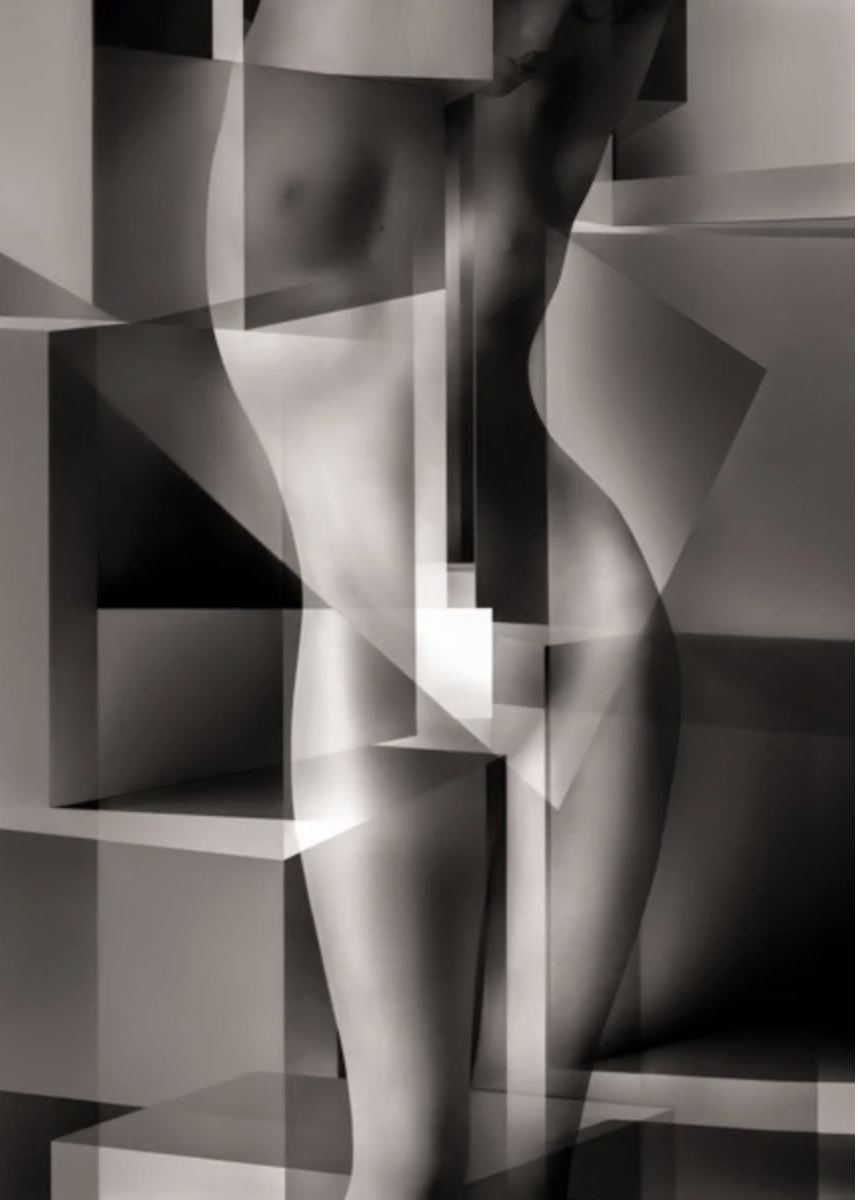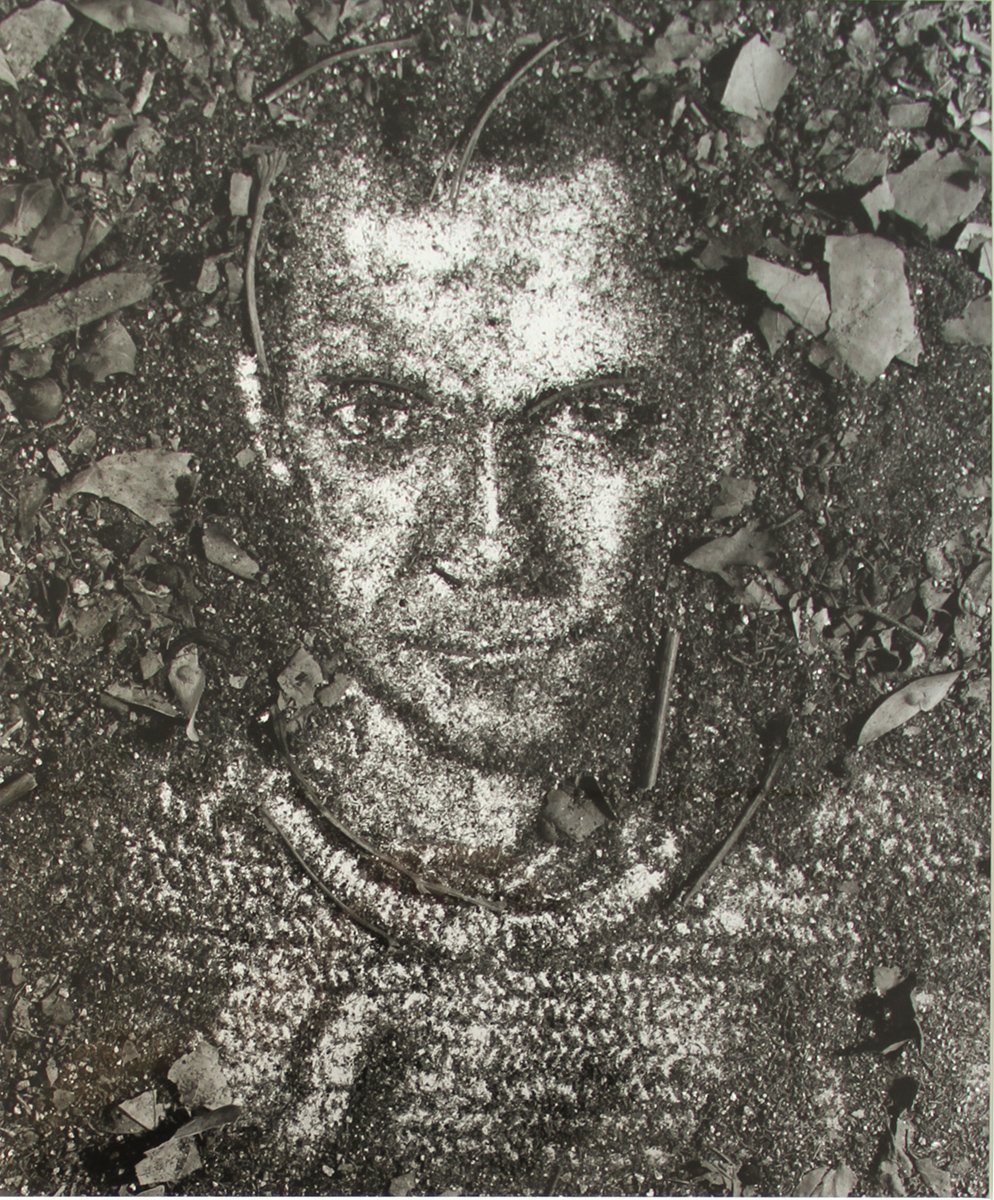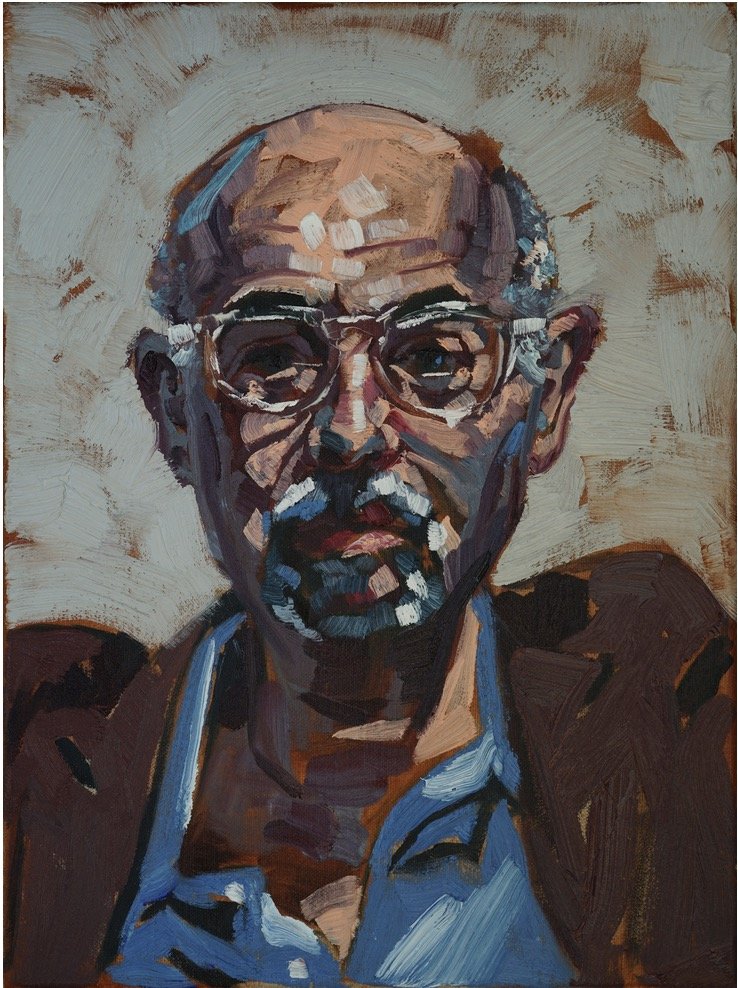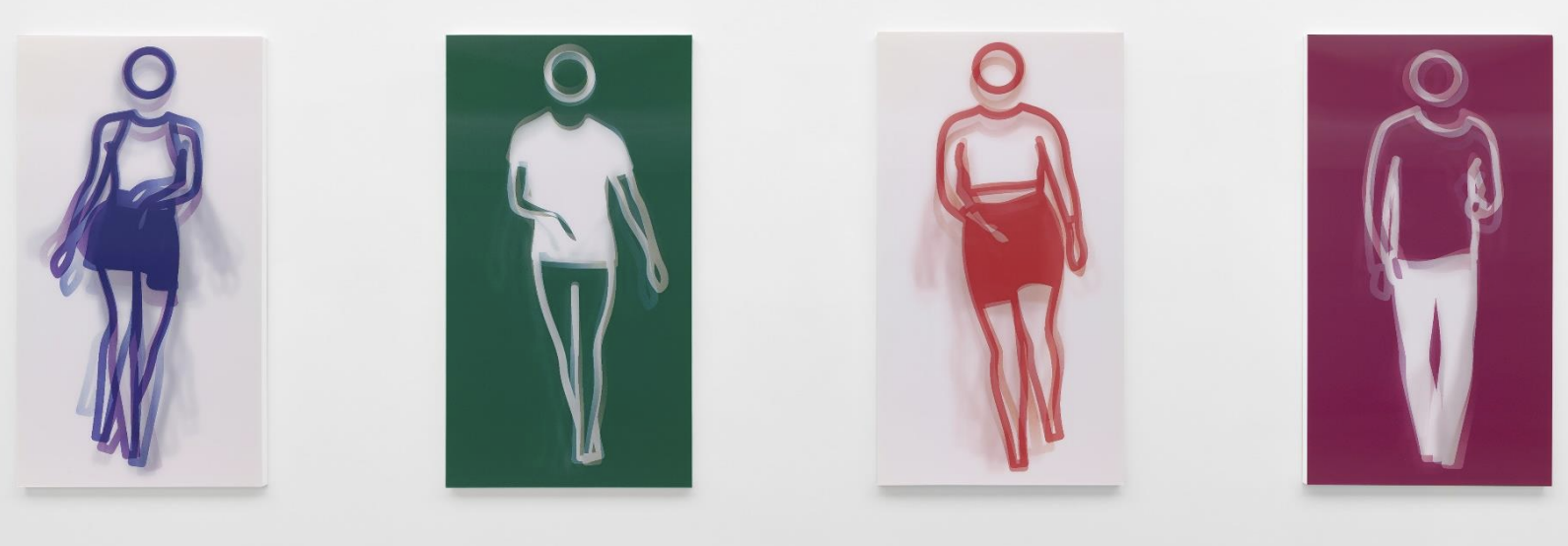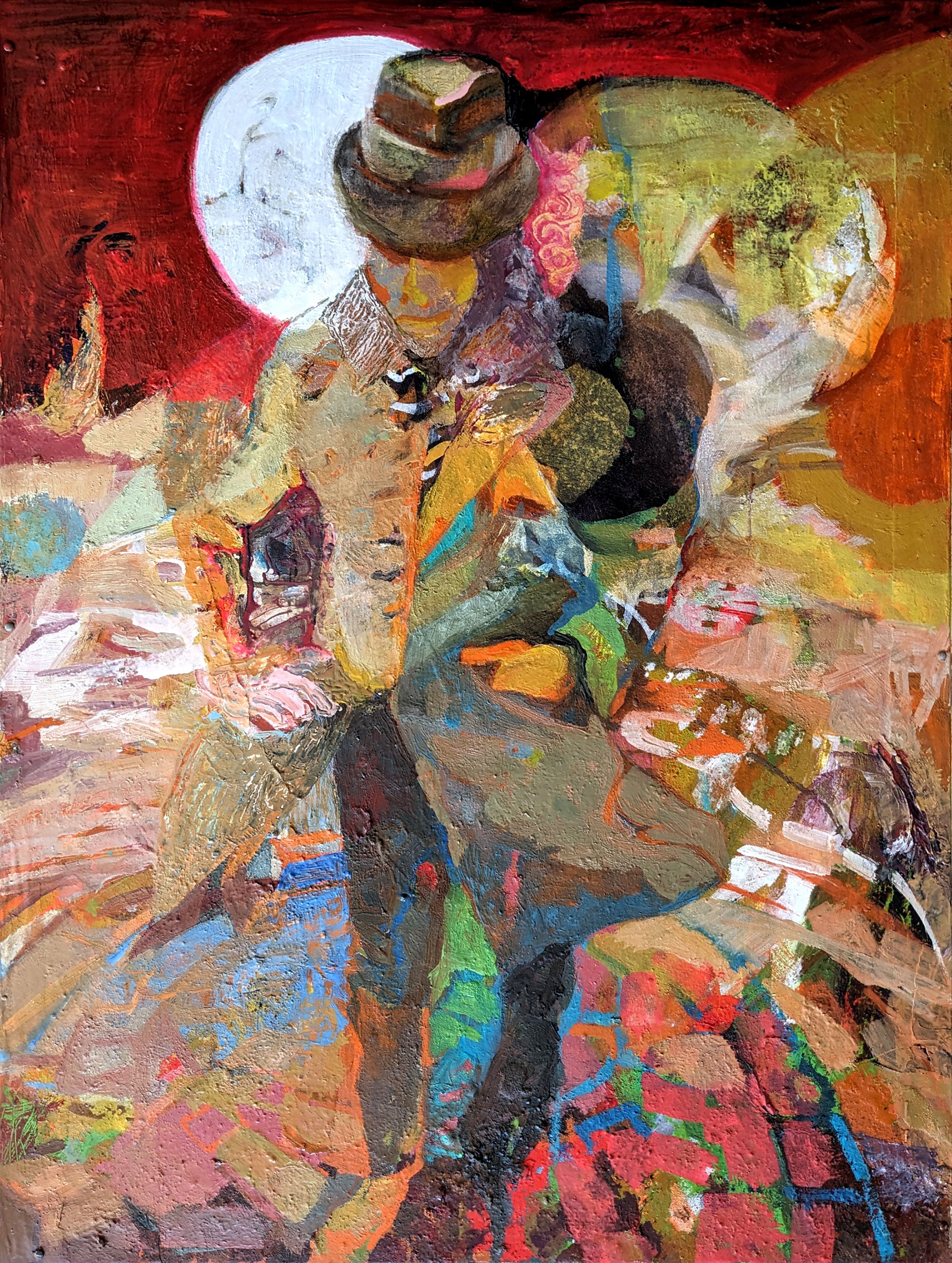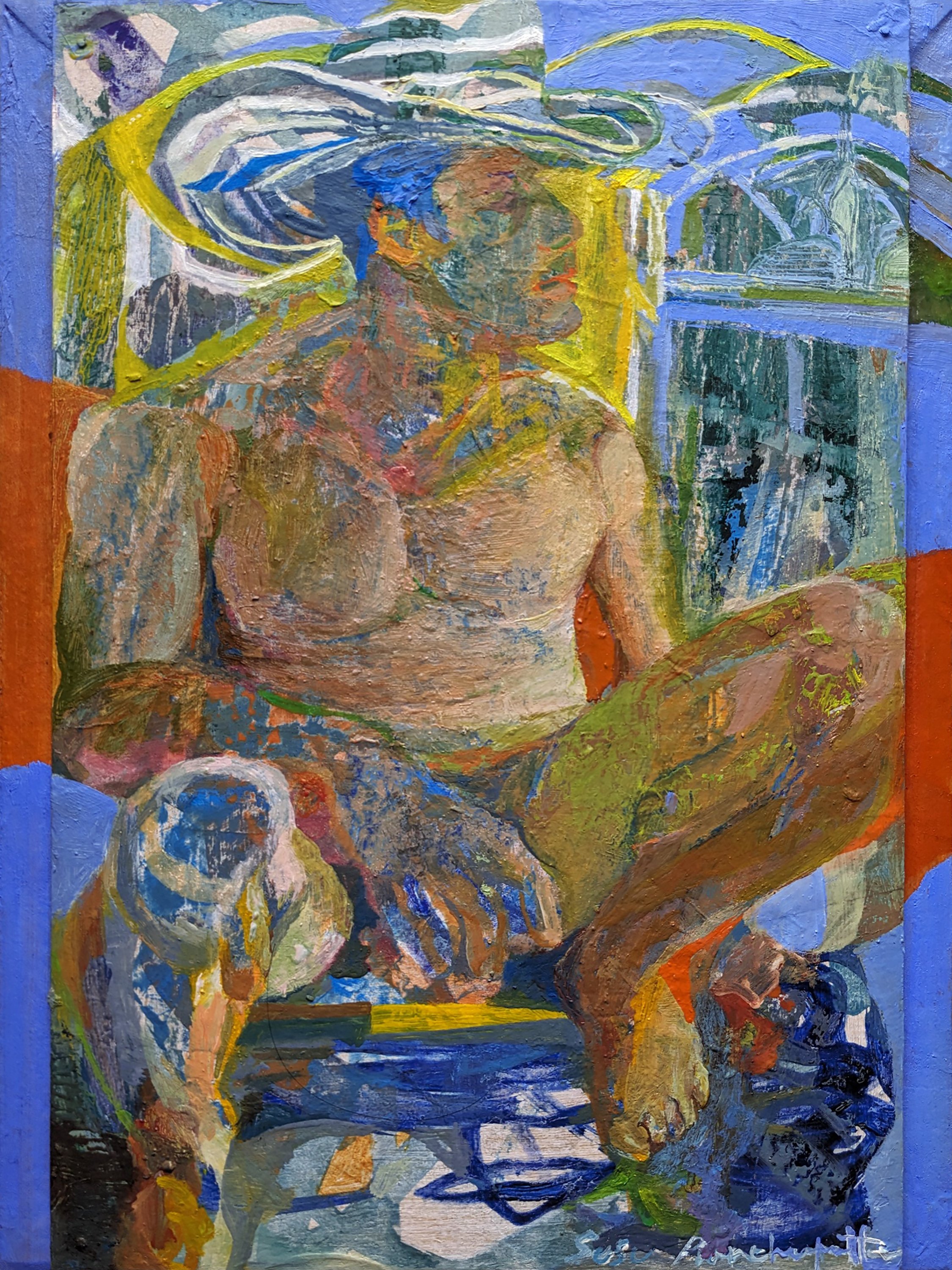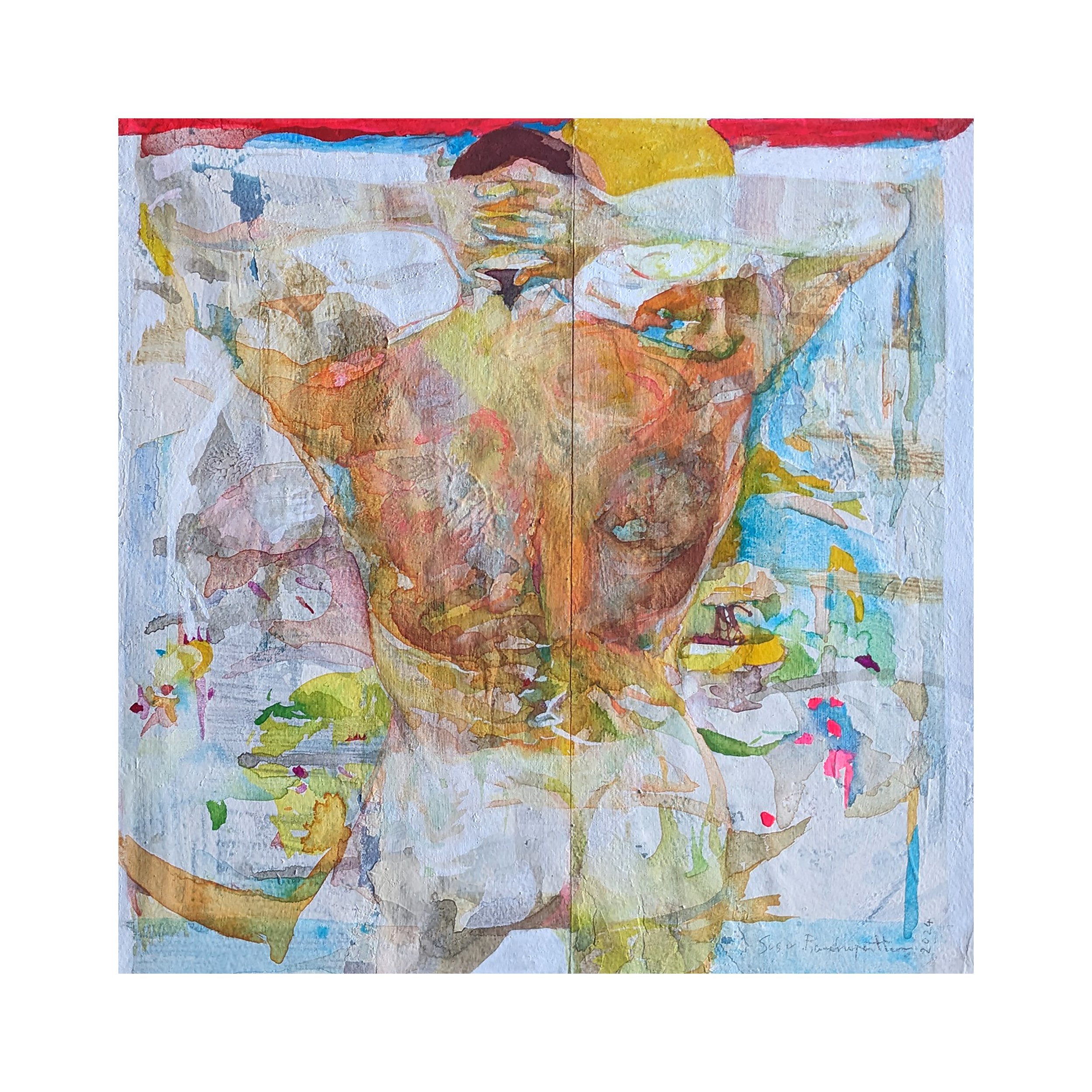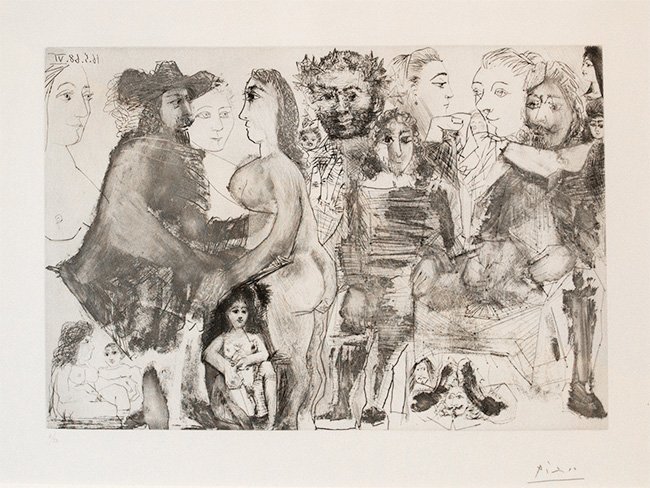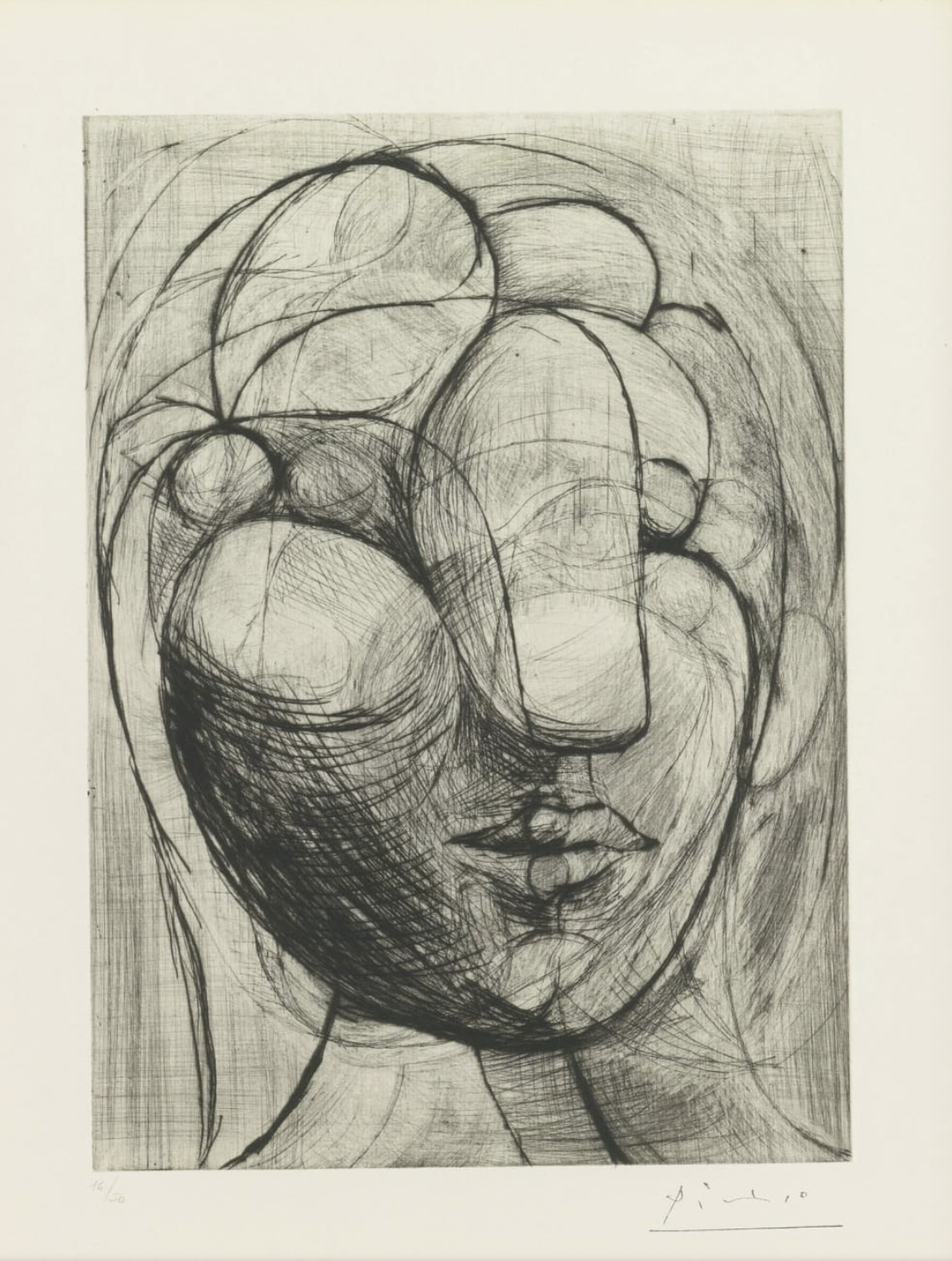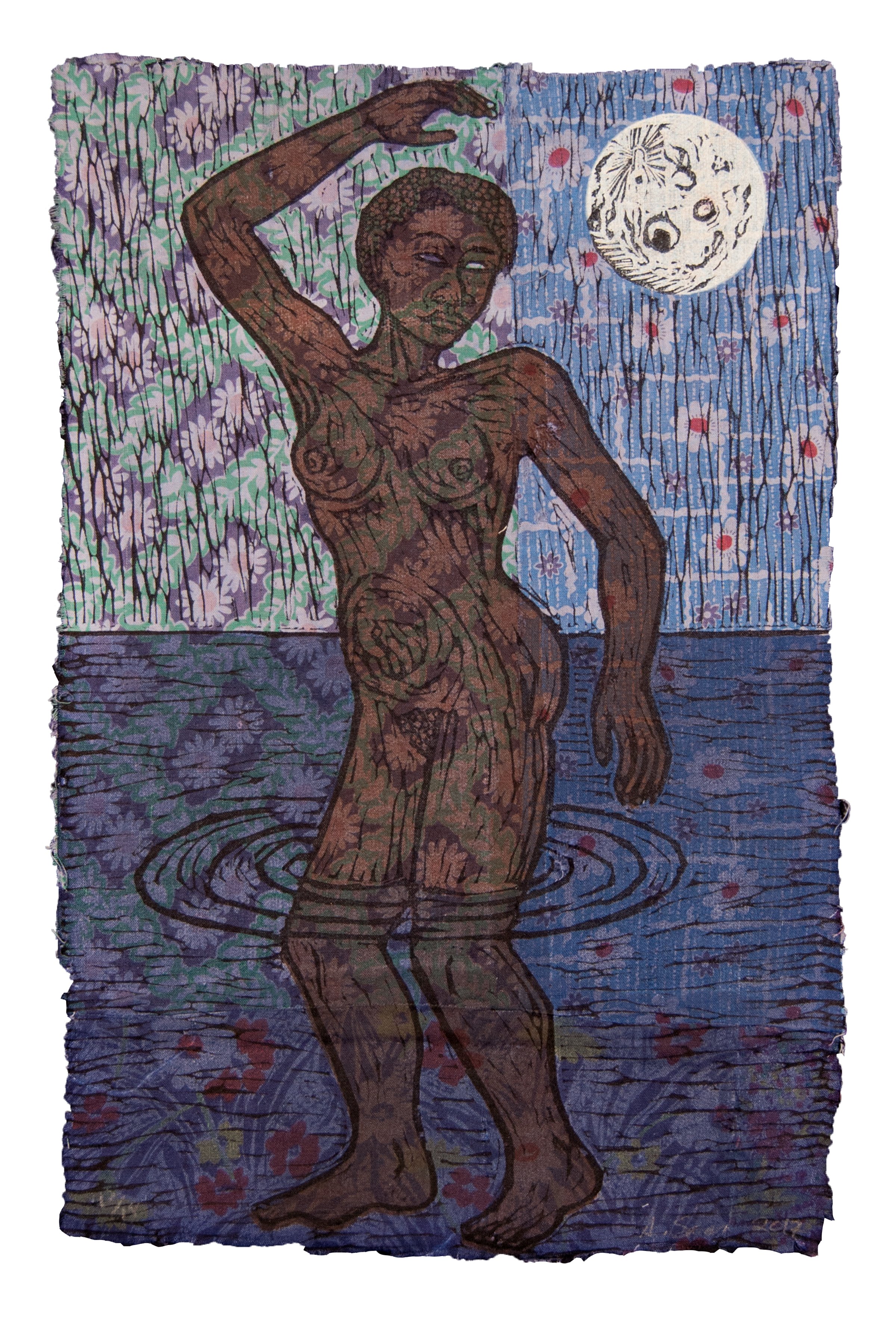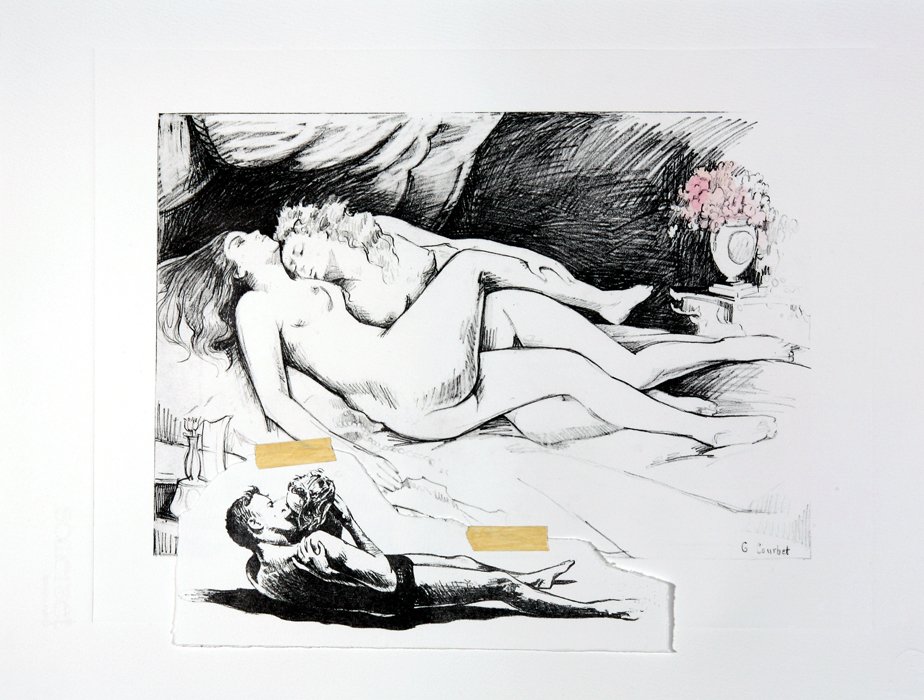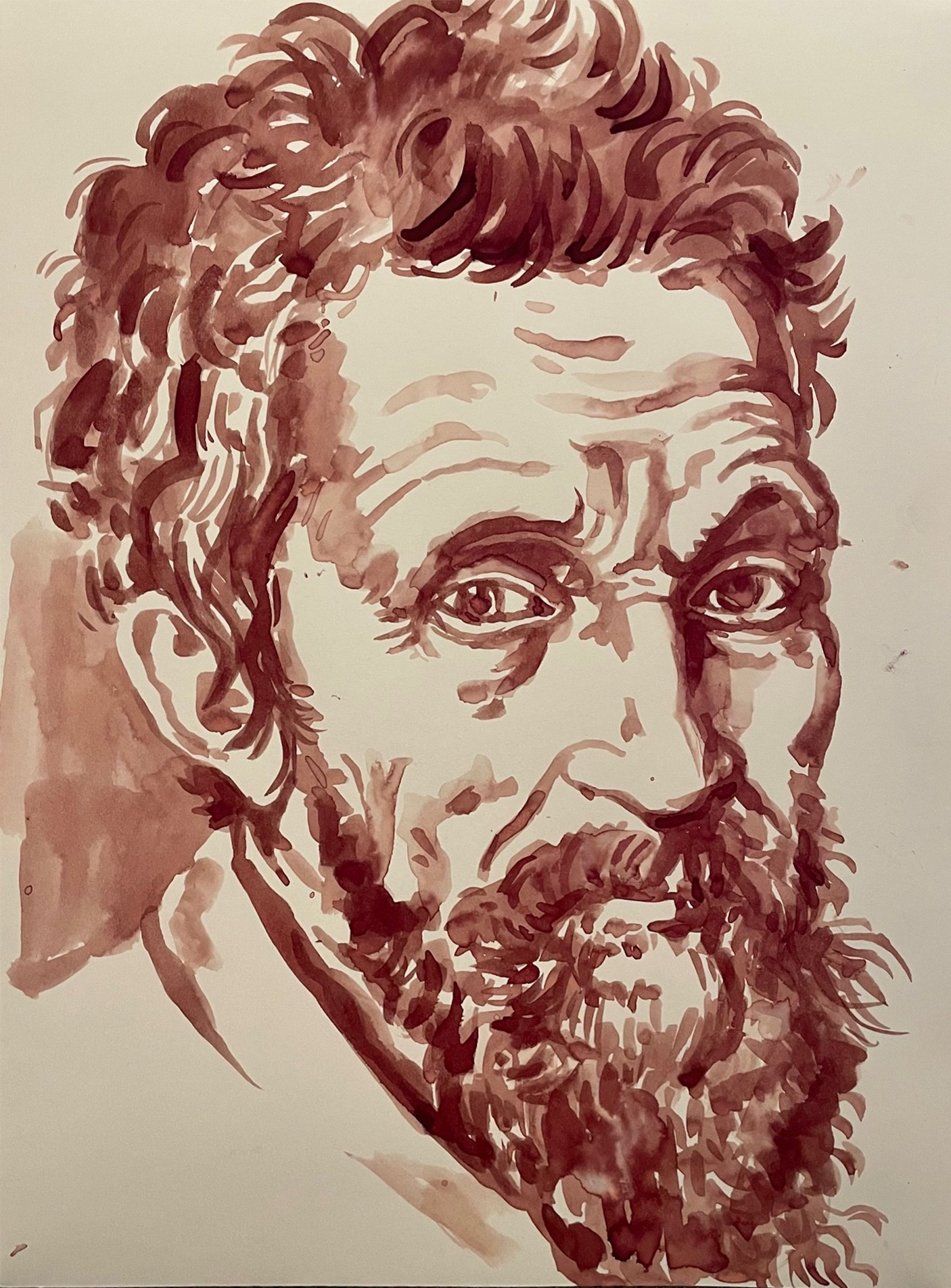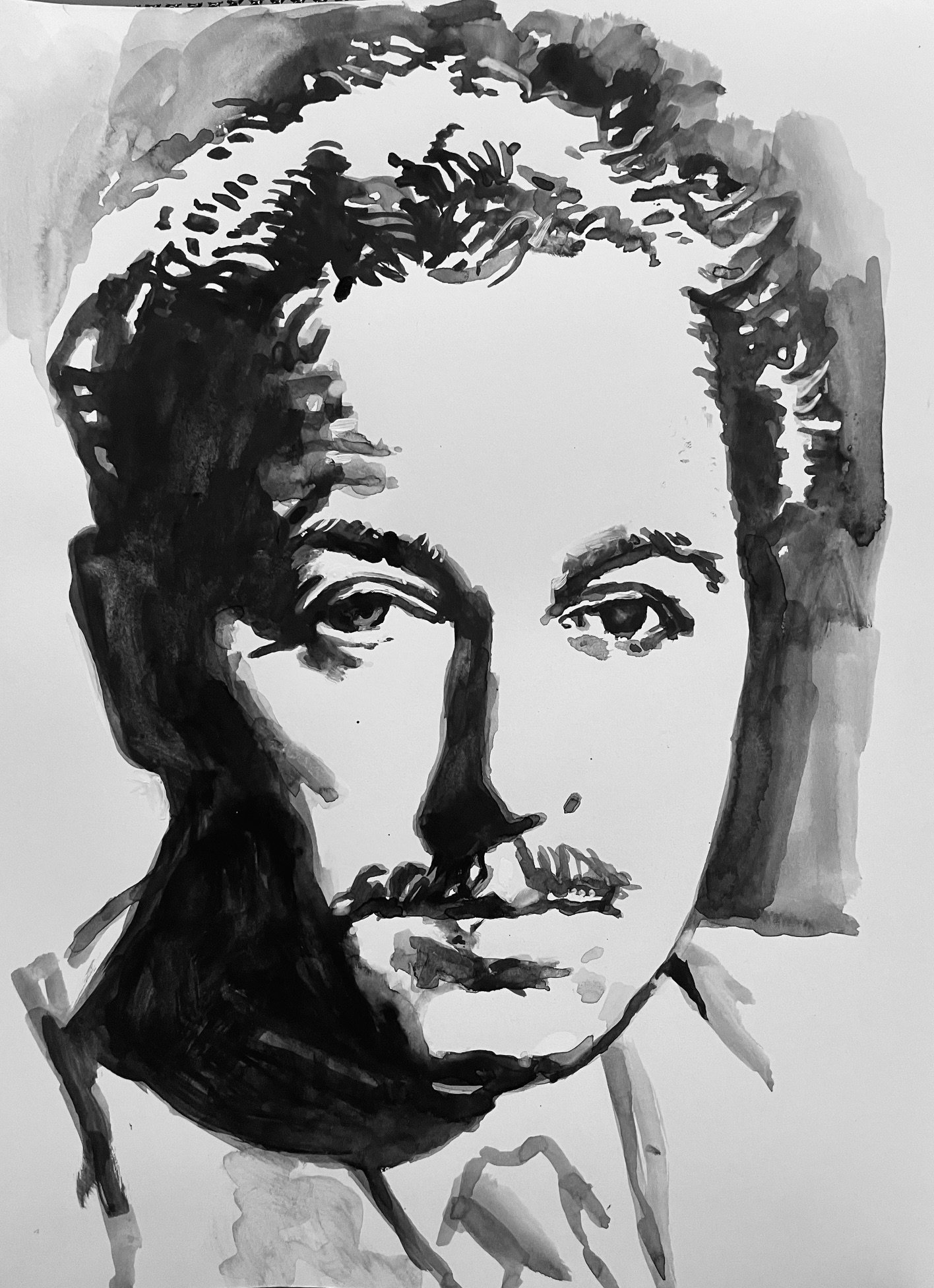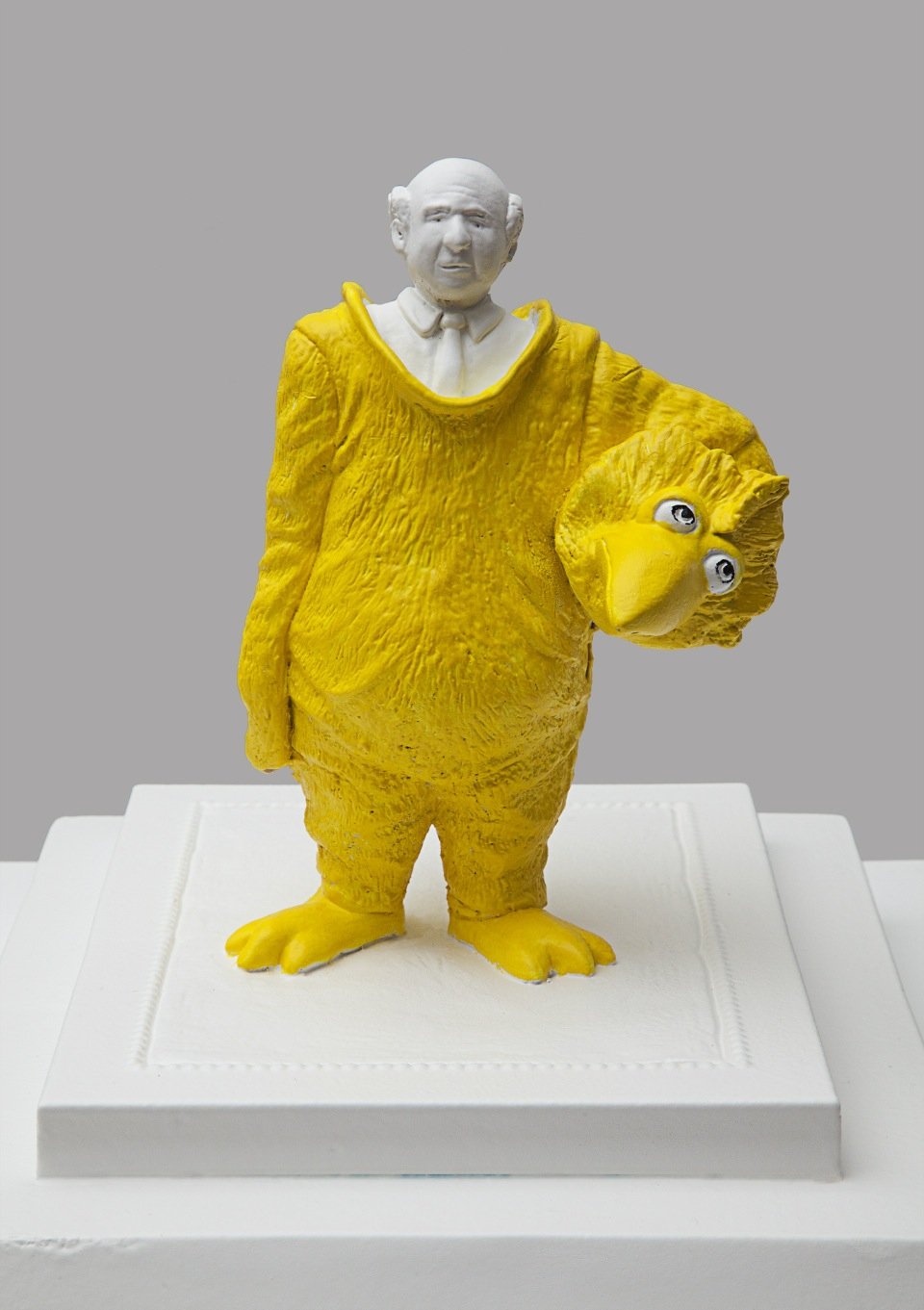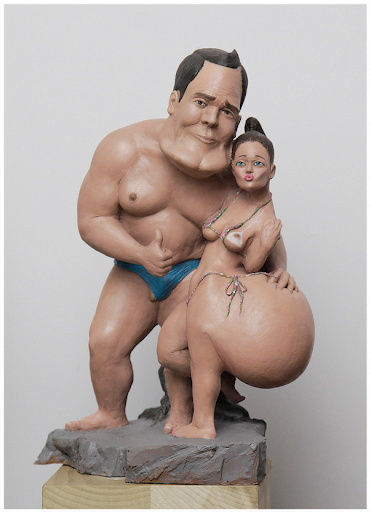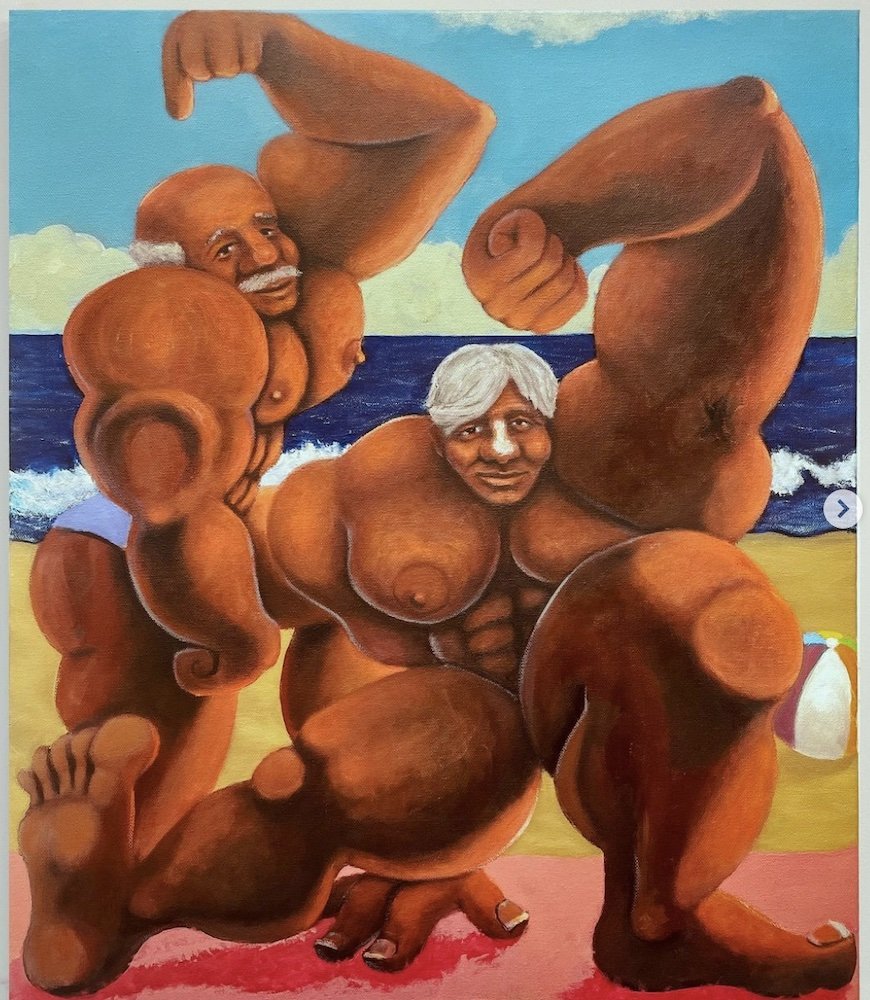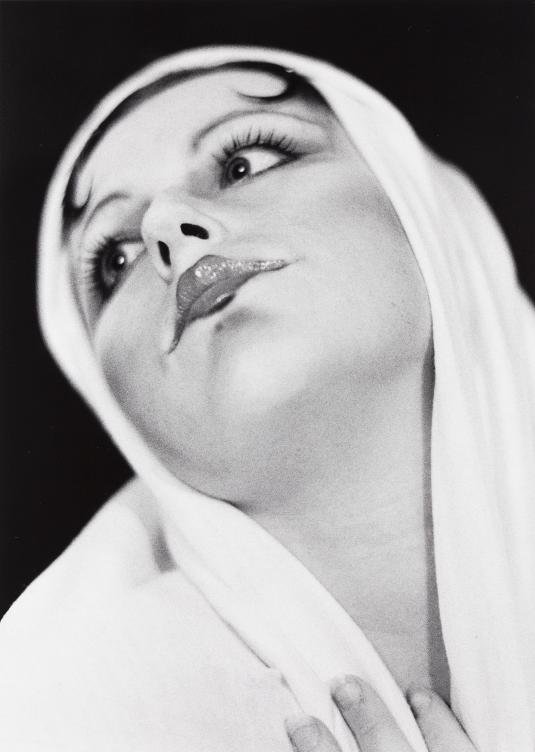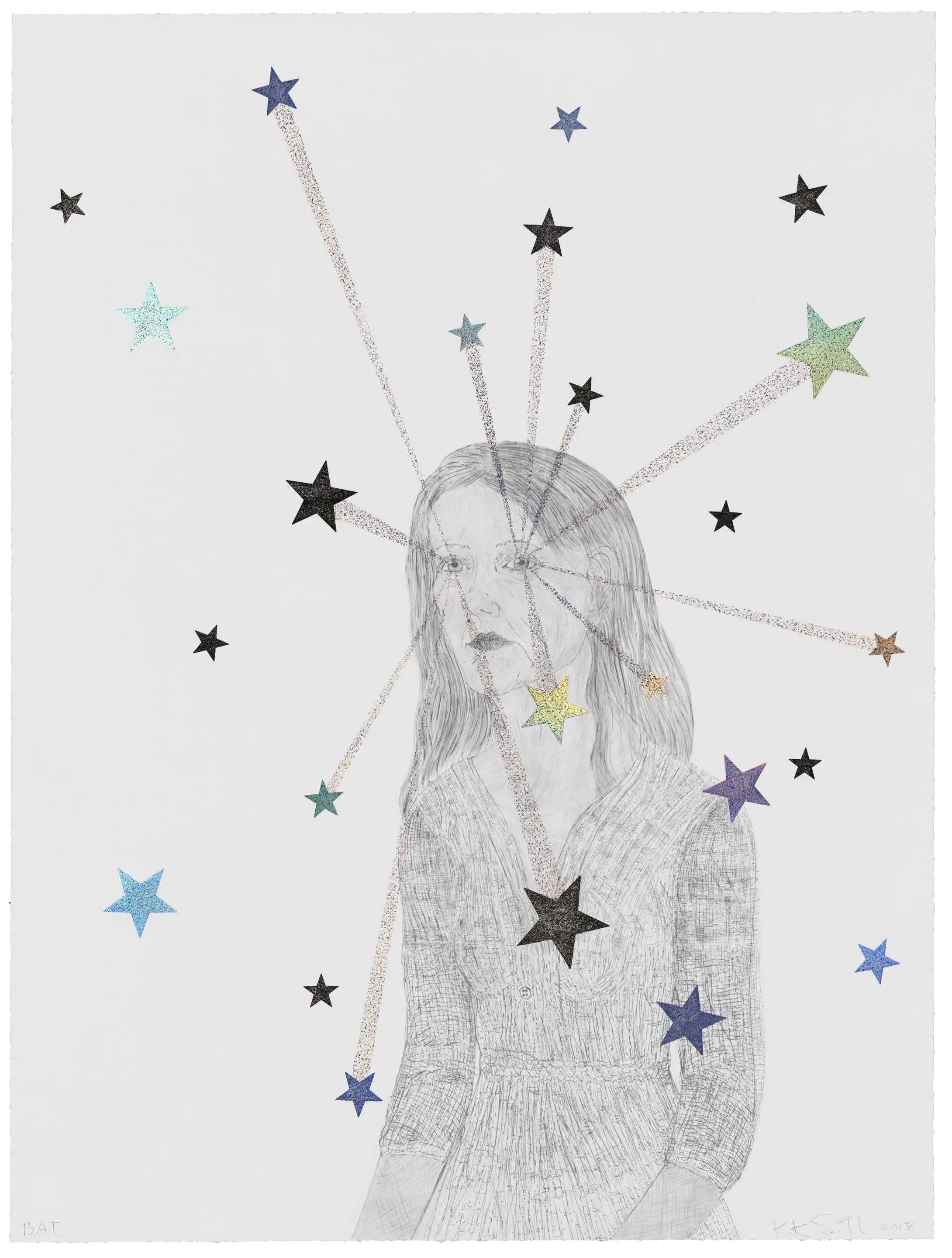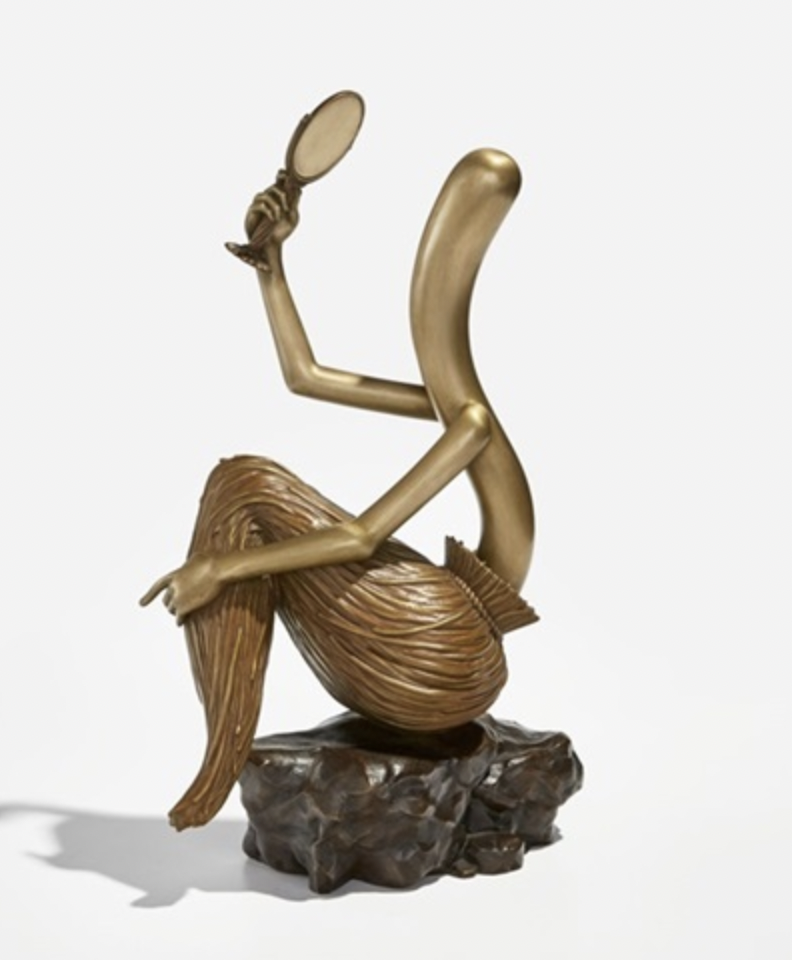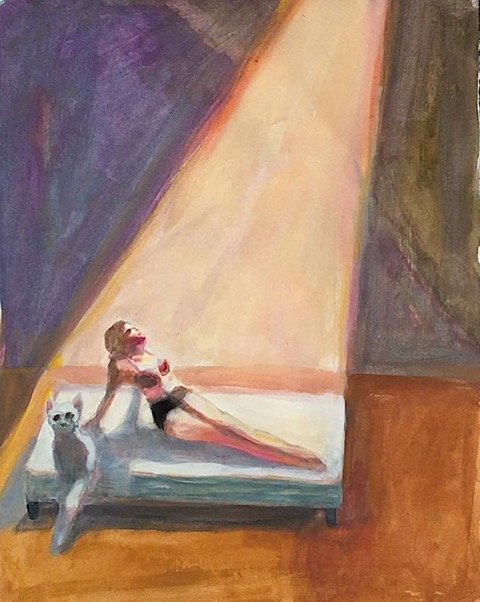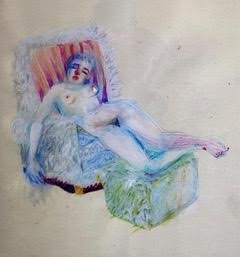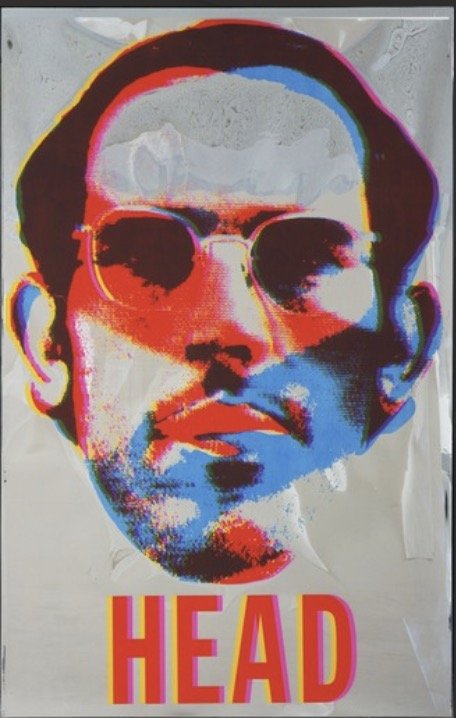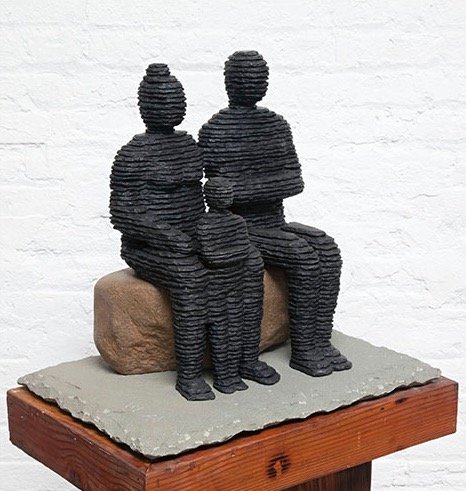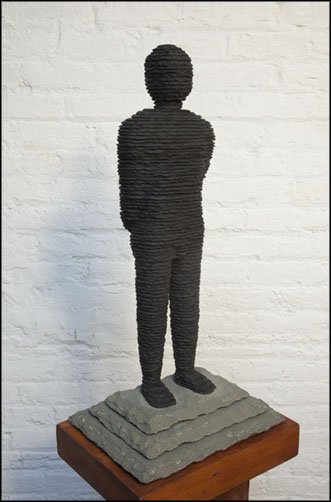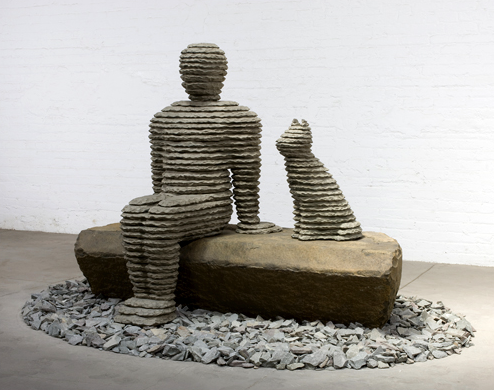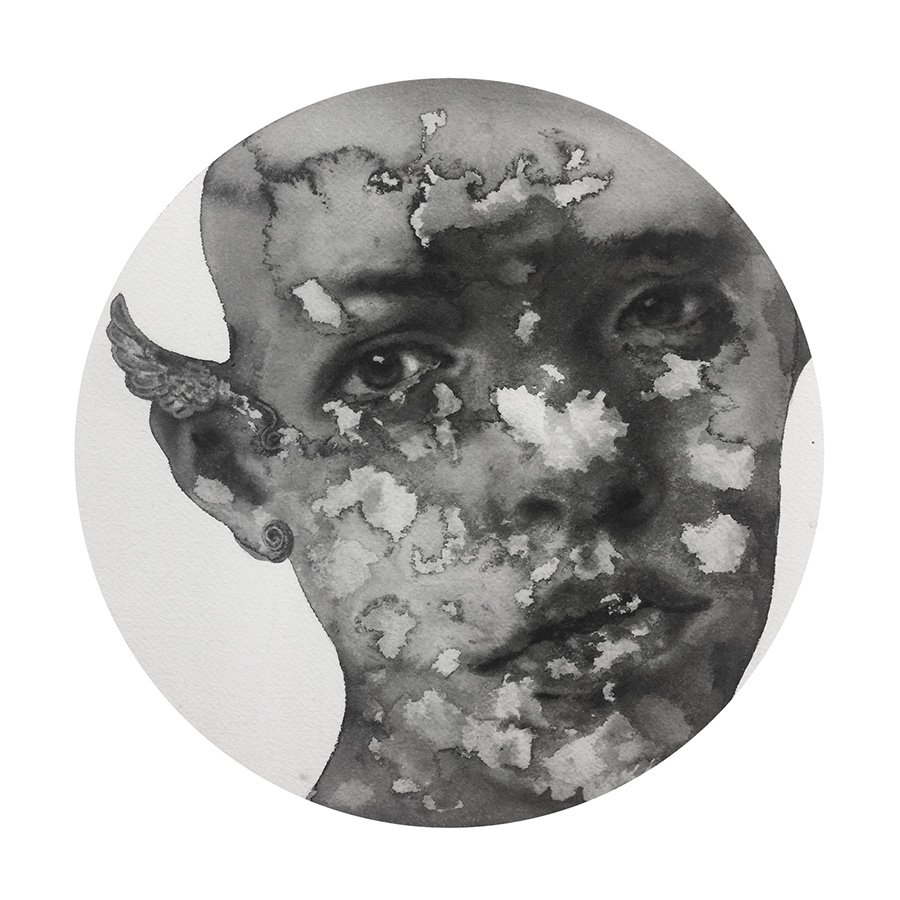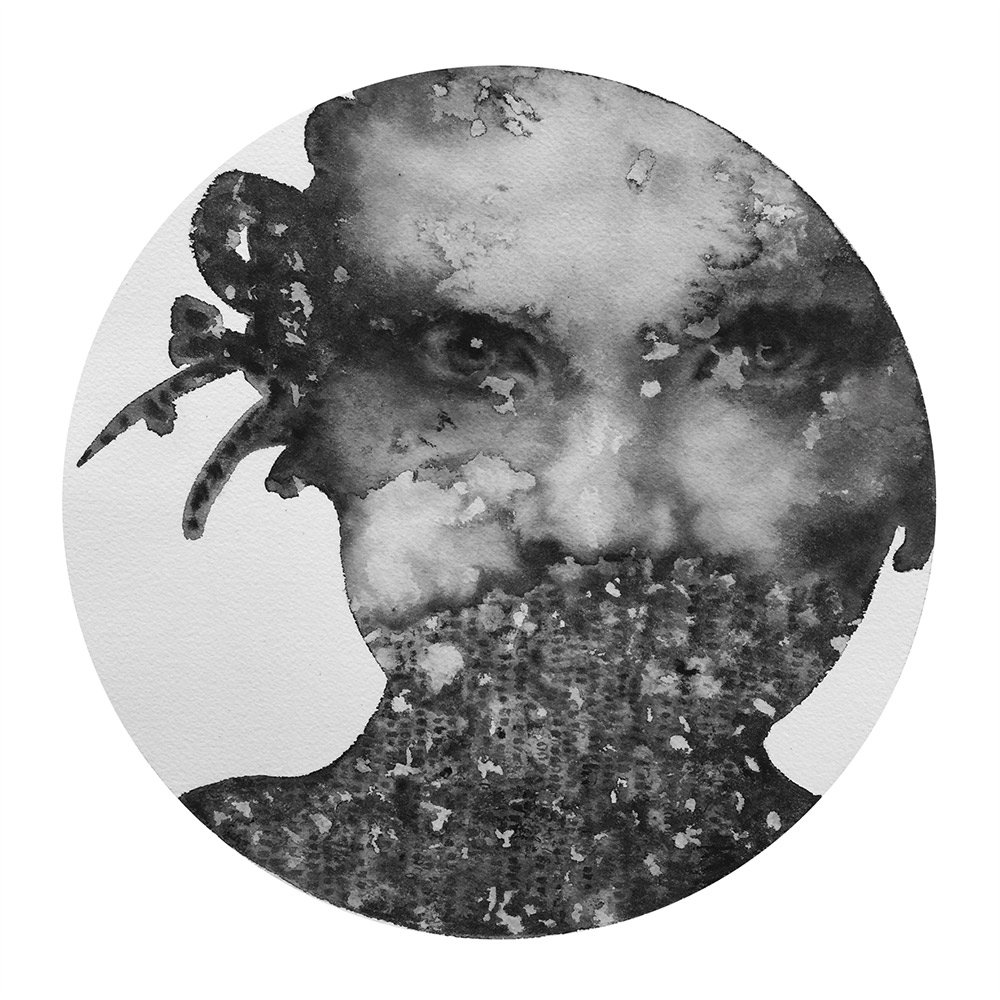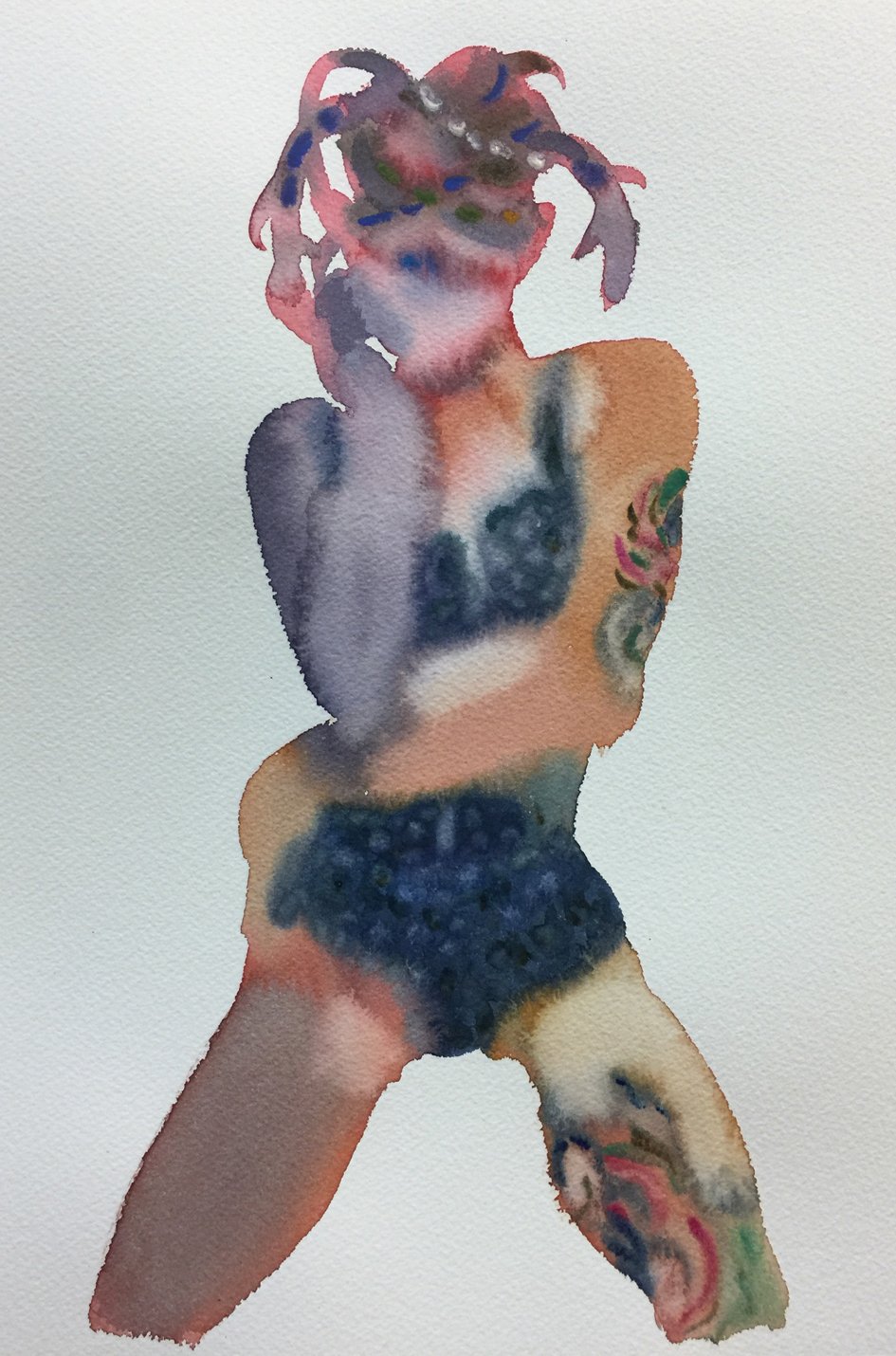Faces & Figures
Jim Kempner Fine Art is pleased to present, Faces & Figures, an exhibition featuring an eclectic collection of portraits and figures in various mediums by 40 artists. The showcase includes a rare museum poster from the iconic movie HEAD, created by Gerd Stern and USCO, a set of dancing lenticular figures by Julian Opie and a huge, startling unique woodcut from Christian Marclay's Scream series put together from Japanese manga imagery. The exhibition spans ten decades stretching from a classic 1933 drypoint by Picasso of a cubist head to a brand new set of etchings by Cecily Brown, The Five Senses. A salon style wall of portraits includes an
Anxious Man etching by Rashid Johnson, a reduction linocut of Lucas Samaras by Chuck Close, a Henry Miller lithograph and a self portrait by Carole Freeman among many others.
Please drop by and ENJOY.
Derrick Adams Katelyn Alain Vincent Arcilesi Christopher Beane Ana Benaroya Bette Blank Cecily Brown Marc Chagall Long-Bin Chen Chuck Close Brett Crawford Richard Diebenkorn Carole Freeman Lucian Freud Bruce Gilbert Luis Gonzalez Palma Gianfranco Gorgoni Akwasi Gyambibi Jeffery Hargrave Jessica Helfand David Hockney Rashid Johnson Cynthia Karalla Deborah Kass Alex Katz Jim Kempner William Kentridge Mark Kostabi John Lennon Suzanne Levesque Christian Marclay Henri Matisse Ralph Mercer Henry Miller Vik Muniz Dana Nehdaran Julian Opie Susu Pianchupattana Pablo Picasso Jonathan Santlofer Jesse Scaturro Cindy Sherman Kiki Smith Emily Mae Smith Lynn Stein Gerd Stern & USCO Boaz Vaadia Andy Warhol Shanlin Ye
Derrick Adams
Derrick Adams (b. 1970 in Baltimore) is an American visual and performance artist and curator. His work probes the influence of popular culture on the formation of self-image, and the relationship between man and monument as they coexist and embody one another. Adams is also deeply immersed in questions of how African American experiences intersect with art history, American iconography, and consumerism. His tendency to layer, hybridize, and collage not only images and materials, but also different types of sensory experiences, link the artist to an estimable lineage of pioneers ranging from Hannah Höch and Henri Matisse, to William H. Johnson and Romare Bearden. Adams’ work resides in the permanent collections of The Metropolitan Museum of Art, The Studio Museum in Harlem, the Whitney Museum of American Art, the Virginia Museum of Fine Arts, and the Birmingham Museum of Art.
“Mirroring Idealism captures a feeling in the moment while sitting in the barber or salon chair – the deep thoughts we have sitting still while surrounded by so many cultural signifiers subconsciously influencing our perspective of self-worth and the values we hold as a society.”
Katelyn Alain
Katelyn Alain has exhibited in solo and group shows at galleries across the United States including Arcilesi Homberg Fine Art (New York, NY), Curtis Gallery (New Canaan, CT), Skotia Gallery (Santa Fe, NM), Thinkspace (Los Angeles, CA), Stricoff Fine Art (New York, NY), and Dedee Shattuck Gallery (Westport, MA). Her work has been featured in publications including The Wall Street Journal, American Art Collector Magazine, Studio Visit Magazine, and Juxtapoz. In early 2020 she was a visiting artist and guest lecturer at Brooklyn College as part of the GASU visiting artist program.
Katelyn Alain received her MA and MFA in Painting at the University of Wisconsin-Madison in 2008 and her BFA from Hartford Art School in 2001. She studied at the Institute for American Universities in Aix-en-Provence, France in 2000 and was a resident at Vermont Studio Center in 2007. Alain currently lives and works in Brooklyn, NY.
Vincent Arcilesi
Vincent Arcilesi, began his journey at Furman University before earning BFAs from the University of Oklahoma and the School of the Art Institute of Chicago. Since 1966, he's exhibited globally, often alongside renowned artists, and defied conventional modernism, exploring landscapes and cityscapes. Arcilesi's tenure at FIT, teaching for over 40 years, reflects his dedication to art education. His legacy is marked by a seamless fusion of painterly fluidity and narrative drama, enriching the art world with his profound vision.
“My work reflects my two great passions in life: the human figure and the landscape. I try to portray the nude form, both male and female, in all its sensuous glory. I have painted compositions since 1964 and started painting landscapes on site in 1966. While at School of the Art Institute of Chicago, where I was trained as an abstract painter, I fell under the spell of the great French Impressionist paintings in their collection. Over the years, the two strains have become intermingled so that many of my large paintings depict nude figures in various landscapes, mythic as well as real.”
- Vincent Arcilesi
Christopher Beane
After studying photography at the renowned Rhode Island School of Design, Christopher Beane moved to NYC, where he currently resides. In the mid-1990s, Beane stumbled across and became seduced by the early morning alchemy of the 28th street flower market - he found his unforeseen muse. Imports of both local and foreign became the artist's subject matter for the next several decades. He began by first documenting. Then he slowly started to formulate his own unique fingerprint in the fine art world. Noted curator and art historian, Anthony F. Janson proclaims Beane to be "the love child of Georgia O'Keefe and Robert Mapplethorpe" (Beane Flower. Artisan, 2008). Since finding his inspiration, Beane has devoted years to his subjects, amassing a vast archive of works. He began with his early, effortless, pure black and whites which soon evolved into wonderful color studies that matured into magical mixed media studies. Transitions from his camouflage studies of orchids and exotics have matured into the complex, layered compositions of his Baroquecoco series in which his painted collaged cutouts contrast and disguise the most seductive of pistils and petals. In this series, he challenges the viewer's perspective with rich detail, grandeur and flamboyance. His multiple variations and combinations seem incredulous, yet correct. Abstract movement and gestures evoke the sensuousness found in the natural world. This energy is reminiscent of his past series entitled Orgy, as well as the infinite color spectrum present in his decade-long Ranunculus studies. His Baroquecoco series seems to encapsulate the past and absorb ‘all’ in the post-everything environment of today.
Ana Benaroya
Ana Benaroya (b. 1986, New York, NY) celebrates women with muscular bodies, challenging traditional views of femininity. Through her paintings and drawings, she shows women in powerful roles, with bold presence. The muscles in her figures express female desire and a queer sensibility. Her artworks use vibrant colors, creating intense and captivating compositions. She draws inspiration from diverse sources like Peter Saul and superhero comics. Her current exhibition focuses on women and water, exploring queer desire through art history and modern references. Benaroya aims to depict female nudes with desire and passion, showing women as sex objects for each other, a perspective often overlooked.
Bette Blank
Bette Blank paints with purpose, weaving narratives and emotions with oils, egg tempera, watercolors, and more. Her work, infused with humor and whimsy, explores the transformative power of everyday objects and sensations. From royal weddings to biblical figures, her art invites viewers to see the world anew. Educated at esteemed institutions like the Brooklyn Museum School of Art, Bette holds a PhD in Engineering from U.C. Berkeley, blending creativity with analytical rigor.
Cecily Brown
Cecily Brown (b. 1969, London) blends modern and classical influences in her art. Based in New York, she gained fame for her playful paintings featuring rabbits and erotic themes. Her work often challenges traditional gender dynamics and incorporates bold colors and dynamic brushwork. Brown's process involves using drawing to guide her paintings, and she enjoys experimenting with multiple canvases at once. She's known for titles inspired by classic films and music. In 2013, she created a series based on a Jimi Hendrix album cover. Despite comparisons to famous artists, Brown's work stands out for its unique blend of humor and sensuality.
Marc Chagall
Marc Chagall (1887-1985), a Russian-French artist, melded Cubism and Fauvism with a distinctive blend of Symbolism. Raised in a Hasidic Jewish family, his cultural background heavily influenced his art. After studying art in Saint Petersburg, he moved to Paris in 1910, absorbing avant-garde movements. Chagall's signature style is characterized by dreamlike, poetic imagery featuring flying figures, animals, and vibrant colors. Fleeing Nazi occupation during World War II, he sought refuge in the United States. Returning to France post-war, Chagall continued creating art until his death in 1985, leaving behind a lasting legacy of influential and imaginative works.
Long-Bin Chen
Long-Bin Chen is a self-taught artist from Taiwan who gathers discarded books and magazines for his sculpture busts of Buddhas and other historical figures, giving a renewed value to the meaning of discarded supplies. Incorporating texts that are relevant to a particular sculpture, Chen seeks to combine ideas and concepts from the East with those of the West. His use of recycled materials stresses the challenges presented by endless human consumption and waste and comments on the changes of information documentation brought about by modern technology. Chen was the recipient of a Joan Mitchell Foundation Award in 1996, and was given a grant from the National Endowment for the Arts, in both 1997 and 1998. He has exhibited widely across the United States, Germany, Taiwan, and China. His work is in the collections of Deutsche Bank Art, the Jordan Schnitzer Museum of Art, the University of Oregon, the Patrick Koenig Collection Poet House, the John Guyfrend Collection, the Sarabhai Family Collection, the West Collection, the Taiwan National Museum, the Osaka Culture Bureau, Allan Chasanoff, the Suho Paper Museum, among others.
Chuck Close
Chuck Close, born in 1940, is a renowned American contemporary artist recognized for his photorealist paintings and intricate portraits. Despite facing partial paralysis due to a spinal artery collapse at 48, Close continued to create art using unconventional methods. He is known for his distinctive style, employing a grid system to meticulously render large-scale portraits with shapes and colors. Emerging in the 1960s, Close became associated with the photorealist movement. Throughout his career, he explored various mediums such as printmaking, photography, and tapestries, challenging traditional notions of portraiture and perception. Close's innovative approach and resilience have earned him numerous awards, including the National Medal of Arts and the Presidential Medal of Freedom, leaving a lasting impact on the contemporary art world.
Brett Crawford
Painter, metal sculptor, street artist, toy designer, and illustrator are only a few of the titles Southern California based artist Brett Crawford holds up his sleeve. Not bound by any one specific skill, this multi-talented artists work can be seen on walls and in galleries across the country. Brett Crawford plays with surreal settings and fairytale imagery to evoke the observer’s imagination. Viewers must fully immerse themselves in each work to find the hidden story within. Here, there are no wrong answers. Each piece is an intentional collaborative exchange designed to stimulate creativity in the observer. Trailed throughout the collection are familiar pop references and iconic symbols, conspicuously placed like Easter eggs as incentives to delve deeper into his reality of limitless love and inspiration.
Richard Diebenkorn
A highly influential mid-century American artist, Richard Diebenkorn (1922-1993) is known for his abstract landscape paintings, in particular the "Ocean Park" series, which he exhibited when representing America at the 1978 Venice Biennale. Diebenkorn's work is often highly gestural and layered, his use of the medium comparable to that of contemporaries like the Abstract Expressionist Willem de Kooning, an artist he greatly admired. Diebenkorn, however, preferred California to the competitive New York art scene, and became a leading artist among the Bay Area Figurative painters. Even at its most abstract, Diebenkorn's work remains rooted in the outside world, and he is celebrated for capturing his surroundings on canvas without representing them literally. Moving between New Mexico, Illinois, and, ultimately, California, his work progresses in tune with the changing architecture and landscape. Diebenkorn also painted portraits, expertly combining figurative and abstract styles in the same picture.
Carole Freeman
Carole Freeman is an American / Canadian contemporary figurative artist known for evocative portraits and narrative paintings of cultural, social, political, and personal significance. The subjects of her pictures are intensely rendered with a distinctive intimacy, whether they are celebrities, artists, historical or newsworthy figures, family, friends, or strangers. Freeman works in series from both life and varied source material such as personal photography and found photographs, film stills, mass media images, or famous artworks. Her paintings, produced with gestural brush marks and a command of drawing, are processed through close observation, empathy, and an instinctual understanding of the time in which she lives.
Freeman currently lives and works in Toronto, Canada.
Lucian Freud
Iconic German artist Lucian Freud is known for his psychologically complex painted portraits and figures that reveal a heightened discomfort between artist and model. Freud was influenced by Francis Bacon’s menacing and emotional images, extracting his tendency to juxtapose beauty and disgust. His subjects were often people he knew well, from his mother to his studio assistant, tightly cropped and rendered in a muted palate. Freud was reliant upon this relationship with the sitter and utilized heavy layers of pain to present the intricacies of their psyche. His painting process was painstakingly time consuming and required his models sit for upwards of a few hundred hours, employing “hope and memory and sensuality and involvement” for his dense works. Cityscapes from his studio window and nature studies provided the counterpoint to his cerebral portraiture. The artist also worked extensively in printmaking, generating a large body of etchings of intense emotional strength.
Freud’s work has been exhibited at Centre Pompidou, Paris, Kunsthal Rotterdam, the Netherlands, The British Museum, London, Tate Britain, London, Museum of Contemporary Art, Los Angeles, Fundacio La Caixa, Barcelona, Museum für Moderne Kunst, Frankfurt, Museo de Arte Moderno, Mexico City, Seattle Art Museum, Washington, Metropolitan Museum of Art, New York, National Portrait Gallery, London, Haus der Kunst, Munich, and Museum of Modern Art, New York, among many others. He represented Britain at the 27th Venice Biennale in 1954, and had a retrospective at the Venice Biennale in 2005. He painted Queen Elizabeth II in 2000, and was shortlisted for the Turner Prize in 1988 and 1989.
Bruce Gilbert
Bruce Gilbert is an award winning New York City-based portrait photographer/photojournalist. His blend of lighting expertise, humor and passion for the unexpected are his photo signature.
Bruce's work has appeared in such notable publications as Vanity Fair, Time Magazine, Newsweek, Sports Illustrated, U.S. News and World Report, Der Spiegel, Paris Match, The New York Times, The Los Angeles Times and The Chicago Tribune.
His client list of national organizations, universities and corporations includes the American Federation of Teachers, the UJA, the Earth Institute at Columbia University, Columbia University Law School, Rockefeller University, Fordham University, the University of Chicago, Marquette University, St. Louis University, Sarah Lawrence College, IBM, GE Credit Corp., MCI/Worldcom and Freddie Mac.
Bruce graduated from Boston University and was a staff photographer at Newsday and The Miami Herald. His awards include Pictures of the Year, Northern Short Course, Southern Short Course, California Photographer of the Year, Atlanta Seminar, National Press Photographers, New York Press Photographers, and from the Associated Press.
He travels extensively, both nationally and internationally, for work and pleasure.
Luis Gonzalez Palma
Born in Guatemala City, Luis Gonzalez Palma studied architecture and cinematography at the Universidad de San Carlos de Guatemala, and then later turned to photography. His work has been exhibited since 1989 to present in more than 58 expositions throughout America and Europe and is considered a modernist photographer.
He is of mixed or “mestizo” background, focusing particularly on the indigenous Mayas and the mestizo people of Guatemala. His photographs often raise awareness of cultural issues. For example in his "bodyguard" series, the distant gazes and mystical costumes expose some of the stereotypes of the people of Guatemala. Symbolism is key in Gonzalez-Palma’s body of work. His unique technique of leaving the whites of the subjects' eyes un-tinted in the sepia-toned photographs intensifies the gaze, and perhaps "portrays their souls". In addition, he often layers his images with text.
Gianfranco Gorgoni
Gianfranco Gorgoni was an Italian-born photographer. In 1968, Gorgoni came to the United States from Rome, Italy, and soon after met Leo Castelli, who advised him how to meet young up-and-coming artists of the day. He had been a successful commercial and fashion photographer in Italy but had become enthralled with the new art movements blossoming in Europe and the States. After photographing artists for an article in the Italian magazine L'Espresso, Gorgoni wanted to continue exploring that world. Castelli introduced him to his stable of artists including Jasper Johns, Robert Rauschenberg, Roy Lichtenstein, Richard Serra, and many others. This led to the book Beyond the Canvas, a remarkable visual record of the art world in the 1970's and 80's. One of the most important contributions to the art world is his documentation of the first Land Art Earthworks, including The Spiral Jetty by Robert Smithson, Michael Heizer's motorcycle drawings in the desert sand, and Walter De Maria's chalk drawings in the Mojave Desert.
Gorgoni was also an accomplished photojournalist who freelanced for a number of major magazines including Time, Life, Fortune, Newsweek, The New York Times Magazine, as well as many from the international press. A few highlights of his career include talking his way into the American Embassy during the Iran Hostage crisis, witnessing a surprise visit by President Sadat of Egypt to the State of Israel, taking the last photo of the Argentinian warship Belgrano before the English sank it, and becoming acquainted with Fidel Castro in his attempt to document the real life of Cubans.
Akwasi Gyambibi
“Life inspires what I depict. The wood surface is where I express my deepest emotions, thought and experiences. My works explore race, religion, ideas of traditional love and politics. My point of view is revealed by the free-hand of decorating on wood with burn marks resulting from controlled application of fire flame or heated gun directly on wood burning to create textures to define my subject and emotionally connect with my audience. I hope that when people see my works, they get to witness something beautiful whilst experiencing healing and respite from all that is negative in the world.”
- Akwasi Gyambibi
Jeffrey Hargrave
Jeffrey Hargrave is a North Carolina born, African-American artist based in New York. Hargrave deals with representations of African-Americans, often putting them in the context of art history, remaking works by artists such as Matisse to include black figures, with racially charged stereotypical imagery.
Tapping into his own memories of growing up in the midst of a sharply divided community, Hargrave translates his personal experiences into playful, yet biting images that mix art-history clichés and racial stereotypes. Ultimately, the artist seeks to engage viewers in a dialogue on class, religion, sexuality, racial identity and privilege based on a repertoire of familiar images.
Hargrave attended the University of the North Carolina School of the Arts, Rhode Island School of Design and Skowhegan School of Painting and Sculpture. His works have been exhibited at the Bronx Museum of the Arts, and other prestigious venues.
Courtesy of Ethan Cohen Gallery
Jessica Helfand
Jessica Helfand (b. 1960) is an artist, designer, and writer. She grew up in Paris and New York City, and received her BA and MFA from Yale University where she taught for more than two decades. A founding editor of Design Observer, she is the author of numerous books on visual and cultural criticism. The first-ever recipient, in 2010, of the Henry Wolf Residency at the American Academy in Rome, Jessica Helfand has been a Director’s Guest at Civitella Ranieri, a fellow at the Bogliasco Foundation, and the Artist in Residence at Caltech. She lives in New England.
David Hockney
David Hockney (b. 1937) is one of the most influential British artists of the 20th century. He is perhaps best known for his depictions of swimming pools, people, and landscapes around Los Angeles, as in his seminal work A Bigger Splash (1967). Hockney's oeuvre ranges from collaged photography and Pop Art posters, to Cubist-inspired abstractions and plein-air paintings of the English countryside. Also working with printmaking, set design, and iPad drawings, Hockney credits Pablo Picasso and Henri Matisse for influencing his distinctive and varied style. Hockney attended the Royal College of Art and studied under Francis Bacon and Peter Blake. In 1963, the artist traveled to California for the first time and fell in love with the bright sunshine and easygoing lifestyle. Since that time, Hockney has altered living and working between Yorkshire, United Kingdom, and Los Angeles, CA.
Rashid Johnson
Born in Chicago in 1977, Rashid Johnson is among an influential cadre of contemporary American artists whose work employs a wide range of media to explore themes of art history, individual and shared cultural identities, personal narratives, literature, philosophy, matenality, and critical history. Johnson received a BA in Photography from Columbia College in Chicago and studied for his masters at the School of the Art Institute of Chicago. Johnson's practice quickly expanded to embrace a wide range of media--including sculpture, painting, drawing, film making, and installation--yielding a complex multidisciplinary practice that incorporates diverse materials rich with symbolism and personal history. Johnsons work is known for its narrative embedding of a pointed range of everyday materials and objects, often associated with his childhood and frequently referencing aspects of history and cultural identity. Many of Johnson’s more recent works delve into existential themes such as personal and collective anxiety, interiority, and liminal space.
Cynthia Karalla
Cynthia Karalla is an alchemist, an activist, and an experimental artist who thrives on pushing the boundaries of contemporary reality. Her work transcends conventional art forms, blending elements of architecture, photography, fine arts, and alchemical philosophy. In her journey as an artist, she has harnessed the power of transforming negatives into positives, both in her life and her art.
Deborah Kass
Deborah Kass (born 1952) is an American artist whose work explores the intersection of pop culture, art history, and the construction of self. Deborah Kass works in mixed media, and is most recognized for her paintings, prints, photography, sculptures and neon lighting installations. Kass's early work mimics and reworks signature styles of iconic male artists of the 20th century including Frank Stella, Andy Warhol, Jackson Pollock, and Ed Ruscha. Kass's technique of appropriation is a critical commentary on the intersection of social power relations, identity politics, and the historically dominant position of male artists in the art world.
Alex Katz
Alex Katz is a contemporary American artist renowned for his large-format paintings of landscapes, flowers, and portraits of his wife Ada. Katz’s flattened forms and simplification of detail are trademarks of works such as Gray Day (1992). “We compete for audiences, as artists. I’m competing with the Abstract Expressionist guys. I’ll knock ‘em off the wall,” he once remarked. “If you put my work next to an aggressive A.E. painting, I’ll eat most of ‘em up. And I want to compete with the kids. I’m there with the kids.” Born on July 24, 1927 in Brooklyn, NY, as a young man, he attended the Cooper Union School of Art and the Skowhegan School of Painting and Sculpture in Maine. It was here that the artist first began to make plein-air paintings of the Maine landscape. During the mid-1950s, Katz fell into the small circle of artists known as the 10th Street Scene, which included Lois Dodd, Larry Rivers, and Fairfield Porter, among others. Over the following decades, he developed his hallmark style of painting while also experimenting with collage, printmaking, and painted aluminum cutouts. His work has served as a beacon of style to younger generations of artists, including Elizabeth Peyton and Julian Opie. Katz maintains residences in Lincolnville, ME, and New York, NY. Today, his works are included in the collections of The Museum of Modern Art in New York, the Art Institute of Chicago, the Colby College Museum of Art in Waterville, ME, the Albertina Museum in Vienna, and the National Gallery in Washington, D.C., among others.lifestyle. Since that time, Hockney has altered living and working between Yorkshire, United Kingdom, and Los Angeles, CA.
William Kentridge
William Kentridge (South African, b.1955) is a filmmaker, draughtsman, and sculptor, and the son of Sydney Kentridge, one of South Africa’’s foremost anti-apartheid lawyers. After studying politics and African history at the University of Witwatersrand in Johannesburg from 1973 until 1976, Kentridge studied Fine Art at the Johannesburg Art Foundation (1976–1978) and the École Jacques Lecoq in Paris. His interest in theater—specifically in acting and design—influenced his artistic style and inspired a desire to connect film and drawing. Kentridge’’s drawings, usually rendered using pastels and charcoal, were often created as studies for animated films.
His work was further inspired by artistic satirists, including Honoré Daumier (French, 1808–1879), Francisco de Goya (Spanish, 1746-1828), and William Hogarth (British, 1697-1764). By the 1990s, Kentridge had established an international audience and reputation. His works have been exhibited in solo exhibitions at many museums, including the Museum of Modern Art in New York, the Albertina Museum in Vienna, the San Francisco Museum of Modern Art, and the Philadelphia Museum of Art. Since the 1980s, Kentridge has been awarded various prizes, such as the Kaiserring Prize, the Carnegie Prize, the Standard Bank Young Artist Award, and the Red Ribbon Award for Short Fiction. He currently lives and works in Johannesburg, South Africa.
Mark Kostabi
Mark Kostabi is an American artist and composer best known for his paintings of faceless mannequin-like figures, often set in surrealistic landscapes or scenes from art history. His work explores a variety of themes, including suicide, love, and the role of technology in the modern world. The artist is commonly associated with his painting Use Your Illusion, which was the cover art for Guns N’ Roses’s album of the same name. Born on November 27, 1960 in Los Angeles, CA to Estonian immigrants, he studied art at California State University in Fullerton before moving to New York in 1982. During the mid-1980’s, Kostabi was an active participant in the East Village cultural scene, and became well known in the area for publishing self-interviews. Over the course of his career, the artist has cultivated a controversial media persona after claiming credit for works that were designed and executed by his assistants. Kostabi’s works are in the collections of the National Gallery of Art in Washington, D.C., the Princeton University Art Museum, The Museum of Modern Art in New York, and the Solomon R. Guggenheim Museum in New York, among others. He currently divides his time between New York, NY and Rome, Italy.
Suzanne Levesque
Suzanne Levesque (b. 1983, Luxembourg) is an American artist. She works in many media including drawings, paintings, objects and installations. Her work focuses on the ephemerality and vulnerability of human existence. “We struggle into being and then are subject to a string of moments we sort and combine, trying to understand our condition with a somewhat medical curiosity. Through paintings, drawings and sometimes installations I analyze this behavior by scrutinizing these blips and pings of human nature like specimens.” Levesque studied painting at the Maryland Institute College of Art (MICA) in Baltimore, Maryland (USA) on a DAAD scholarship (German Academic Exchange Service), with Mimi Gross and Raoul Middleman, among others. She lives and works in New York and Berlin.
Christian Marclay
For nearly 40 years, Christian Marclay (b. 1955, San Rafael, CA) has been exploring the connections between vision and sound, creating works in which these two sensibilities enrich and challenge one another. Marclay garnered international acclaim at the 54th Venice Biennale for his masterpiece video work, The Clock, for which he received the prestigious Golden Lion award. Marclay’s work has been exhibited in museums and galleries internationally, including one-person presentations at the Hirshhorn Museum and Sculpture Garden in Washington D.C. (1990); the Musée d’art et d’histoire, Geneva (1995); the Kunsthaus, Zurich (1997); the Museum of Contemporary Art, Chicago (2001); the San Francisco Museum of Modern Art (2002); Musée d’Art moderne et contemporain, Geneva (2008); the Whitney Museum of American Art, New York (2010); Leeum, Samsung Museum of Art, Seoul (2010); Garage Center for Contemporary Culture, Moscow (2011); the Museu d’Art Contemporani de Barcelona (2019); and Centre Georges Pompidou, Paris (2022). His work is in the public collections of the Metropolitan Museum of Art in New York; the Smithsonian American Art Museum, Washington D.C.; the Tate Modern, London; and the Centre Georges Pompidou, Paris.
Henri Matisse
Henri Matisse was one of the most influential French artists of the 20th century. Matisse’s use of unmodulated color, inventive figuration, and decorative patterns helped redefine many of the formal tenets of painting.
“What I dream of is an art of balance, of purity and serenity, devoid of troubling or depressing subject matter.”
Ralph Mercer
Ralph Mercer, a New England native, is an alumnus of Rhode Island School of Design where he obtained a BFA in photography and studied with Harry Callahan and Bert Beaver. He received his MFA in visual design from the University of Massachusetts, where he studied with Dietmar Winkler and Elaine Fisher, and taught photography as a graduate teaching assistant. His photographs depict the human figure, nature, and the everyday environment, all interpreted with his sense of visual poetry, whether they be figure studies or abstractions of the visible world. Much of Ralph’s work is licensed by the Getty Images agency.
Vik Muniz
Vik Muniz (b. 1961) is an influential contemporary Brazilian artist best known for his complex photographic works. Sourcing a wide variety of eclectic and found materials-chocolate, jelly, toys, and trash-Muniz recreates iconic art historical works and scenes from popular culture. By displaying the final piece as a photograph, he explores memory, perception, and the nature of images as represented in arts and communication. Born in São Paulo, Brazil, the artist starred in the documentary film Waste Land (2010) tracking the course of his project Pictures of Garbage (2008). This series of large-scale images was created with the help of catadores-the people who scour Rio's sizable trash dump for recyclable materials. Muniz was named a UNESCO Goodwill Ambassador for his social activism, and the artist has had his work exhibitied at the Solomon R. Guggenheim Museum in New York, The Museum of Modern Art in New York, the Tate Modern in London, and the Centre National de la Photographie in Paris, among others. He currently lives and works between Brooklyn, NY and Rio de Janeiro, Brazil.
Dana Nehdaran
Dana Nehdaran was born in the Iranian neighborhood of Chaharbagh on the anniversary of his maternal grandfather’s death in 1982. He took his given name, Rahmatollah, from his grandfather who was an art, antique and rare gem merchant; however, he has always been known by his Persian name, Dana, meaning wise. His grandparents’ home held a marvelous collection of paintings and antiques, and his mother and father were arts aficionados, traveling the world to view noted institutional and residential collections. As a child, Dana took great wonder and inspiration from this family’s passion for art and became motivated to study painting after discovering an uncle’s discarded box of art supplies at his grandmother’s house. His mother recognized his passion and talent, nurtured by sharing images from her world travels, and enrolled Dana in private art classes with Hassanpour, a well-known artist who taught Dana fundamentals of art that would eventually lead him to study painting at the Soureh Art University in Shiraz. The most recent series of Esther’s Children was shown in Tehran, Dubai and Los Angeles. Of the more than eight series that Dana has created, all have a focus on the tension between past and present. Dana has been a member of the Iranian Painter Association from 2007.
Julian Opie
Julian Opie is a contemporary British artist known for his distinctive depictions of figures, portraits, and landscapes. The highly stylized treatment Opie gives his subjects—whereby features are created by thick black outlines and filled in with solid areas of flat color—is a blend of Pop Art and Minimalism with a wholly contemporary sensibility. “The process of reading things as simulations but knowing at the same time that they are real is quite central to my work,” Opie has observed of his own art. Born in 1958 in London, United Kingdom, Opie studied with Michael-Craig Martin at Goldsmiths in London during the early 1980s. His earliest works consisted of painted steel sculptures exploring the relationship between visual and spatial observation. He is part of the group known as New British Sculpture, alongside artists such as Anish Kapoor and Tony Cragg. Over time, the artist has expanded his practice to include painting, installation, and cover art for albums. The artist’s works are part of the collections of The Museum of Modern Art in New York, the National Portrait Gallery in London, the Stedelijk Museum in Amsterdam, and others. Opie currently lives and works in his hometown of London, United Kingdom.
Susu Pianchupattana
Susu Pianchupattana was born and raised in Bangkok city, Thailand. She studied painting from the New York Studio School and graduated in 2007. Her time has been divided between Bangkok and the United States; living in several cities and currently at the Jersey Shore. She also plays drums in the band “Johnny Nameless”. Susu continues to establish her work with galleries, museums and private collectors around the world. Her work is regarded for abstract gesture. Awards include the Hohenberg Travel Grant (Italy), Skowhegan School of Painting and Sculpture (Fellowship), Masur Museum of Art’s 35th Annual Juried Competition (Best Painting), VCCA Resident Fellow (Virginia Center of the Creative Arts), Award of Merit at the 18th DaDun Fine Arts Exhibition of Taichung City (Taiwan), 2021 Mercedes Matter Award.
Pablo Picasso
Painter, draftsman, sculptor, printmaker, photographer, ceramicist, designer, playwright, and poet, Pablo Ruiz Picasso (1881–1973) contributed peerless innovations to the visual culture of the twentieth century. He created several of the great masterpieces of modernism, including Les Demoiselles d’Avignon (1907) and Guernica (1937), co-invented collage and Cubism, designed groundbreaking sets and costumes for the theater, coined the term “sur-realism,” and invented assembled sculpture (assemblage). Driven by boundless artistic energies and ambitions, he was the very personification of the avant-garde, and many of the movements of the last century could not help but develop in his orbit as artists worked consciously either to absorb his influence or rebel in his shadow.
Alison Saar
Alison Saar (b. 1956 in Los Angeles, California) grew up in an artistic environment. Her mother is the acclaimed collagist and assemblage artist Betye Saar and her father, Richard Saar, was a painter and art conservator. Through her sculpture, drawings, and prints, Alison Saar explores the subjects of racism, sexism, ageism, and the specific challenges of being bi-racial in America. Saar’s style encompasses a multitude of personal, artistic, and cultural references that reflect the plurality of her experiences. She often incorporates found objects such as rough-hewn wood, old tin ceiling panels, nails, shards of pottery, and glass vessels into her sculptures or chooses to draw and print on vintage fabrics instead of paper. Her work depicts defiant and strong figures and boldly comments on issues relating to gender, race, heritage, and history. Saar received her BA from Scripps College and her MFA from Otis College of Art and Design. She has been awarded many distinguished honors, including a residency at the Studio Museum in Harlem and awards from the Joan Mitchell Foundation, the National Endowment for the Arts, and the Guggenheim Foundation. She has been commissioned to create many public installations, including a sculpture for the Harriet Tubman Memorial in New York and a monument to the Great Northern Migration in Chicago. Most recently, she was commissioned to create a 12-foot-tall figural sculpture to coincide with her notable solo exhibition Of Aether and Earthe, presented by The Armory Center for the Arts and the Benton Museum of Art in 2020-21. A major exhibition of her prints was first shown at the University of North Texas before it toured to seven other institutions (2019-22). She has received the SGCI Lifetime Achievement Award in Printmaking, Joan Mitchell Foundation Fellowship, Anonymous Was A Woman grant, a Guggenheim Fellowship, and more. Her work can be found in numerous museum collections, including the Hirshhorn Museum and Sculpture Garden, Museum of Modern Art in New York, Metropolitan Museum of Art, Whitney Museum for American Art, and the National Museum of Women in the Arts, to name a few. Alison Saar lives and works in Los Angeles, California.
Jonathan Santlofer
Jonathan Santlofer is an author and artist. His newest novel The Last Mona Lisa will be published by Sourcebook Landmark on August 17, 2021. He is the author of the memoir The Widower’s Notebook, the international bestselling novel, The Death Artist, as well as Color Blind, The Killing Art, The Murder Notebook, and Anatomy of Fear, which won the Nero Award for best crime novel of 2009. He recently created and edited The New York Times “Notable Book,” It Occurs To Me that I Am America, a collection of original work by more than 50 of today’s best known authors and artists. He is editor/contributor of The New York Times best selling serial novel Inherit the Dead, editor and contributor of L.A. NOIRE: The Collected Stories, Akashic Books’ The Marijuana Chronicles, and co-editor, contributor and illustrator of the short story anthology, The Dark End of the Street. His stories appear in numerous collections, including The Rich & the Dead, edited by Nelson De Mille, New Jersey Noir, edited by Joyce Carol Oates, Lawrence Block’s two bestselling anthologies, In Sunlight and In Shadow and Alive In Form and Color. His stories have also appeared in such publications as Ellery Queen Magazine and the Strand Magazine.
Jonathan is the recipient of two National Endowment for the Arts grants, has been a Visiting Artist at the American Academy In Rome, the Vermont Studio Center, and serves on the board of Yaddo, one of the oldest arts communities in the U.S.
Jesse Scaturro
Jesse Scaturro Is a multidisciplinary artist currently working in paint and clay. Through his work Jesse explores themes of time, psychological space, and the adoption of randomness and the willingness to let chance select a direction. He is a graduate of the School of Visual Arts and received his MFA from Brooklyn College. He lives and works in Brooklyn NY.
Cindy Sherman
Cindy Sherman (American, b.1954) is a photographer who incorporates aspects of feminism, performance art, cultural criticism, and the body and identity politics into her provocative work. Sherman abandoned painting for photography while attending the State University of New York at Buffalo, and in 1976, moved to New York City to pursue a career as a photographer.
She gained broad critical acclaim for her famous early series Untitled Film Stills, taking photographs of herself dressed as invented characters embodying female cliche, such as ‘the bored housewife’, ‘the sexy librarian’, and ‘the ambitious career girl’. Sherman continued to use herself as a subject in several other series, including her History Portraits, in which she inserted herself into Old Master paintings as a way of reexamining the role of the female within them. She mainly photographed herself in disguises, and explored the darker side of culture in her depictions of perverted fairy tales, war, and sex. Through her work, Sherman examined anxiety, disgust, the lurid, and the grotesque. She is the recipient of the MacArthur Award and Hasselblad Award for Photography, among other honors. Sherman has more recently returned to using her own body in her work as the subject of simplified portraits of female types. She lives and works in New York City.
Kiki Smith
Kiki Smith has been known since the 1980s for her multidisciplinary work that explores embodiment and the natural world. She uses a broad variety of materials to continuously expand and evolve a body of work that includes sculpture, printmaking, photography, drawing, and textiles. Smith has been the subject of numerous solo exhibitions worldwide including over 25 museum exhibitions. Her work has been featured at five Venice Biennales, including the 2017 edition. She is a member of the American Academy of Arts and Letters and the American Academy of Arts and Sciences, and in 2017 was awarded the title of Honorary Royal Academician by the Royal Academy of Arts, London. Previously, Smith was recognized in 2006 by TIME Magazine as one of the “TIME 100: The People Who Shape Our World.” Other awards include the Skowhegan Medal for Sculpture in 2000; the 2009 Edward MacDowell Medal; the 2010 Nelson A. Rockefeller Award, Purchase College School of the Arts; the 2013 U.S. Department of State Medal of Arts, conferred by Hillary Clinton; and the 2016 Lifetime Achievement Award from the International Sculpture Center, among others. She is an adjunct professor at NYU and Columbia University.
Emily Mae Smith
Emily Mae Smith creates lively compositions that offer sly social and political commentary, with a nod to distinct historical painting movements, such as symbolism, surrealism, and pop art. Her lexicon of signs and symbols begins with her avatar, an anthropomorphic broomstick figure. Simultaneously referencing the painter’s brush, a domestic tool associated with women’s work, and the phallus, the figure continually transforms across Smith’s body of work. By adopting a variety of guises, the broom and other symbols speak to contemporary subjects, including gender, sexuality, capitalism, and violence.
Smith has been the subject of solo exhibitions at Le Consortium, Dijon, and the Wadsworth Atheneum Museum of Art, Hartford, Connecticut.
Lynn Stein
During a lifetime of painting, Stein has returned to several themes repeatedly; women, fashion, cinema, and movement. Most recently, depicting the luminosity of ambient, atmospheric and artificial light sources has provided her with a vocabulary that allows her to work looser and more abstractly in her oil paintings.
"I use pop culture references focusing on celebrity, fashion, and cinema in combination with my private emotional life that changes from day to day. I find inspiration in the halls of the internet, as well as photos i take and interpret them using my imagination. Having grown up as the daughter of a staff LIFE photographer, I grew up thinking in pictures."
- Lynn Stein
Gerd Stern & USCO
Gerd Stern is a poet and multimedia artist with a background in both film and video. He emigrated to the United States as a refugee from Hitler in 1936 and later studied at the City College of New York and briefly at Black Mountain College. During the 1950s he befriended Beat poets such as Carl Solomon and Allen Ginsberg and was an active participant in the San Francisco art scene. He lived on a barge in Sausalito, worked as manager for Harry Partch and Maya Angelou, and hosted jam sessions with Chet Baker and other jazz musicians. He worked at public radio station KPFA and was a publicity agent and journalist, writing for Playboy and other magazines. Stern cofounded USCO, a cooperative group of artists, poets, filmmakers, engineers, and composers, and was president of the public company Intermedia Systems Corporation, which helped arrange and coordinate Woodstock in 1969. Gerd Stern’s first show of electronic sculptures and collages was held at Allan Stone Gallery in 1962. In 1963 his one-person exhibition at the San Francisco Museum of Art featured the multimedia performance Who R U & What’s Happening?, which was also performed at the University of British Columbia with a lecture by Marshall McLuhan. He has published several books of poetry, including First Poems and Others, 1952; Afterimage, 1965, a serigraphed selection with drawings by David Weinrib; Conch Tales, 1984; Fragments, 2002; and WhenThen, 2018. An oral history of Stern was published by the University of California, Berkeley, in 2002. Stern has been an artist in residence at DAAD (German Academic Exchange Service) in Berlin, the Bemis Center for Contemporary Art in Omaha, Nebraska, and the Emily Harvey Foundation in Venice, Italy. The Stanford University Library acquired Stern’s papers in 2013.
Boaz Vaadia
Boaz Vaadia is an Israeli born, internationally renowned, New York-based sculptor who works primarily in stone and bronze. For Vaadia, stone is an enduring aspect of human environments. He collected slate from the streets of New York's Soho when its sidewalks were torn apart in the mid-1980s. By exploring the connection between man and nature, Vaadia creates sculptures and environments that are contemplative and serene. Hand carving each individual piece of stone with a hammer and chisel, Vaadia then stacks each piece to create figurative sculptures named after figures from the Old Testament. His process parallels natural transformations in stone and recalls ancient methods of construction that rely on the cut and weight of the stone rather than on mortar. His work is sited in various public locations and included in many museums and private collections throughout the world including the Metropolitan Museum of Art, New York, NY; the Museum of Modern Art, San Francisco, CA; the Tokyo Metropolitan Teien Museum, Japan; the Hakone Open Air Museum, Japan; the Norton Gallery of Art, West Palm Beach, FL; the Tel-Aviv Museum, Israel; the Jewish Museum, New York, NY; and The Israel Museum, Israel.
Andy Warhol
Andy Warhol (1928-1987) was a leading figure in the Pop Art movement. Like his contemporaries Roy Lichtenstein and Robert Rauschenberg, Warhol wryly responded to the mass media of the 1960s. His silkscreen-printed paintings of cultural and consumer icons, featuring Marilyn Monroe and Elizabeth Taylor, as well as Campbell's Soup cans and Brillo boxes, would make him one of the most famous artists of his generation. Born in Pittsburgh, PA, he graduated from the Carnegie Institute of Technology in 1949, before moving to New York to pursue a career in commercial illustration. Warhol's illustrations for editorials like Vogue and Glamour during the 1950s led him to financial success. Warhol was a gay man, keeping much of his life private life a secret, although he sometimes referenced his sexuality through art. This is perhaps most evident in his drawings of male nudes from the 1950s, and later in his film Sleep (1963), which portrays the poet John Giorno sleeping nude. In 1964, Warhol rented a studio loft on East 47th Street in Midtown Manhattan, which was later known as the Factory. Quick to realize the cult of celebrity, the Factory acted as a hub for fashionable movie stars, models, and artists who became fodder for his prints and films, as well as a performance venue for The Velvet Underground. The prolific artist worked across painting, sculpture, and new media throughout the 1960s and 1970s. Always looking for current subject matter, during the 1980s he collaborated with several younger artists, including Jean-Michel Basquiat, Francesco Clemente, and Keith Haring. Warhol died tragically at age 58 in New York, NY, following complications from routine gall bladder surgery. After his death, the artist's estate became The Andy Warhol Foundation and in 1994, a museum dedicated to the artist and his oeuvre opened in his native Pittsburgh. Today, his works are held in the collections of the Art Institute of Chicago, the Whitney Museum of American Art in New York, and the Tate Gallery in London, among others.
Shanlin Ye
“I grew up and received my education in China. I moved to the US in 2012 and blended into this country of immigrants. Still I feel quite lost from time to time. After a couple of years of living in the US, I came to feel lost when I visited China, too. Recently, I have worked on paper with heads and figures to create the current show, Monologue. I am fascinated by the fluidity and ungoverned nature of watercolor. I enjoy watching the water and the color dancing on paper. It is like a poem. My work is not about realism or perfection; rather, it addresses the opposite: the coarse, imperfect and aberrant. I try to reveal the unseen part of human existence and human identification in my paintings. It is a spiritual communication when I paint a portrait, and I will be thrilled if you can find a way to ‘talk’ to the people you meet in this body of work."- Shanlin Ye, 2016
